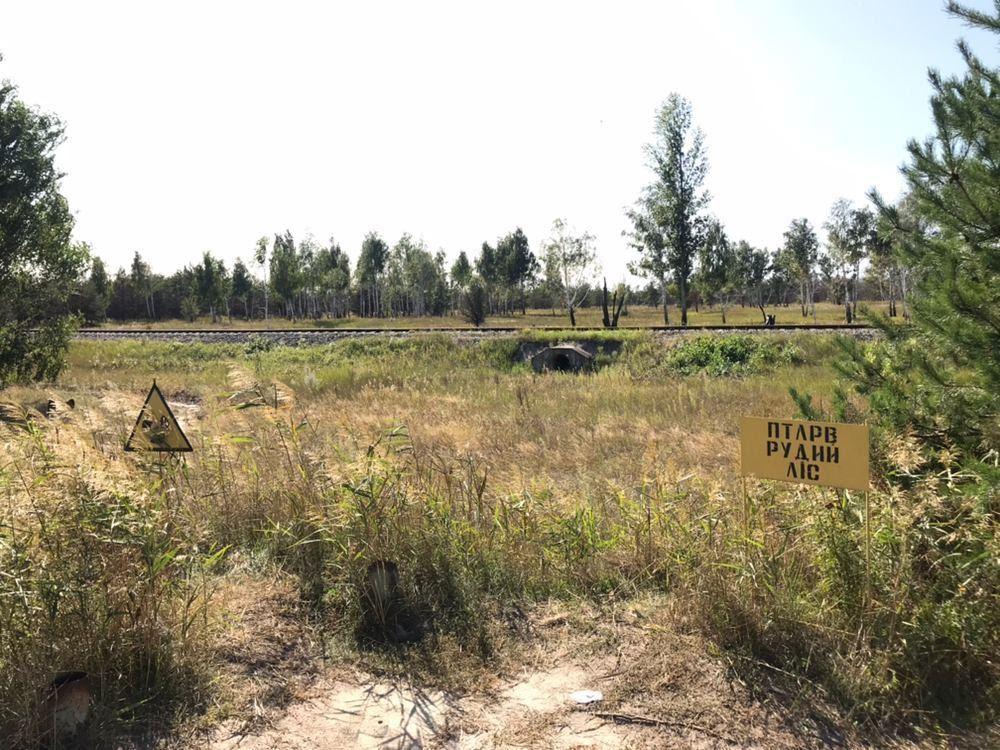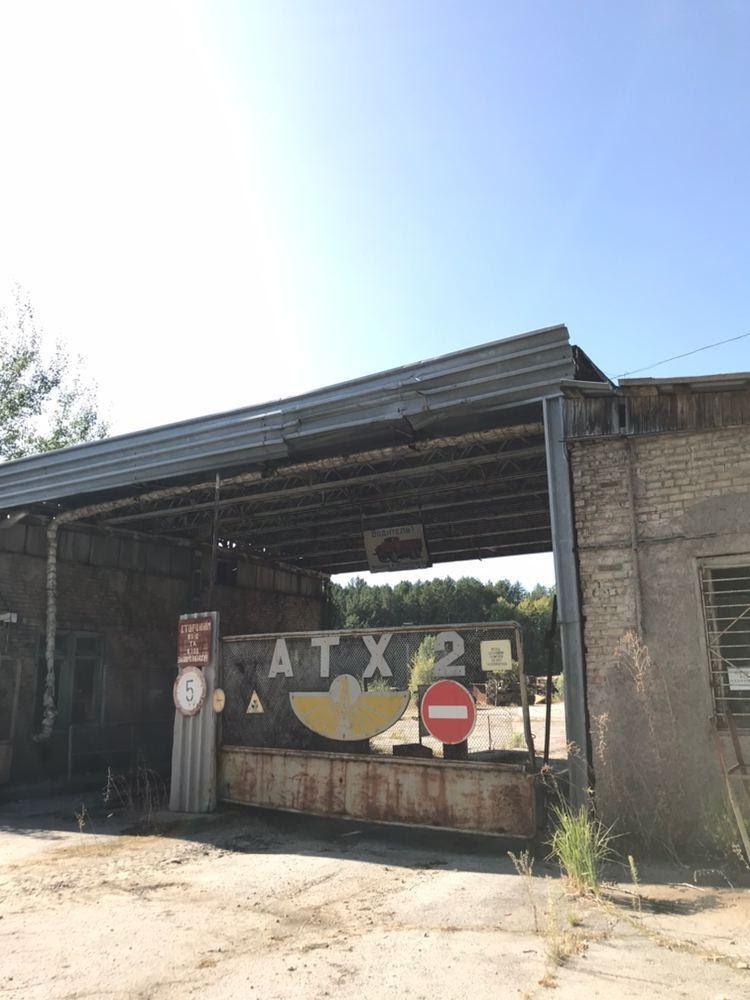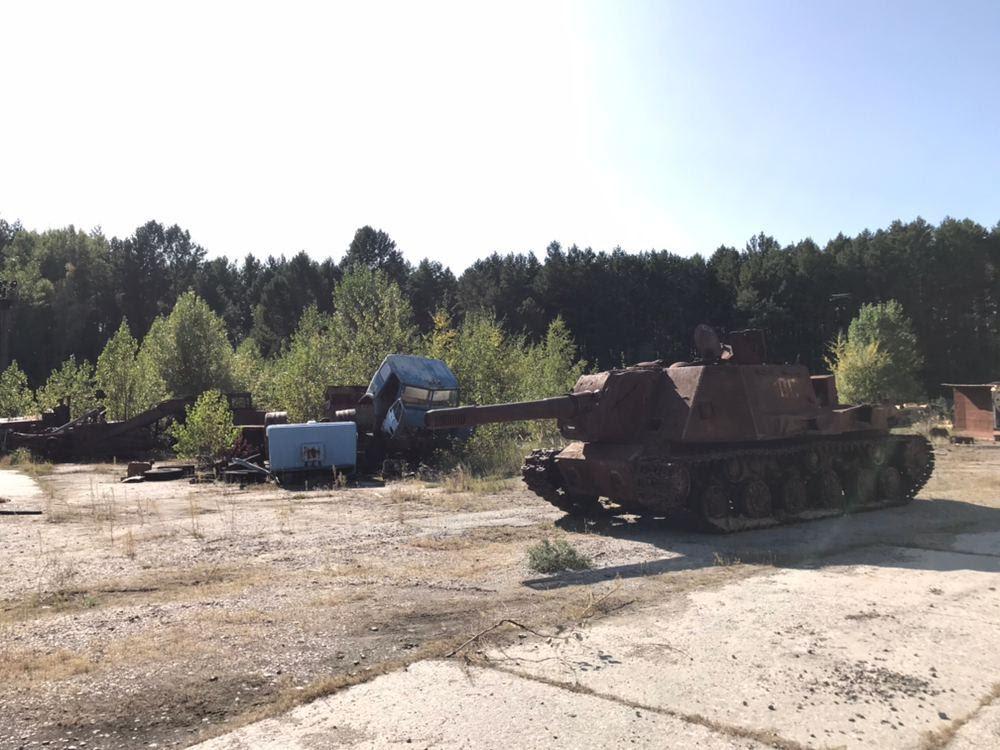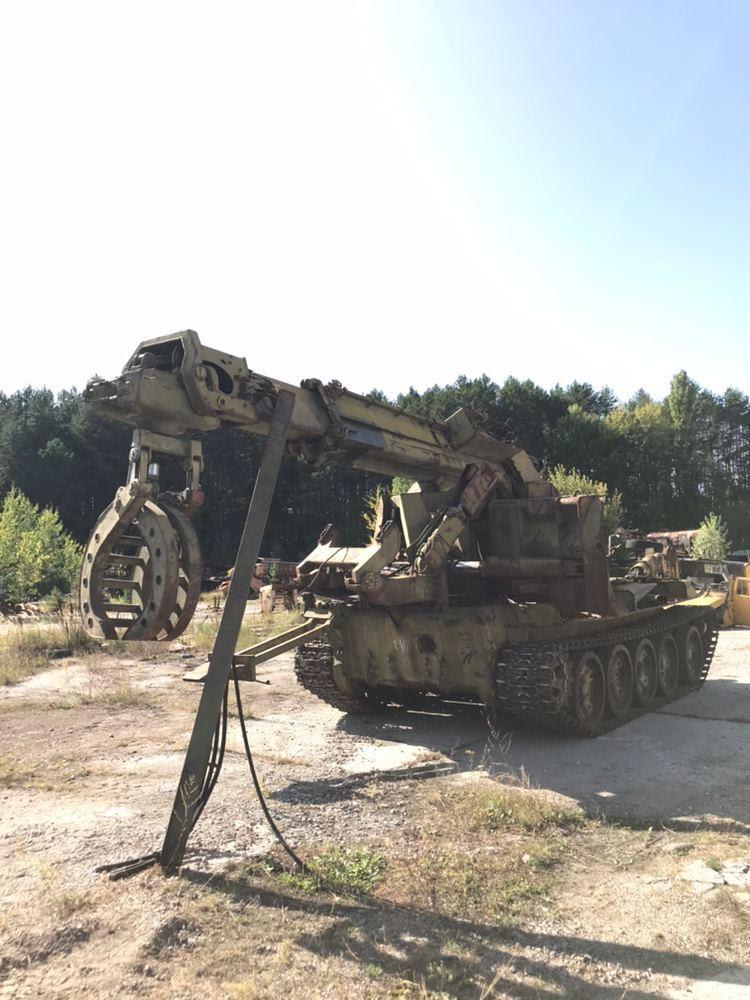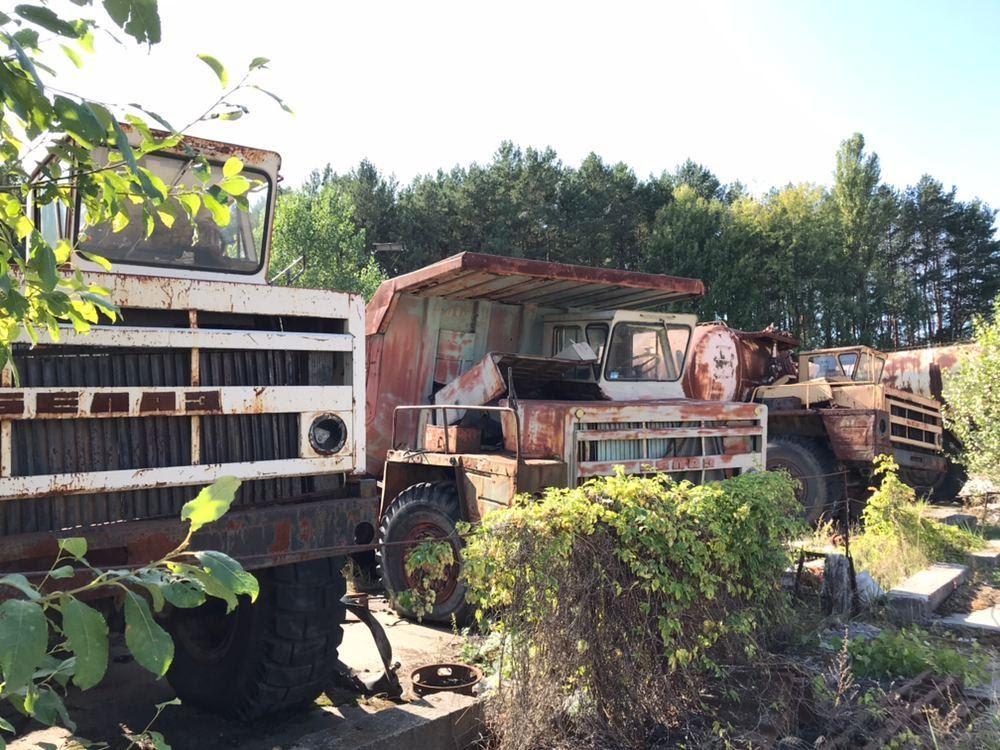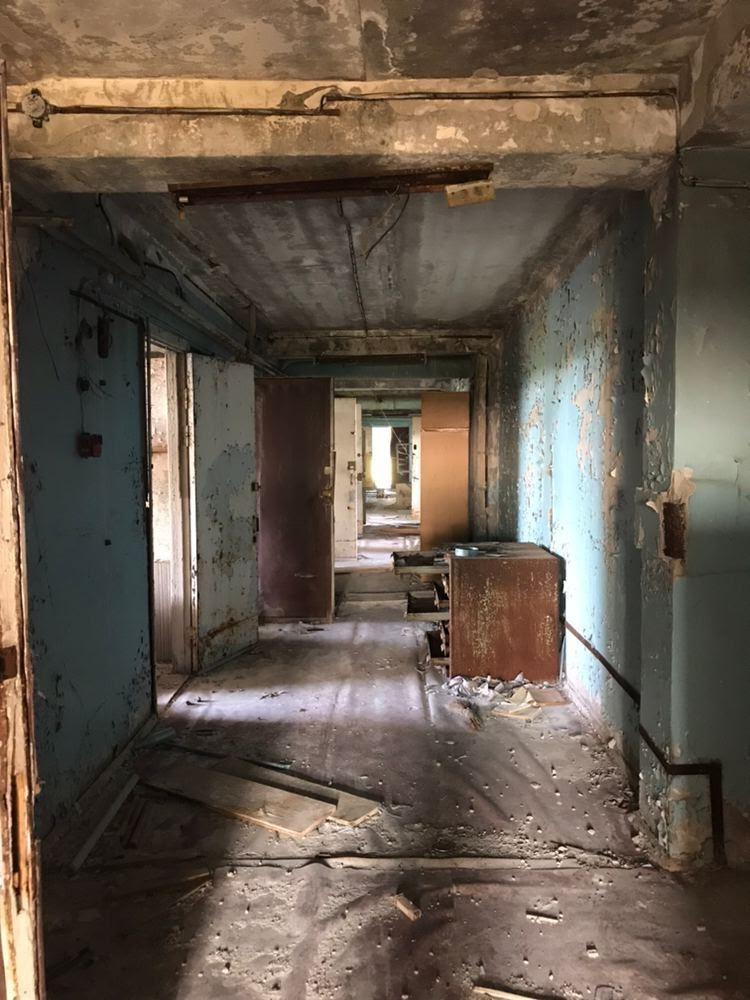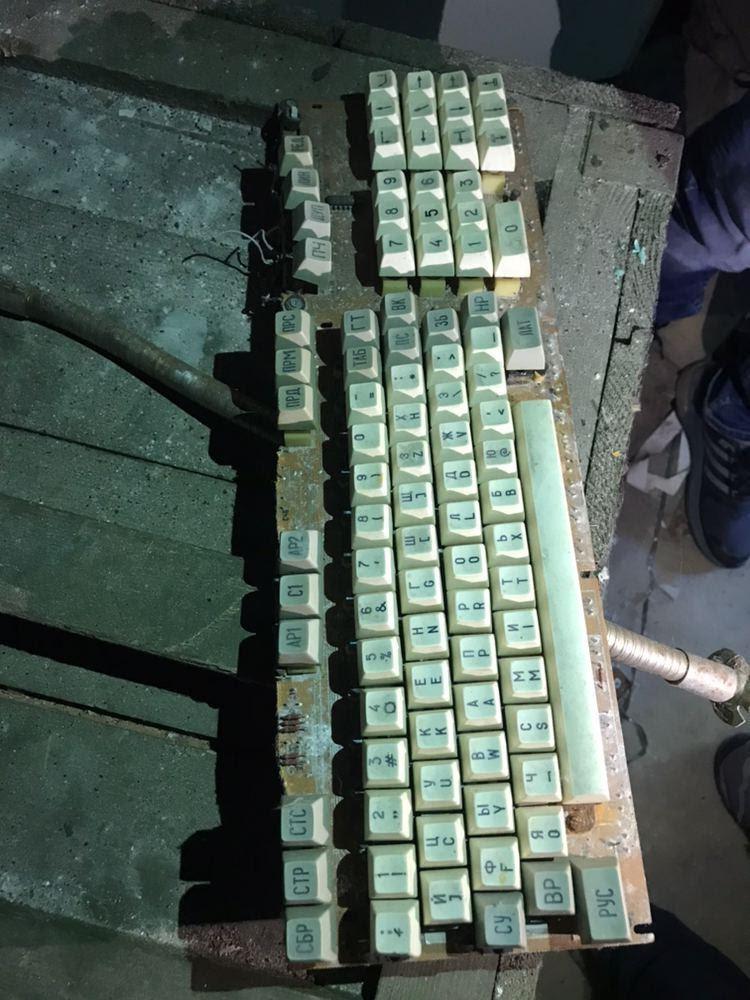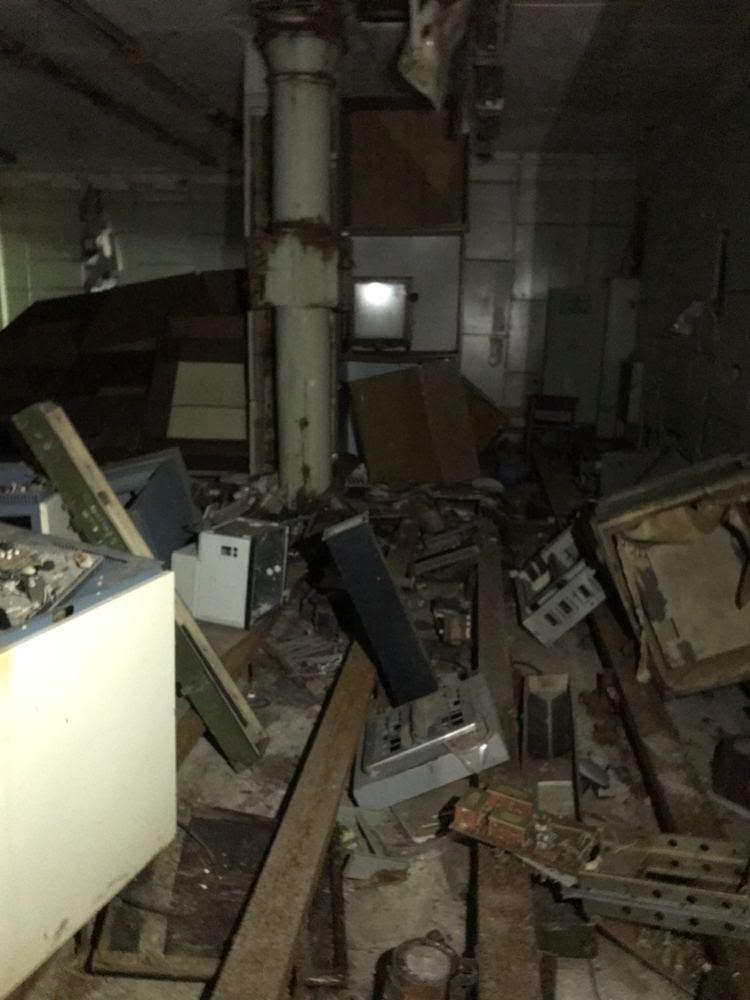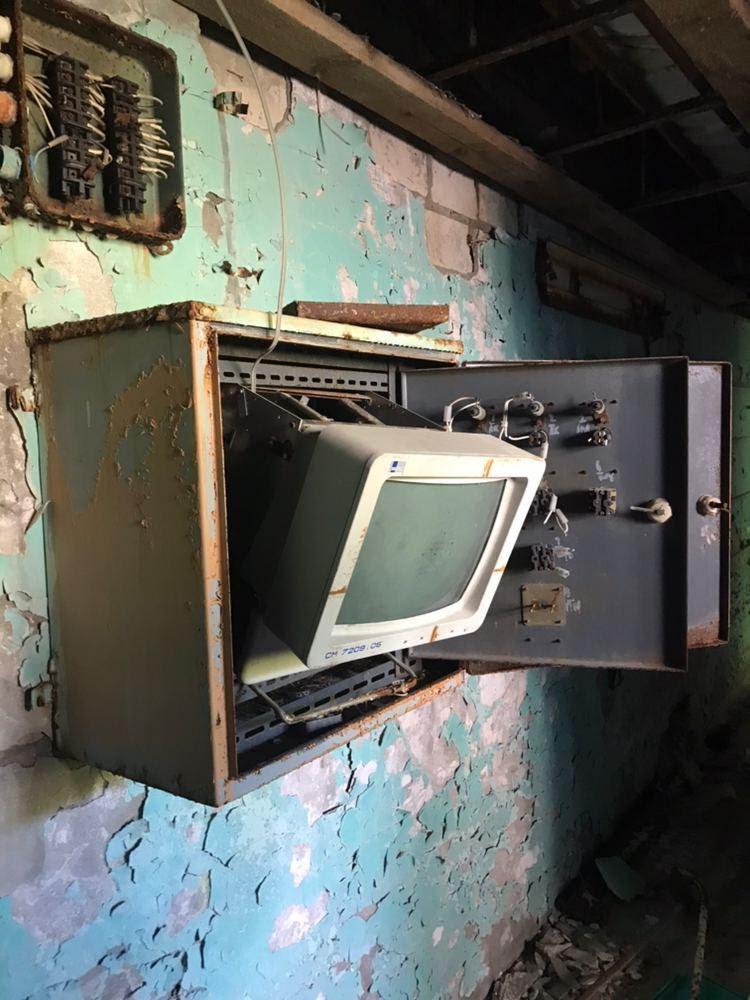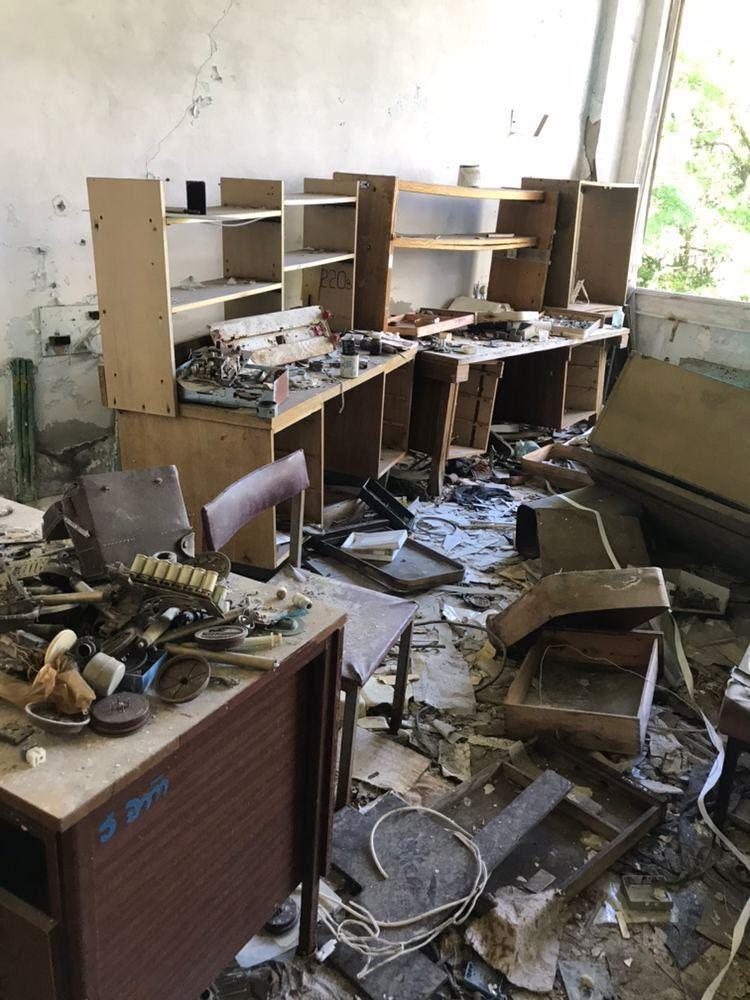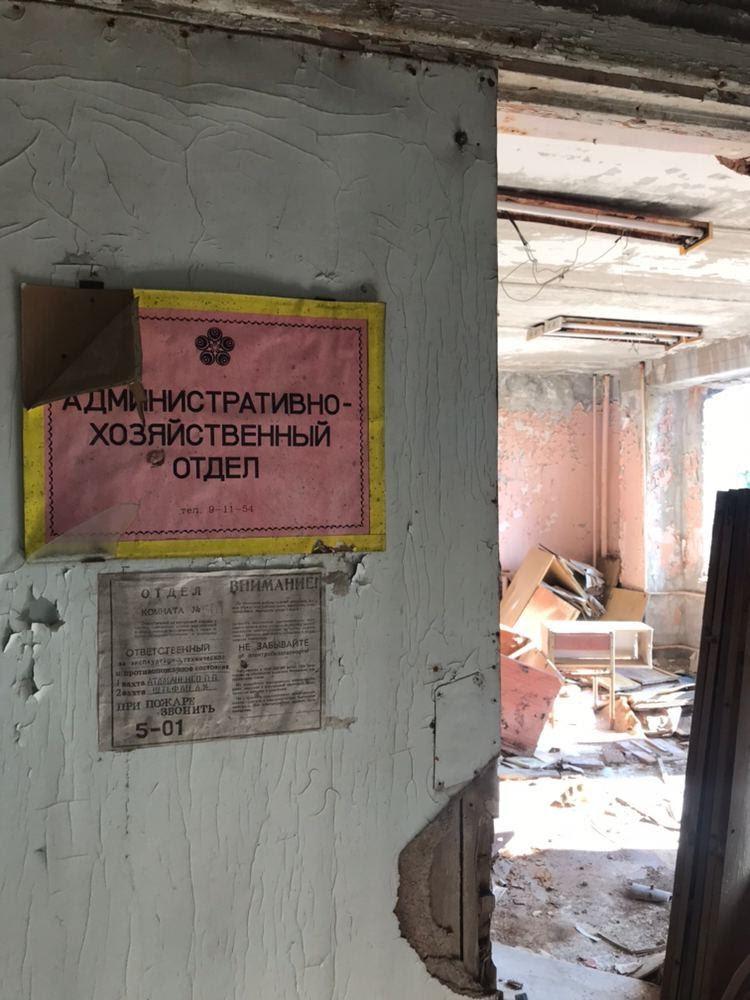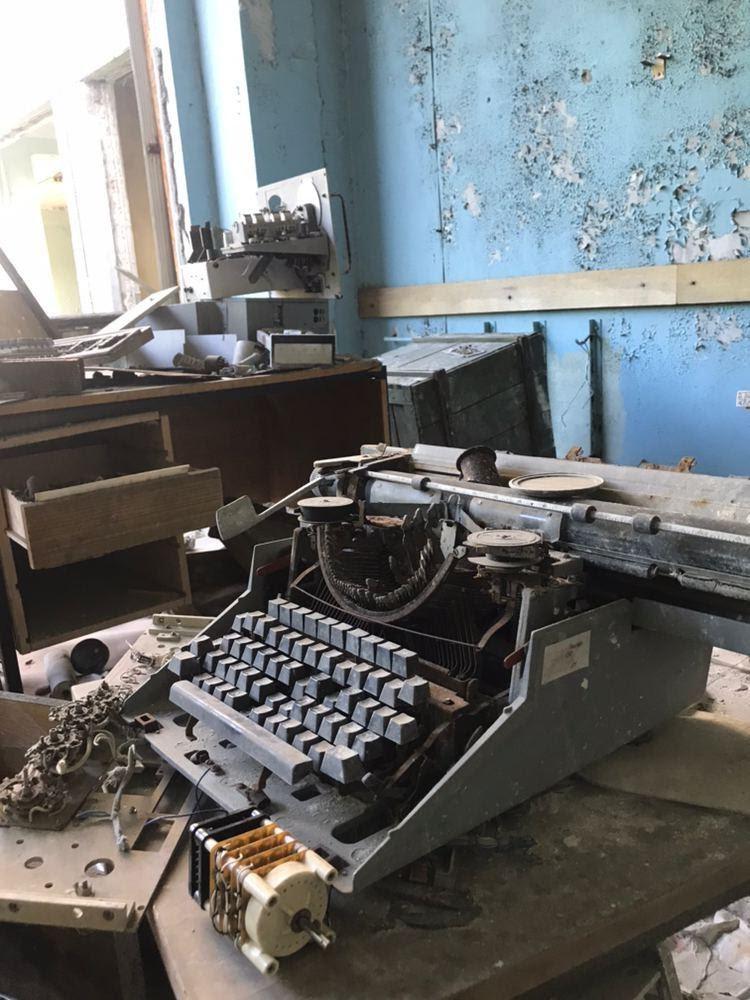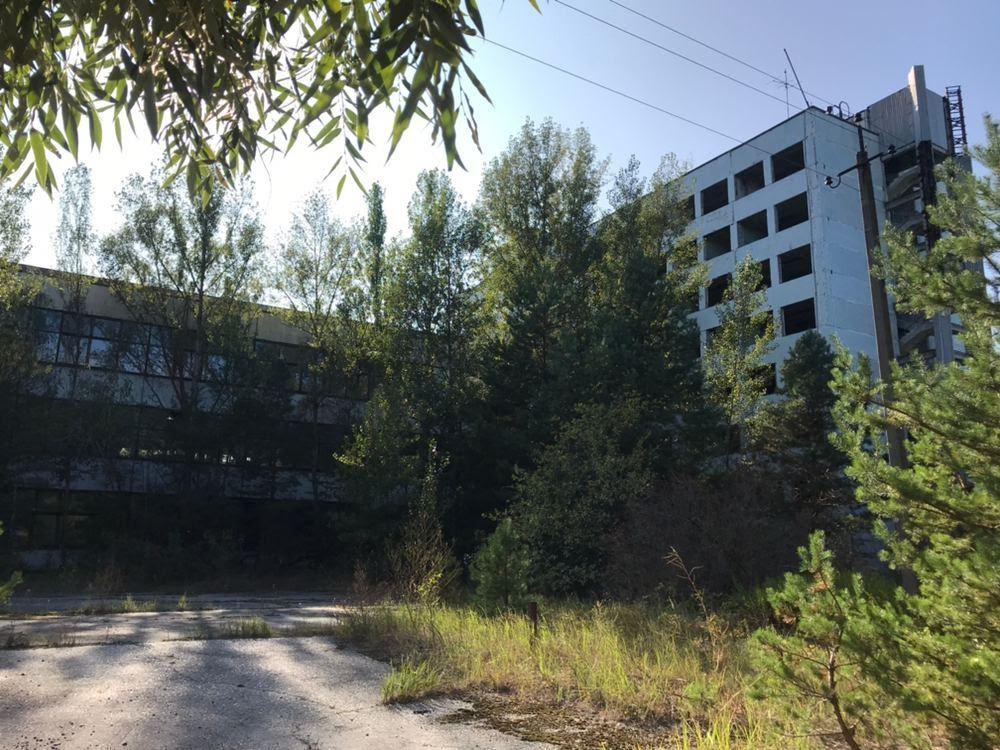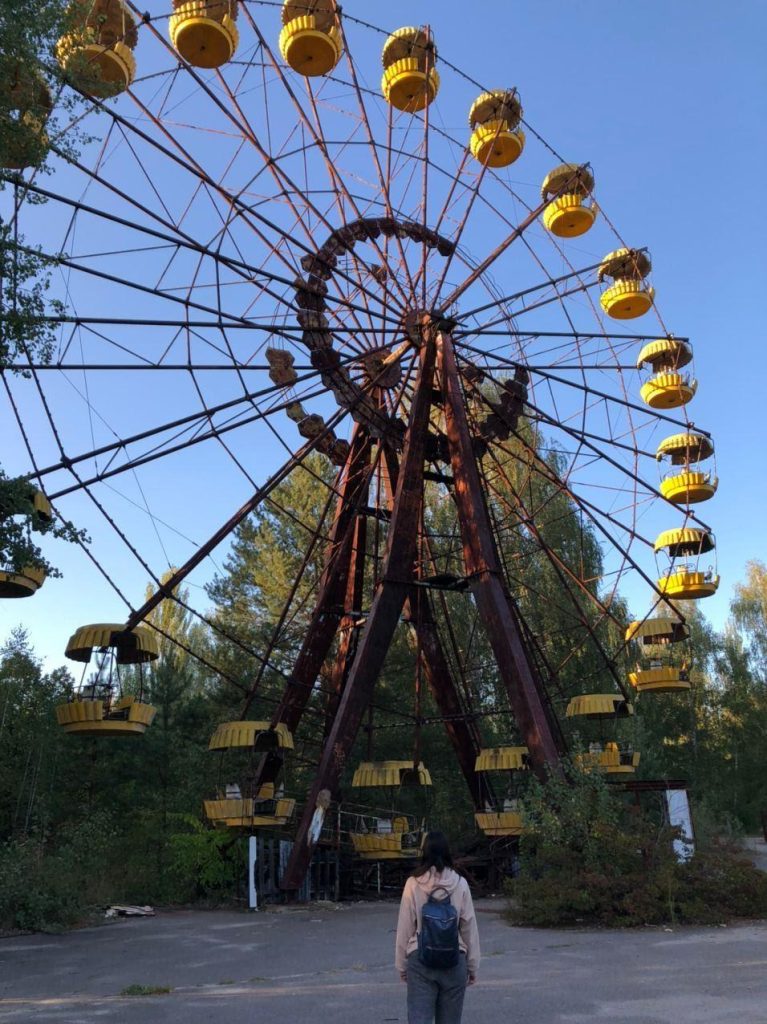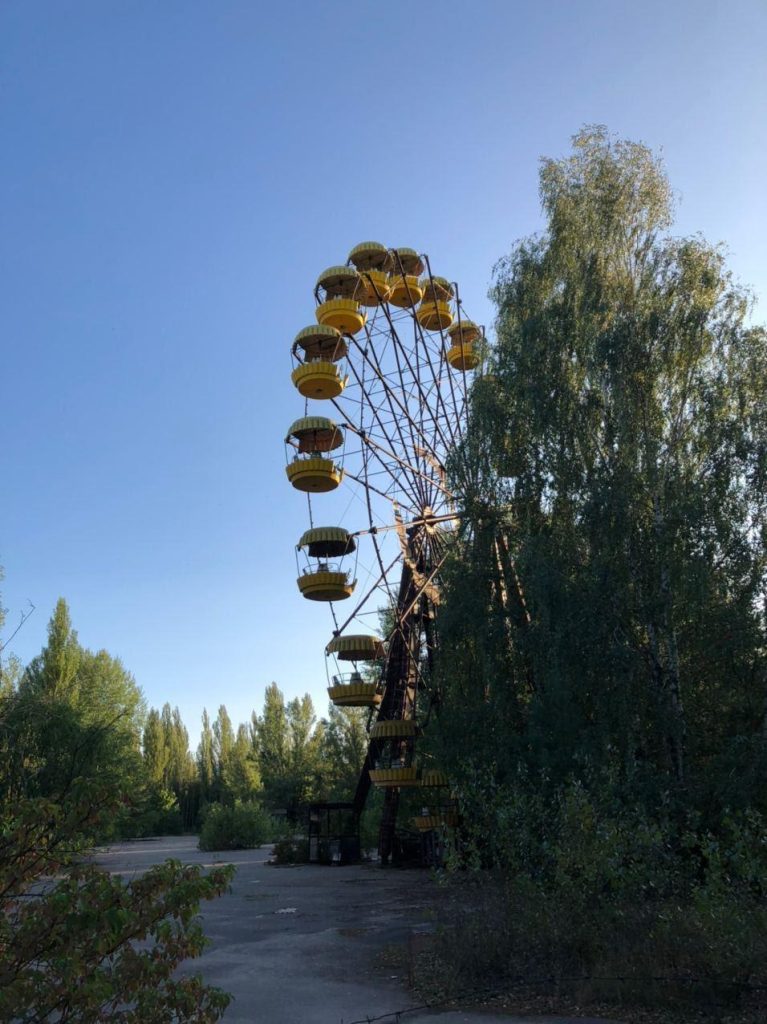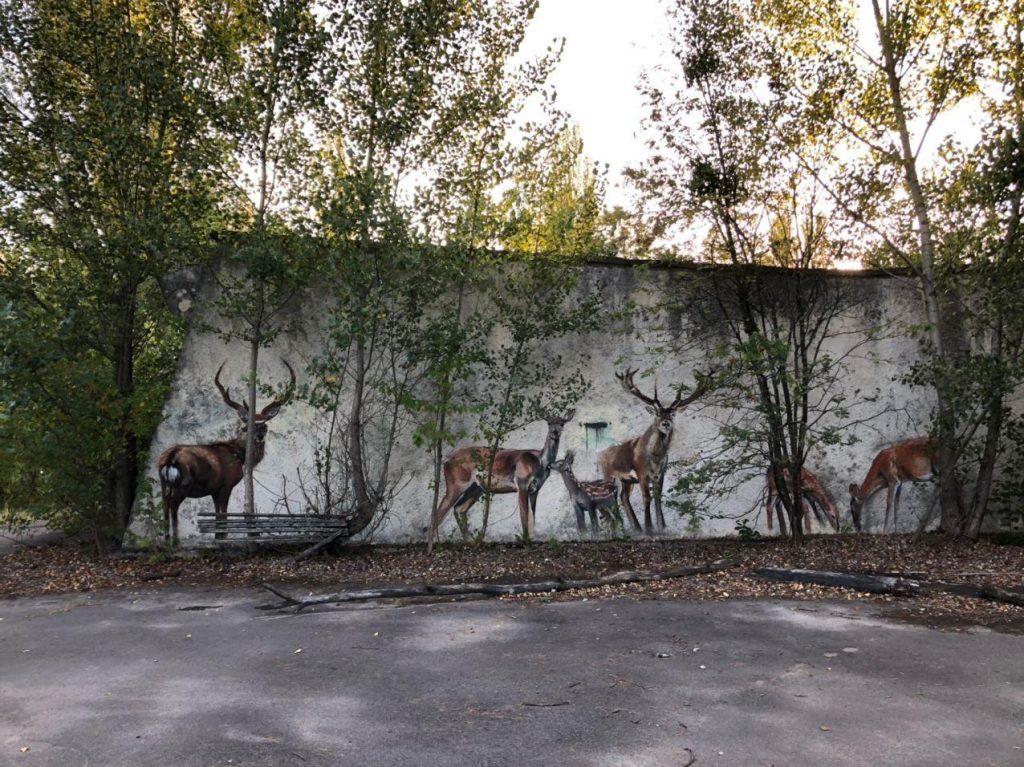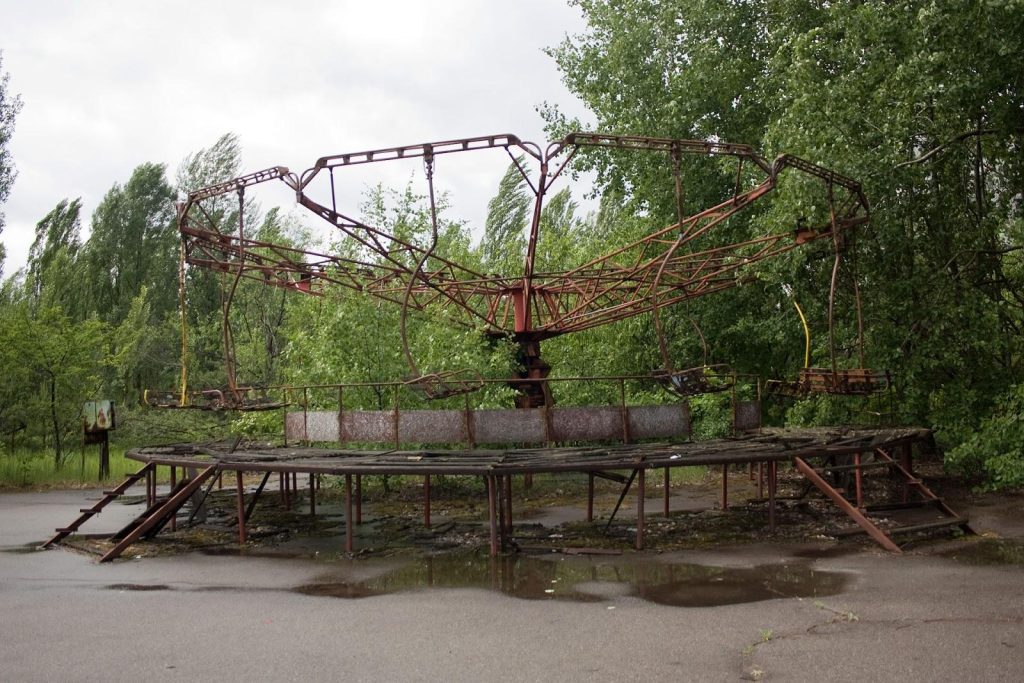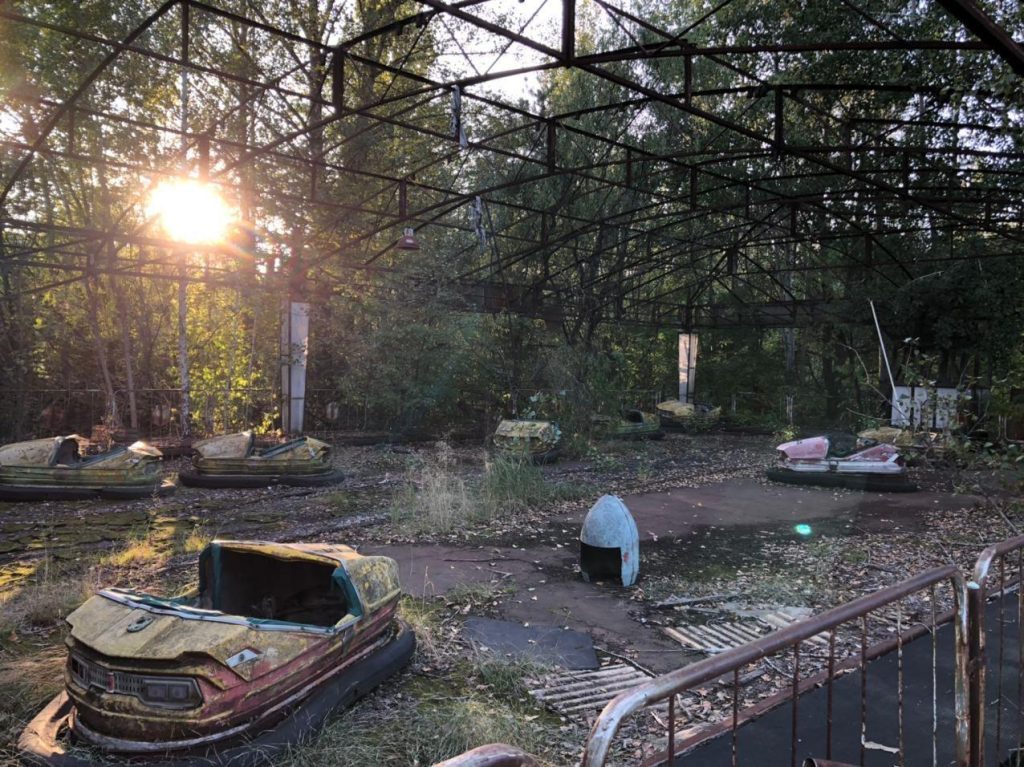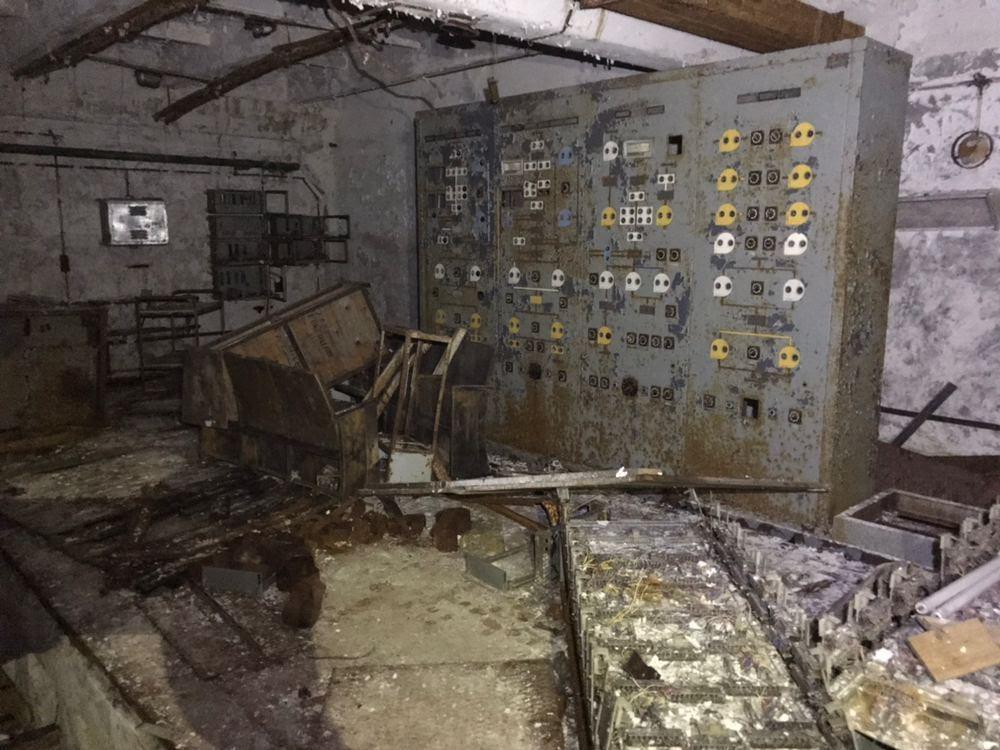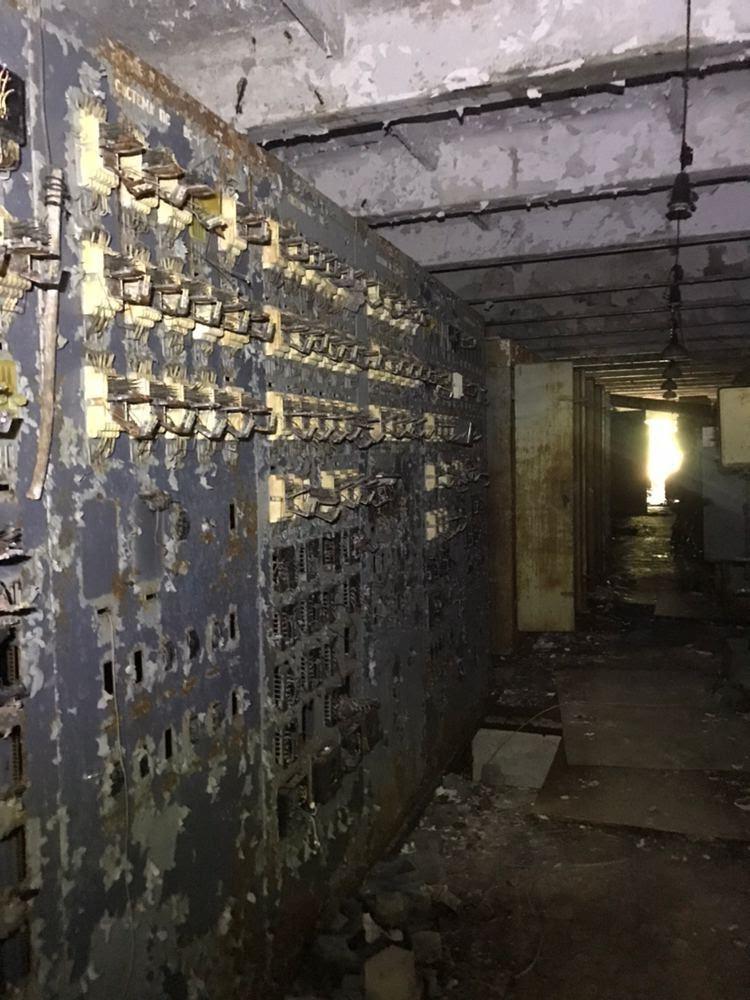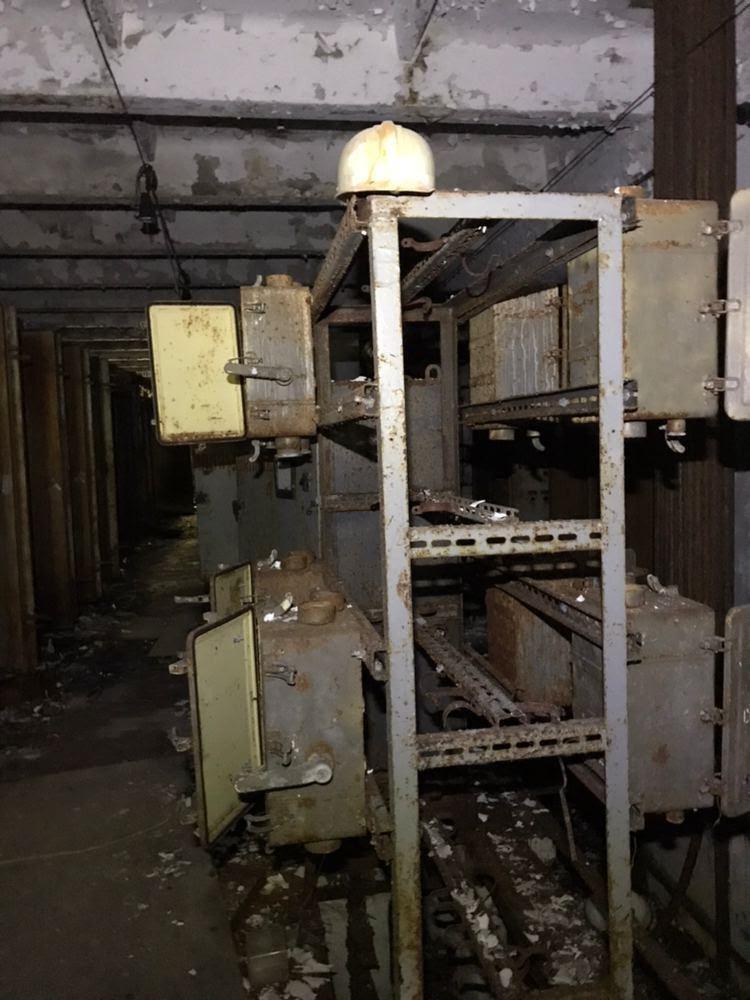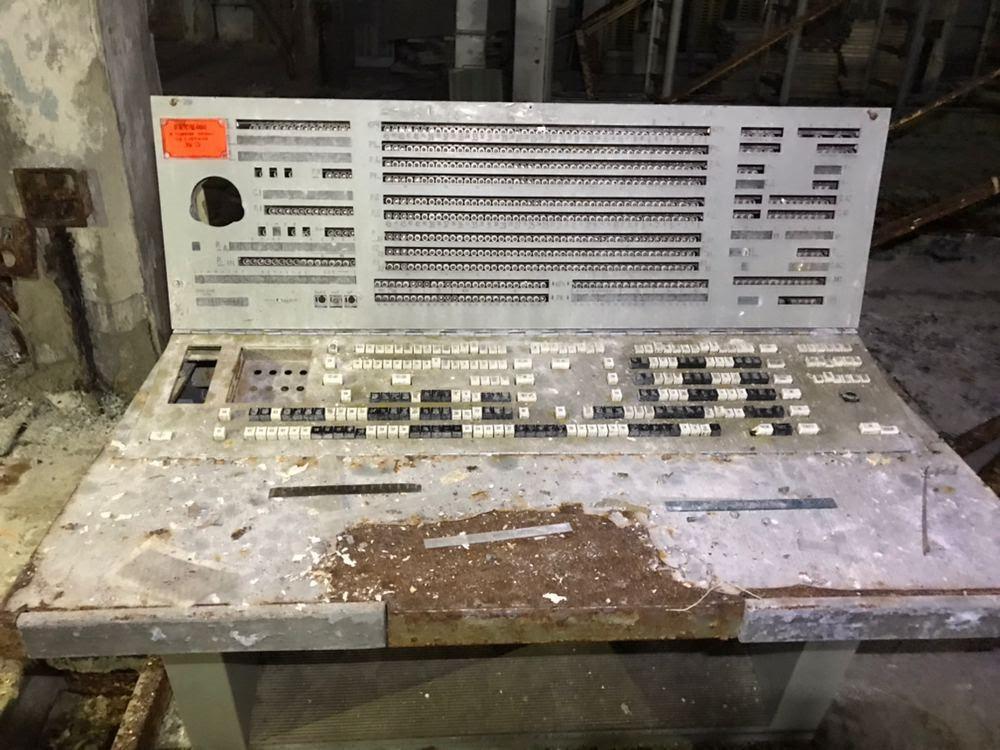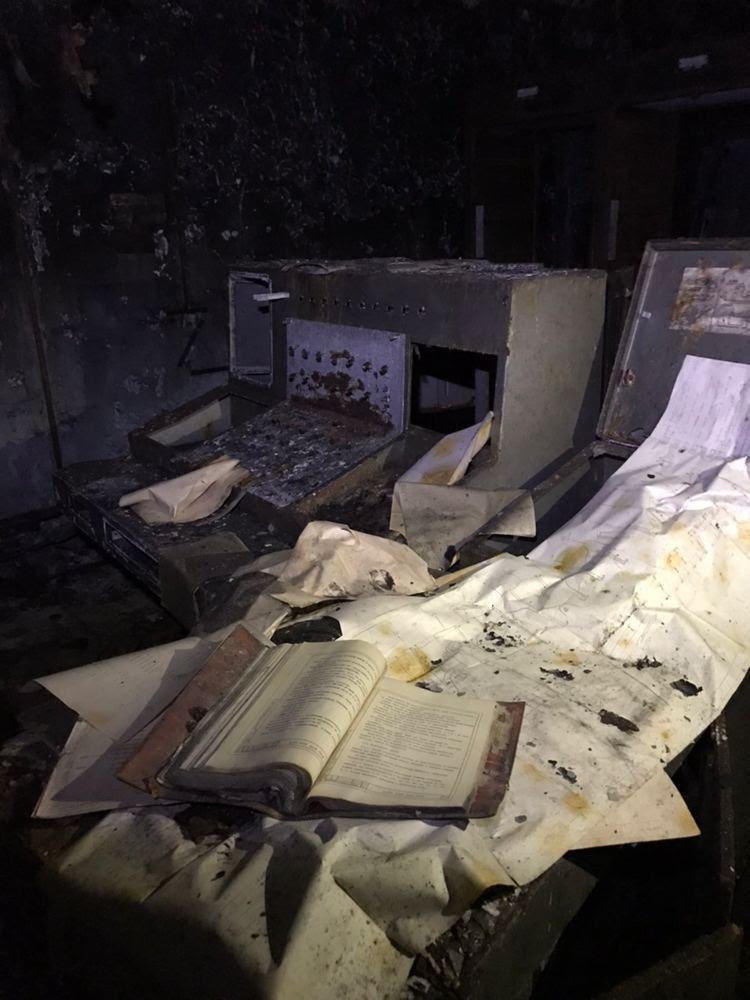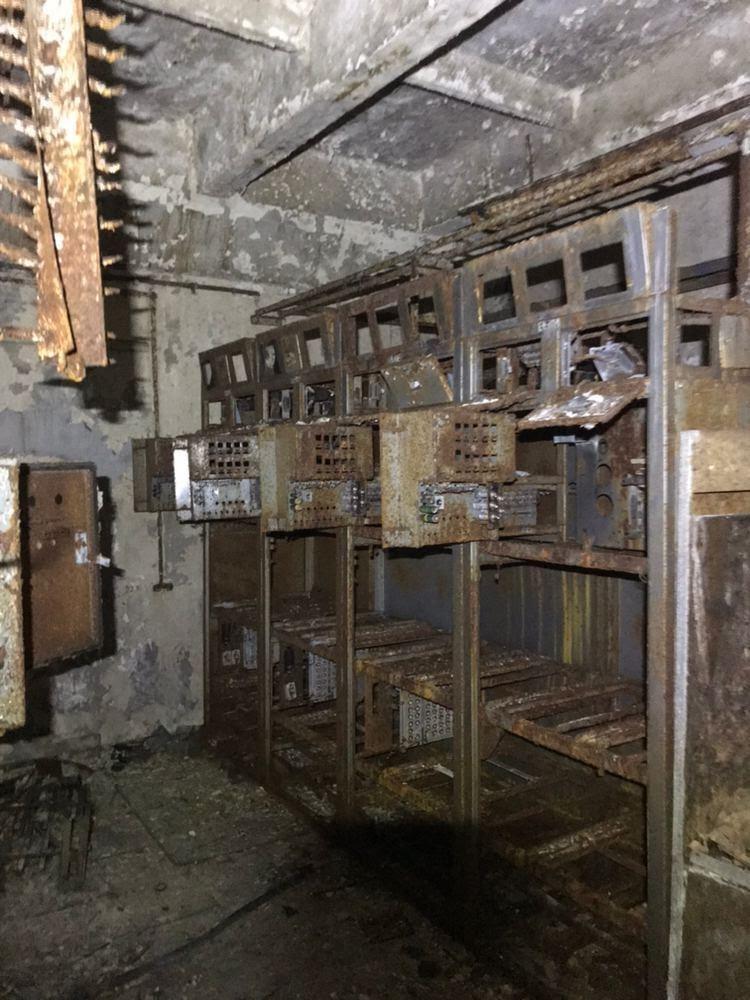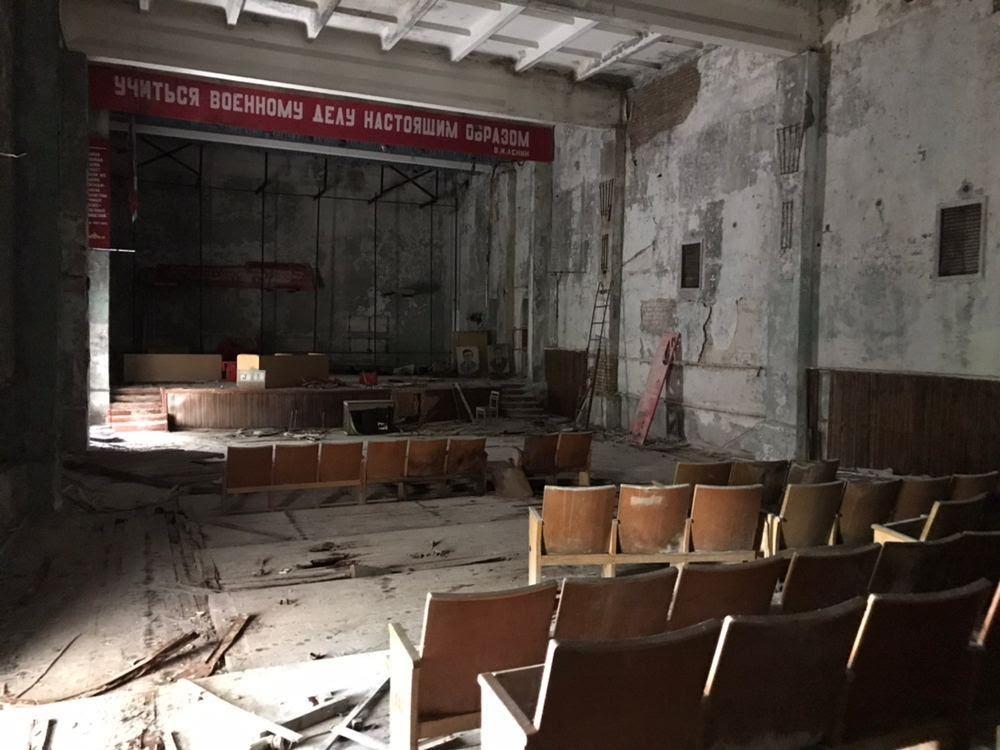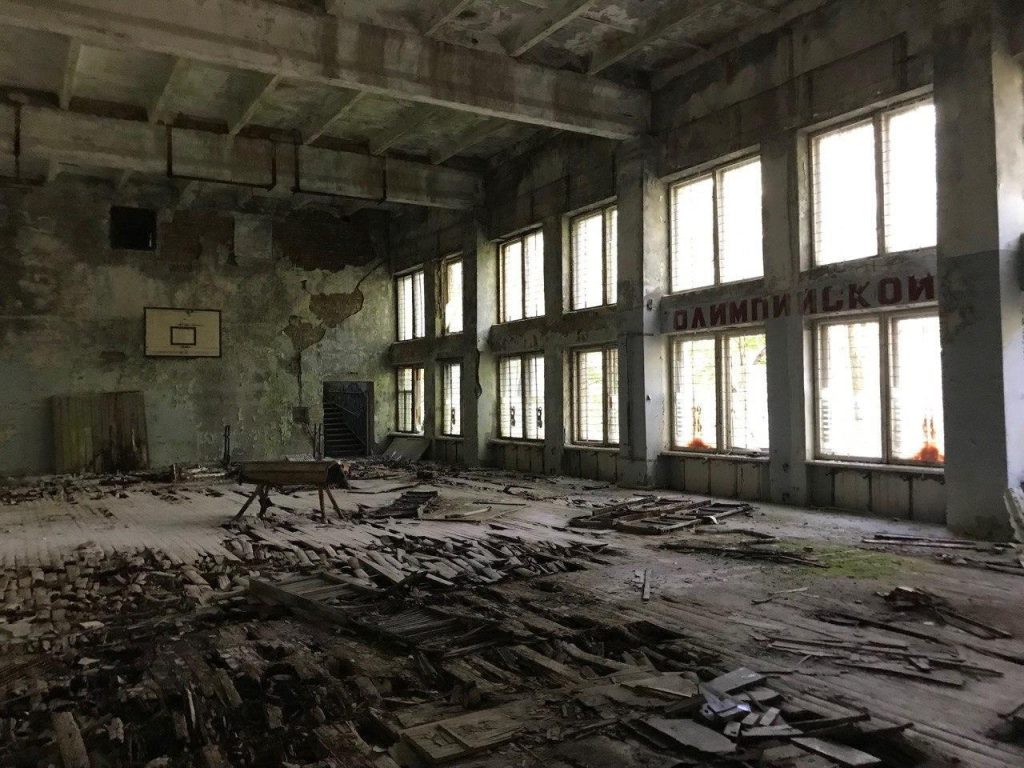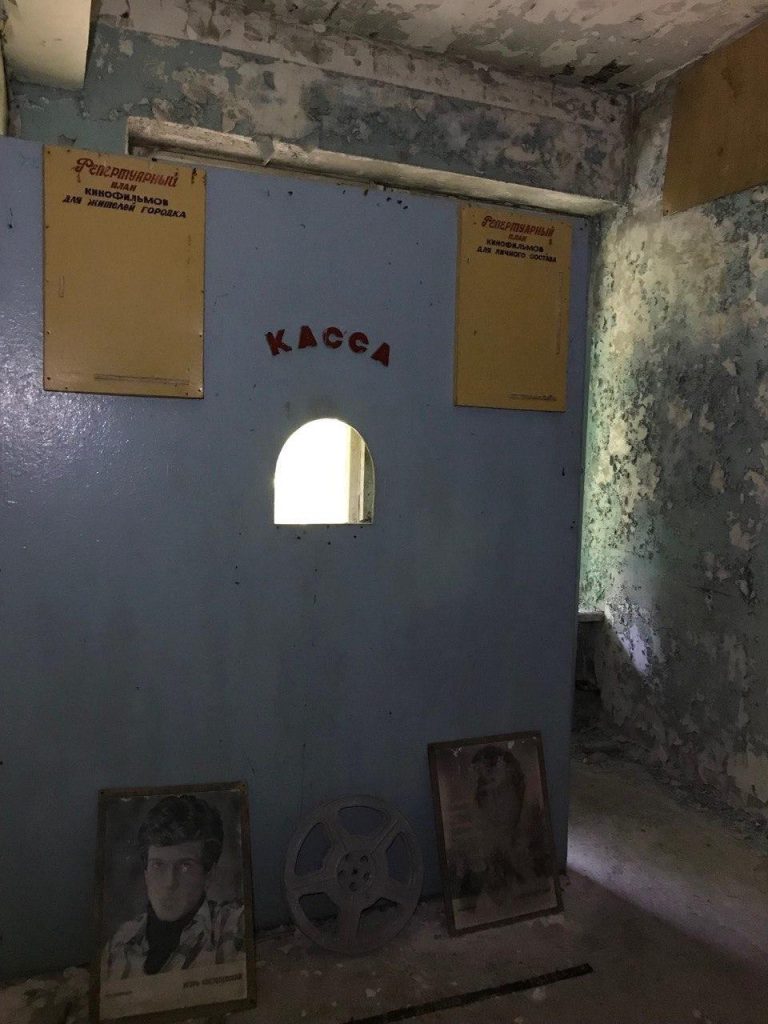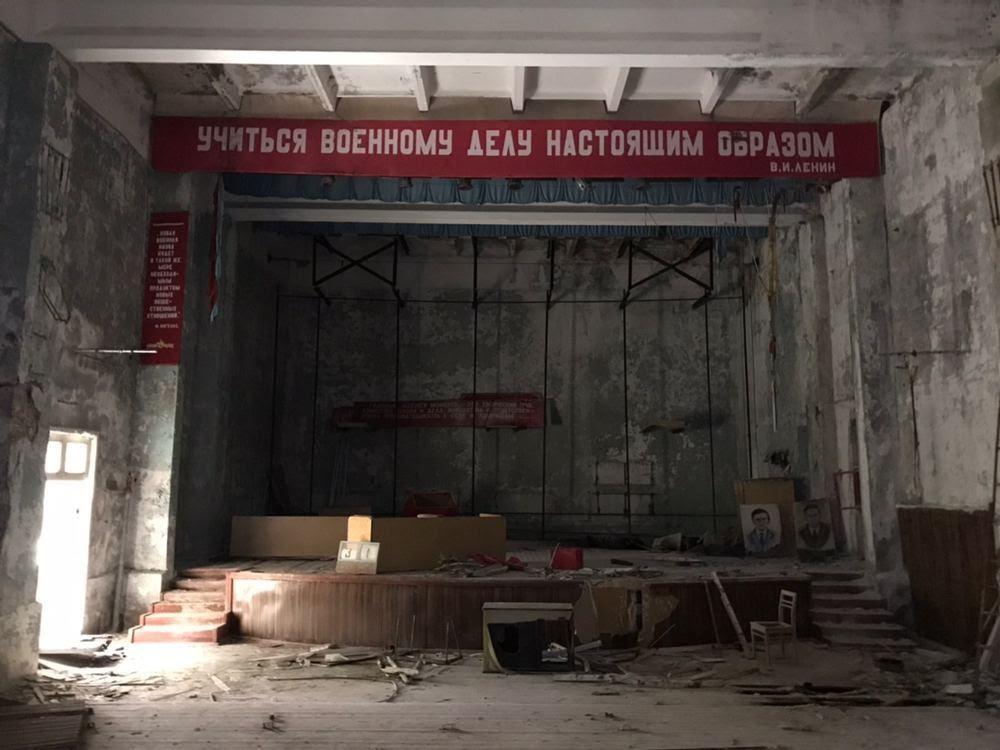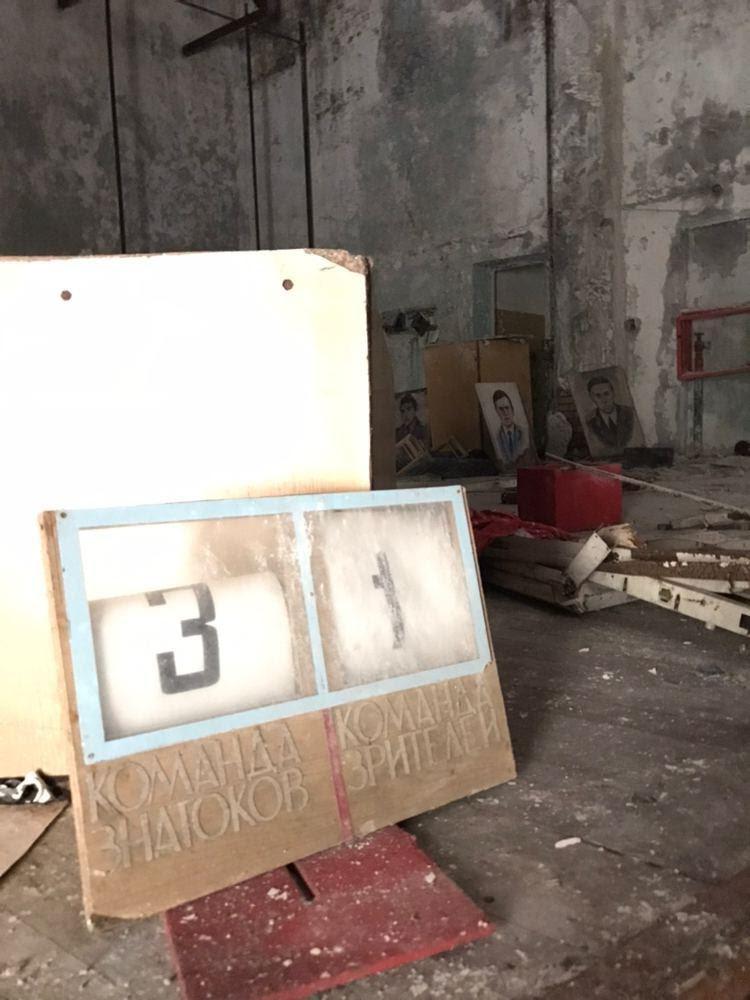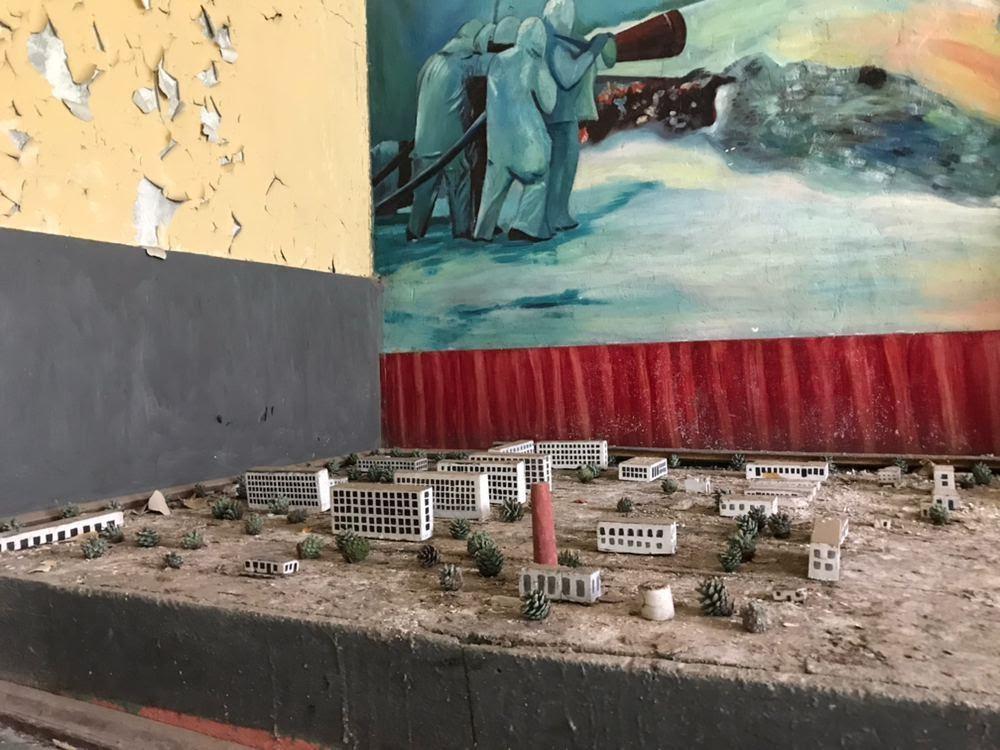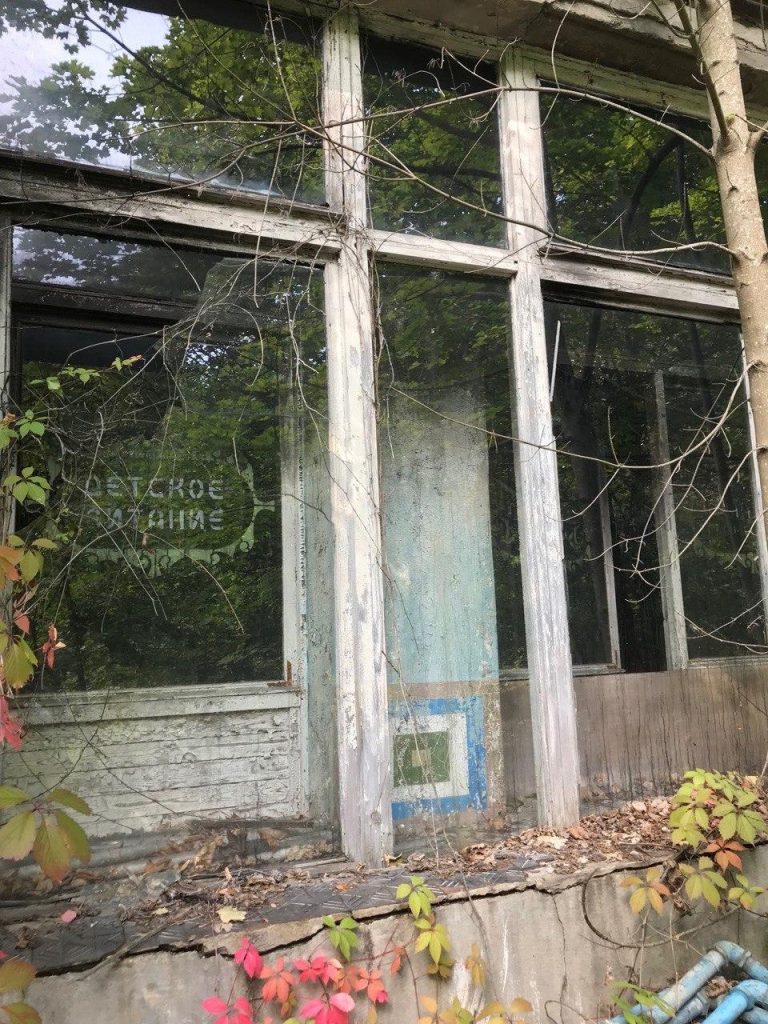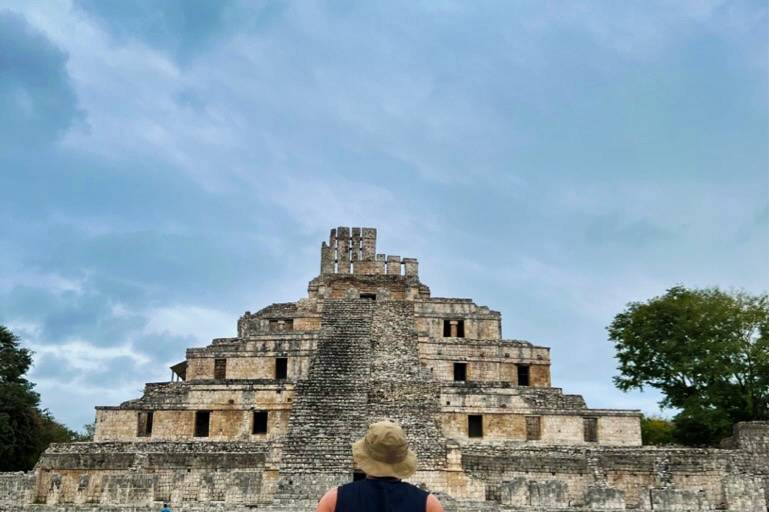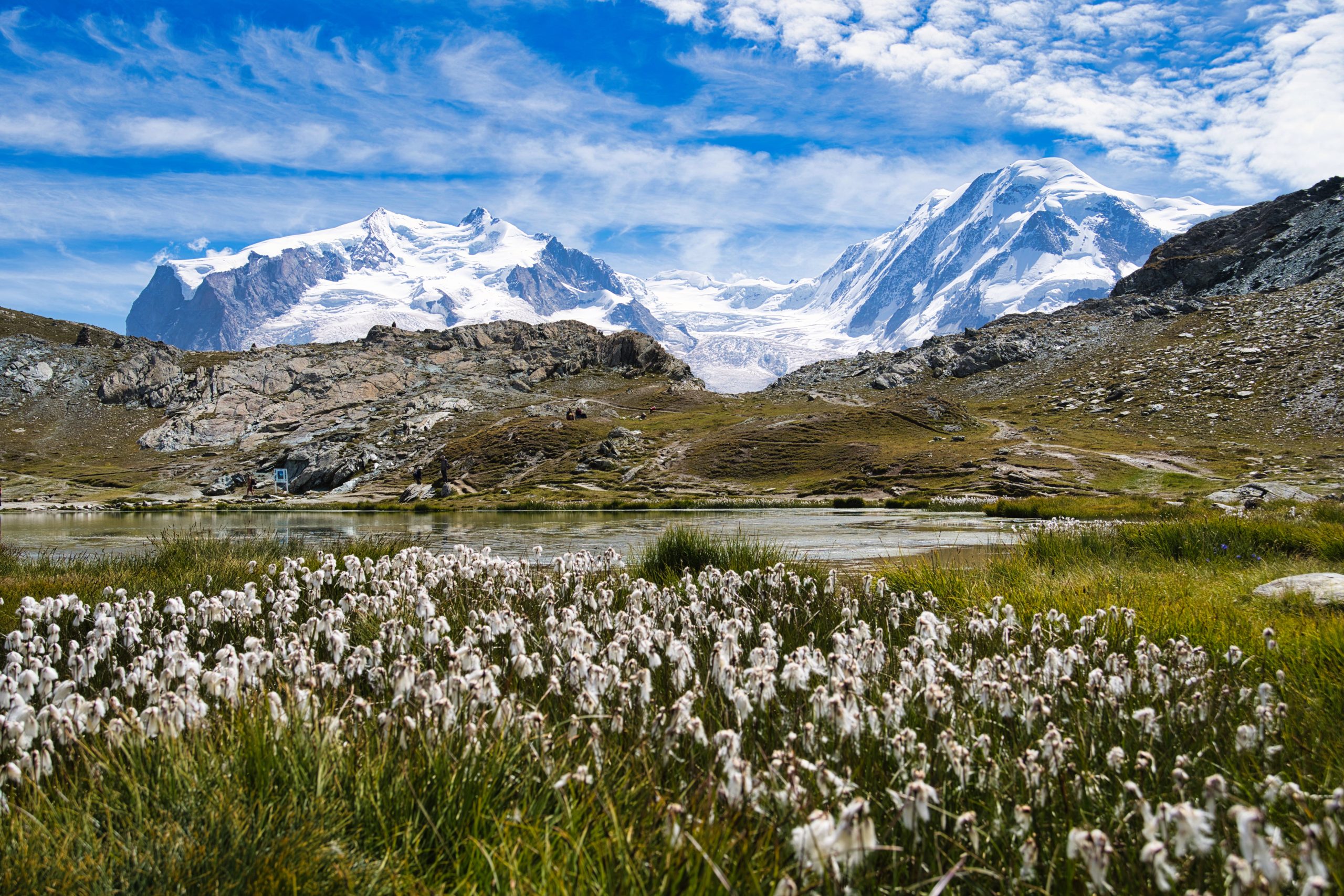Let me start this post dedicated to my trip to the Chornobyl Exclusion Zone with these words. I want to note right away that Chornobyl and the accident that happened there have interested me since I was young. Therefore, I re-read and studied a lot of materials on this topic. Visiting Chornobyl has become a special experience in my life. Thus, I will do my best to express all my emotions in this post.
History and Causes of the 1986 Reactor 4 Catastrophe at the ChNPP
The history of the Chornobyl Nuclear Reactor Explosion spread around the world long ago. Thanks to the Chornobyl HBO miniseries, there has recently been a new spike of interest in the 1986 disaster. A huge number of tourists have already visited Chornobyl. Oddly enough, they are mostly foreigners. The Chornobyl catastrophe remains fresh in the memories of our people; hence, many of them are simply afraid to go there.
A lot of people blamed the shift crew that was working when the explosion of the 4th Power Unit occurred, resulting in hundreds of thousands of deaths.
However, not only the night-shift workers or the plant’s senior executives are to blame. The fault lies with the Soviet authorities and the Soviet system, which were always in a hurry and forced the process of launching reactors. The Soviet authorities wanted to overtake the United States and demonstrate the USSR POWER to the whole world. Regretfully, it always had to be cheap and fast.
Moreover, the bureaucracy did not allow acting rationally, and the fear of exile to Siberia cast a veil over real problems, which were not solved but brushed under the carpet. By failing to give a proper algorithm of actions to young engineers, nuclear physicists, and plant workers, the authorities fated the whole country to disaster.
A huge number of mistakes were made during the reactor construction, as the builders were constantly under pressure. Engineers who had just graduated from institutes had no training facilities. They were simply forced to train at an operating nuclear reactor. In those years, the knowledge base for working with nuclear stations and the atom was rather shallow since science in this area was just emerging and taking its first steps.
Academician V. Legasov, who investigated the causes of the catastrophe, strongly believed that the accident could not be avoided with such a negligent approach to nuclear energy. If not at Chornobyl, the tragedy would have happened somewhere else. The disaster at the Chornobyl Nuclear Power Plant was not the only one at that time. The level of other accidents at nuclear facilities was simply smaller, and the Soviet government carefully buried everything. By the way, it was perfectly depicted in the Chornobyl HBO miniseries, and it is a complete truth.
My Chornobyl Tour Route
I visited Chornobyl on two occasions. In total, I spent four days there. In this article, I am going to tell you about the experience of my first two-day tour. I would like to describe our route in detail, mention all the visited places, and share interesting facts about them.
Checkpoint and Dosimetry Point “Dityatki”
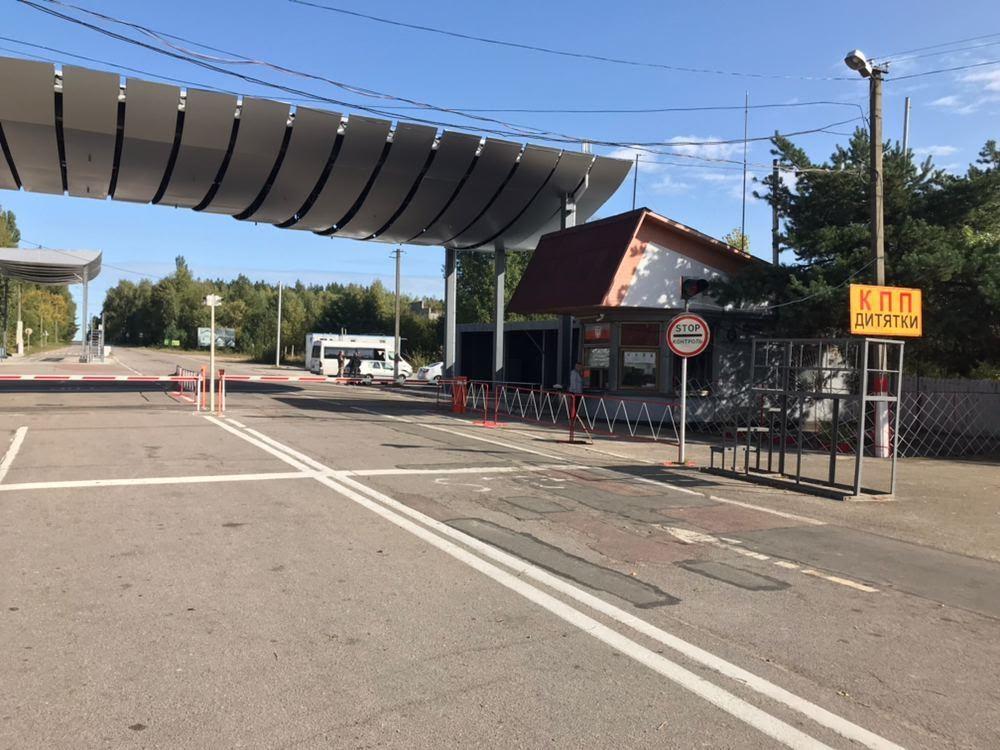
“Dityatki” is the main checkpoint for entering the Chornobyl Exclusion Zone. This is where our tour starts. Police officers and the National Guard of Ukraine check documents and permissions for entering the Chornobyl Zone. There are souvenir shops on both sides of the road. They sell everything related to Chornobyl, for example, “Chornobyl air” in jars, socks, magnets, pencils, T-shirts, hats, caps, etc. Upon passing the document check, we entered the 30-kilometer zone and headed to the next point of our excursion, the village of Ilintsy. On our way, we met a herd of Przewalski’s horses grazing peacefully on the grass and a gorgeous eagle soaring over the field. Generally, I am going to tell more about the Chornobyl Zone wildlife at the end of my post – you will be surprised.
An interesting fact: a dosimeter showed 0.2 microsieverts per hour at the entrance to the 30-kilometer zone.
Our Stop in the Evacuated Village of Ilintsy
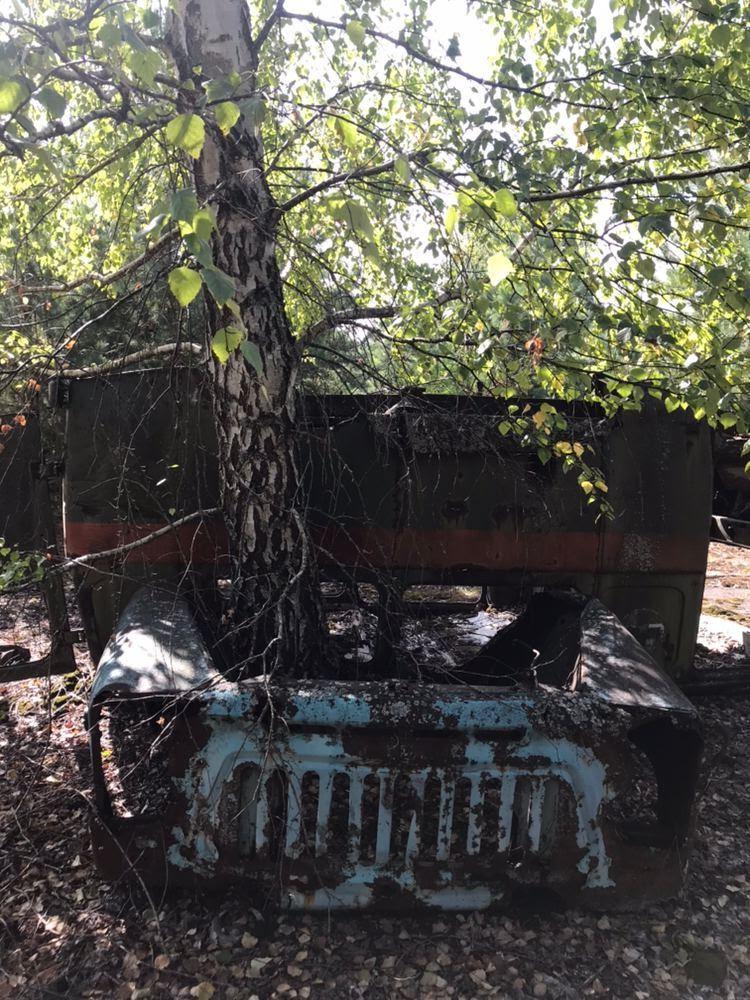 After the Chornobyl catastrophe, the village of Ilintsy was considered the “capital of samosely (self-settlers)”. In 2006, about 40 people lived in the village. Now, there are no people left at all. However, guys from our group met a man who said that he had lived in Ilintsy. The village looks typical for Ukrainian Polissya. There are many small wooden houses here. Some of them are made of stone, while others are made of wood, and they are painted in different colors with Ukrainian symbols. The village is completely covered with thick grass. Central Lenin Street looks like a typical forest road. A person from the former USSR countries will hardly be surprised since a lot of villages, especially in Ukraine and Russia, are in the same terrible state.
After the Chornobyl catastrophe, the village of Ilintsy was considered the “capital of samosely (self-settlers)”. In 2006, about 40 people lived in the village. Now, there are no people left at all. However, guys from our group met a man who said that he had lived in Ilintsy. The village looks typical for Ukrainian Polissya. There are many small wooden houses here. Some of them are made of stone, while others are made of wood, and they are painted in different colors with Ukrainian symbols. The village is completely covered with thick grass. Central Lenin Street looks like a typical forest road. A person from the former USSR countries will hardly be surprised since a lot of villages, especially in Ukraine and Russia, are in the same terrible state.
There is a school in Ilintsy, which still bears a few “elements” of the Soviet education system. For example, posters with slogans and books about the Communist Party are scattered everywhere. There are still reagents and tables with formulas in the chemistry class. It will be very interesting to visit this school for people who were born after the dissolution of the Soviet Union and did not come across Soviet propaganda.
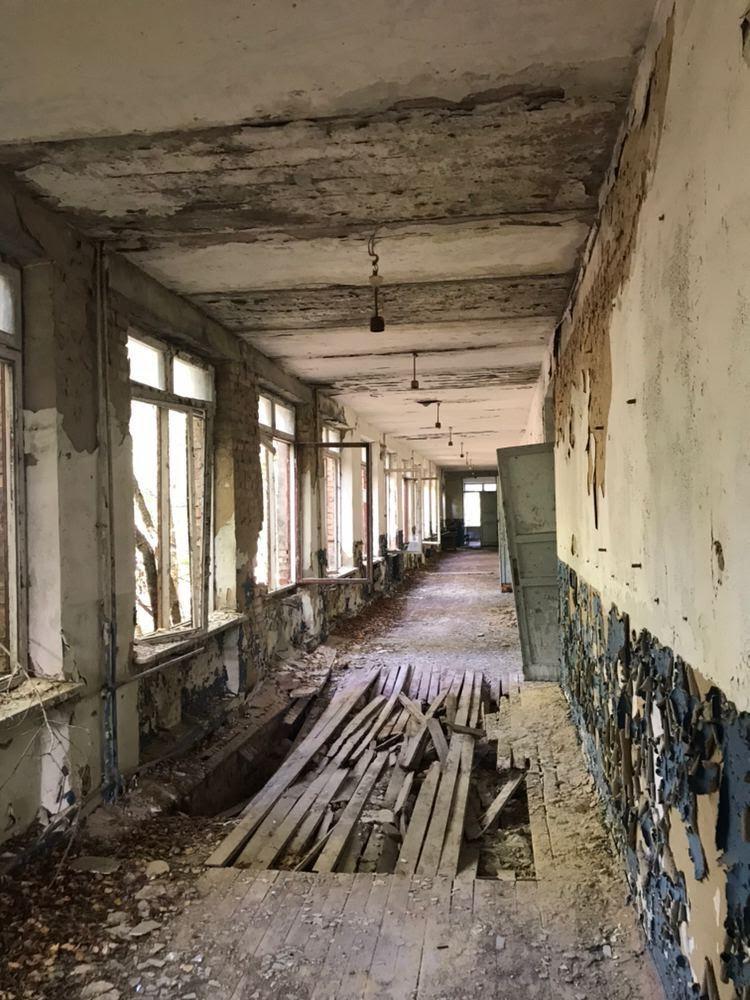
The Red Forest Is Not Red At All
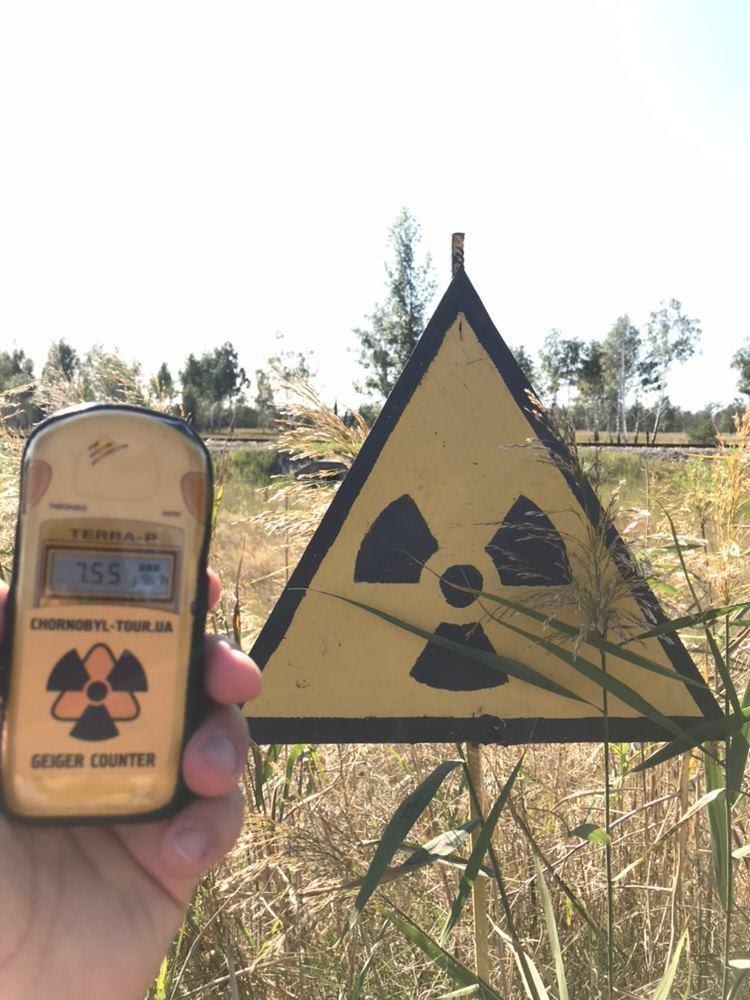
Our next stop was near the well-known Red Forest. This is a patch of pine forest that took on a rusty hue owing to high levels of radiation. It is a very popular place also because of the S.T.A.L.K.E.R. game. In reality, this forest no longer exists since it was destroyed almost immediately after the nuclear reactor explosion. All the trees were cut down and buried in the same area. New pine trees have already grown in the place of the old forest. They have a rather interesting shape due to mutation after the radiation spread on that territory. This section of the Red Forest is now less dangerous than before. However, the radiation is very high in some places. Therefore, it is not advisable to stay in the Red Forest for a long time and touch something without taking measurements with a dosimeter. Overall, don’t expect to see rusty-colored trees there. Nowadays, it is just an ordinary forest.
An interesting fact: the road used for the evacuation of people in 1986 passes near the Red Forest. However, after the accident, bus drivers and passengers were not aware of the radiation level and the overall danger. So, people opened windows because it was very hot and set up picnics near the road when it was necessary to wait for a bus column. They spread blankets and sat on radiation-soaked lawns. It is another crying fact that the USSR government was completely silent about the problem. Because of this, many people suffered severely, and in many cases, subsequent generations were affected as well.
The City of Pripyat – What to See
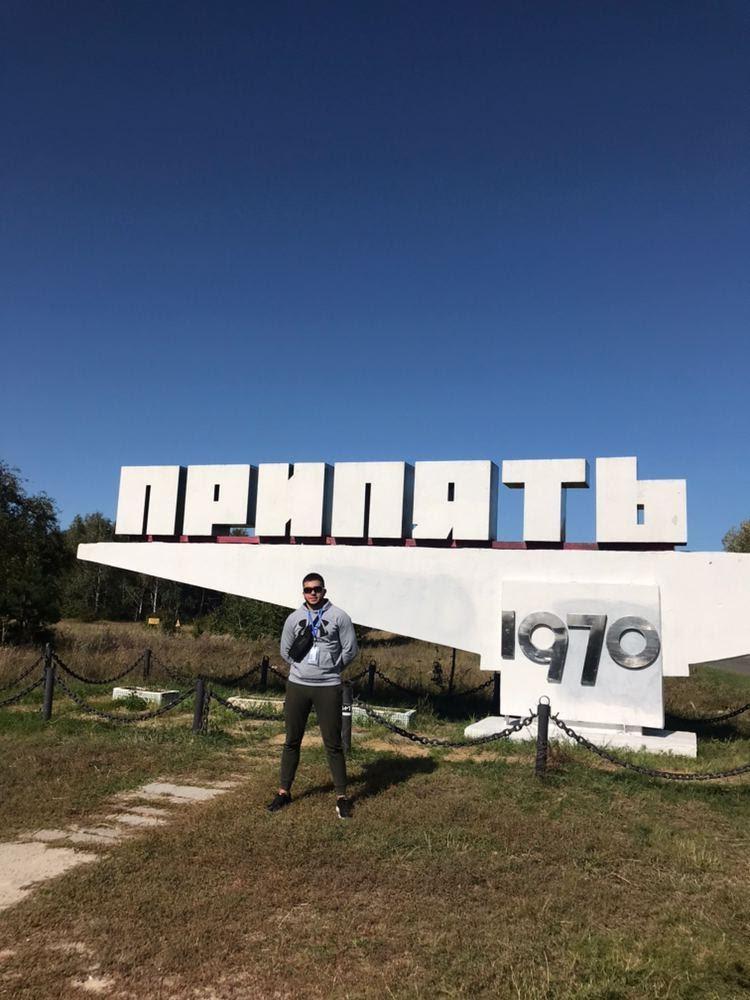 After we checked the radiation background in the Red Forest and finally breathed clean air, we went to a key point of our tour – the city of Pripyat. There is a checkpoint at the entrance. Dogs are sleeping peacefully. By the way, there are plenty of dogs in the Exclusion Zone, and they look well. Tourists often feed them.
After we checked the radiation background in the Red Forest and finally breathed clean air, we went to a key point of our tour – the city of Pripyat. There is a checkpoint at the entrance. Dogs are sleeping peacefully. By the way, there are plenty of dogs in the Exclusion Zone, and they look well. Tourists often feed them.
Paramilitary Fire Department – SVPCh-6
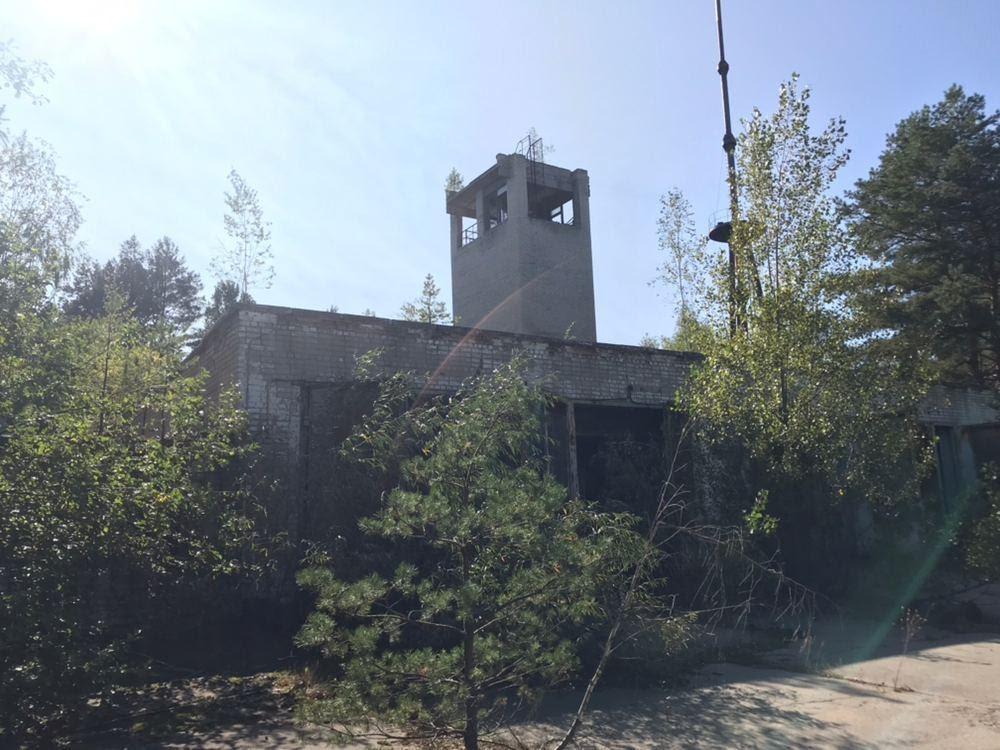 The fighters (there is no other way to call them) of this fire department were the second to arrive at the 4th Power Unit of the reactor to extinguish the fire. If you watched the Chornobyl HBO miniseries, there was a character named Vasiliy Ignatenko. It is exactly that fireman whose wife broke through to him in the hospital after the accident. So, this is a real story and a real person, and he served in this particular department. To the left of the garage, there is a staff hostel where Vasiliy’s small family lived. Now, this hostel is completely overgrown with shrubs and trees. So, I failed to take a good photo.
The fighters (there is no other way to call them) of this fire department were the second to arrive at the 4th Power Unit of the reactor to extinguish the fire. If you watched the Chornobyl HBO miniseries, there was a character named Vasiliy Ignatenko. It is exactly that fireman whose wife broke through to him in the hospital after the accident. So, this is a real story and a real person, and he served in this particular department. To the left of the garage, there is a staff hostel where Vasiliy’s small family lived. Now, this hostel is completely overgrown with shrubs and trees. So, I failed to take a good photo.
ATH 2 (ATX 2) Garage and Vehicles Repair Facility in Pripyat
The territory of ATH-2 is occupied by ordinary garages where equipment was repaired. This enterprise partially functioned until 2019. The place is notable for storing plenty of equipment initially used to eliminate the consequences of the Chornobyl catastrophe.
It is quite an interesting place. Some equipment is severely radioactive. Do not touch it with your hands, and do not lean against it.
Radioactive Claw at the Laboratory Site
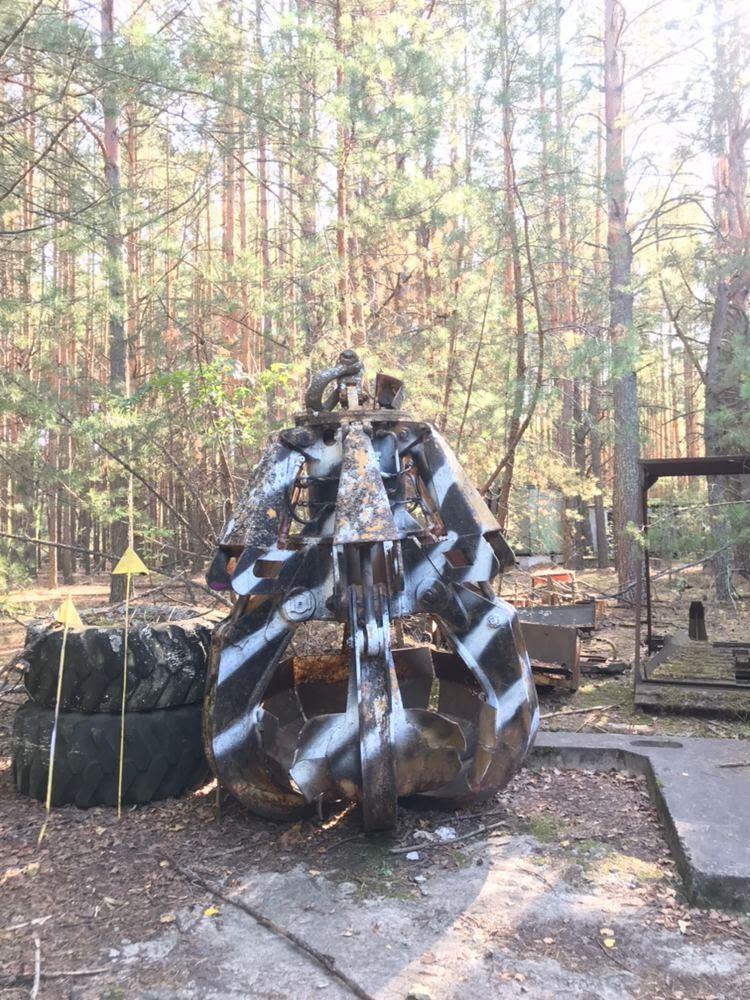 There is one of the most contaminated places in Pripyat. It is called the “Claw of Death.”
There is one of the most contaminated places in Pripyat. It is called the “Claw of Death.”
As you can see in the photo, the dosimeter showed 48 microsieverts inside the Claw, while the usual rate is 0.3 microsieverts.
The claw was used to remove the concrete on the roof of the blown-up reactor, as well as the remains of uranium and graphite. This object is located on the territory of the laboratory where robots were assembled to be sent to the roof and collect the radioactive waste. I want to note that we did not go inside the laboratory itself. I think there is not much to see there; otherwise, I would have been told about it. Therefore, it is not worth inventing various conspiracy theories about the X8 secret laboratory.
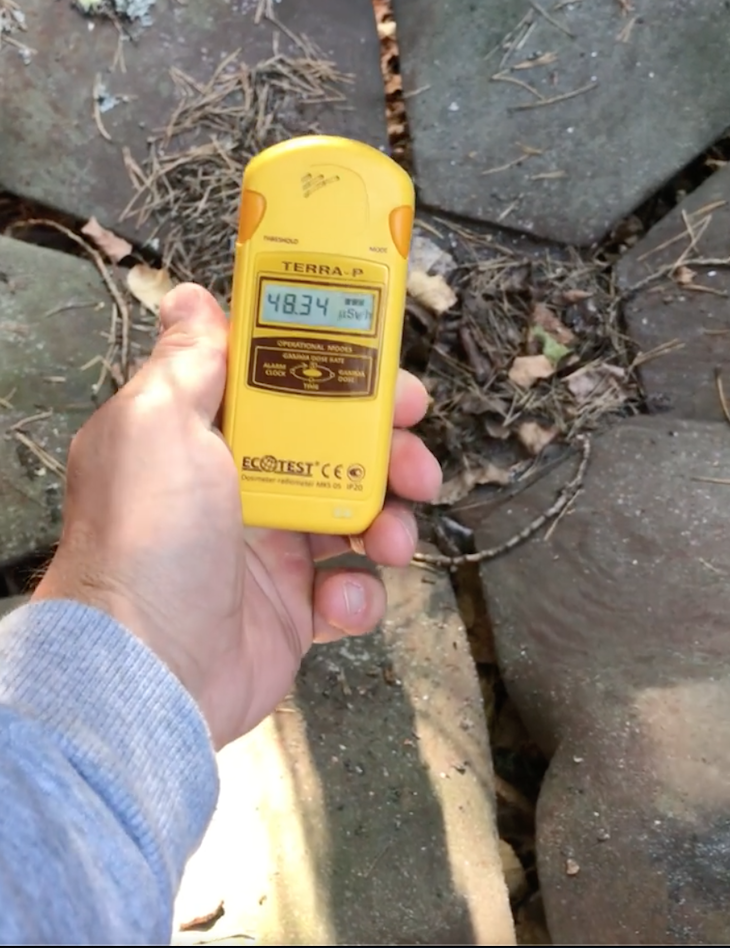 The Jupiter Factory
The Jupiter Factory
The Jupiter Factory building is one of the most popular places in Pripyat. The factory is truly legendary, as it produced top-secret equipment. The legend says the factory delivered mechanisms for tape recorders and some penny-ante stuff. However, the plant was involved in the development and assembly of military hardware and “Black Boxes.” All the produced units came with the mysterious prefix “Product No.” And this is not the whole story since still unknown products for the space industry, submarines, and fighter aircraft were manufactured at the Jupiter Factory in intense secrecy. As you understand, the Jupiter Factory had the highest level of technical development. I quickly ran to the roof, from which you can see the whole city and the New Safe Confinement in the distance.
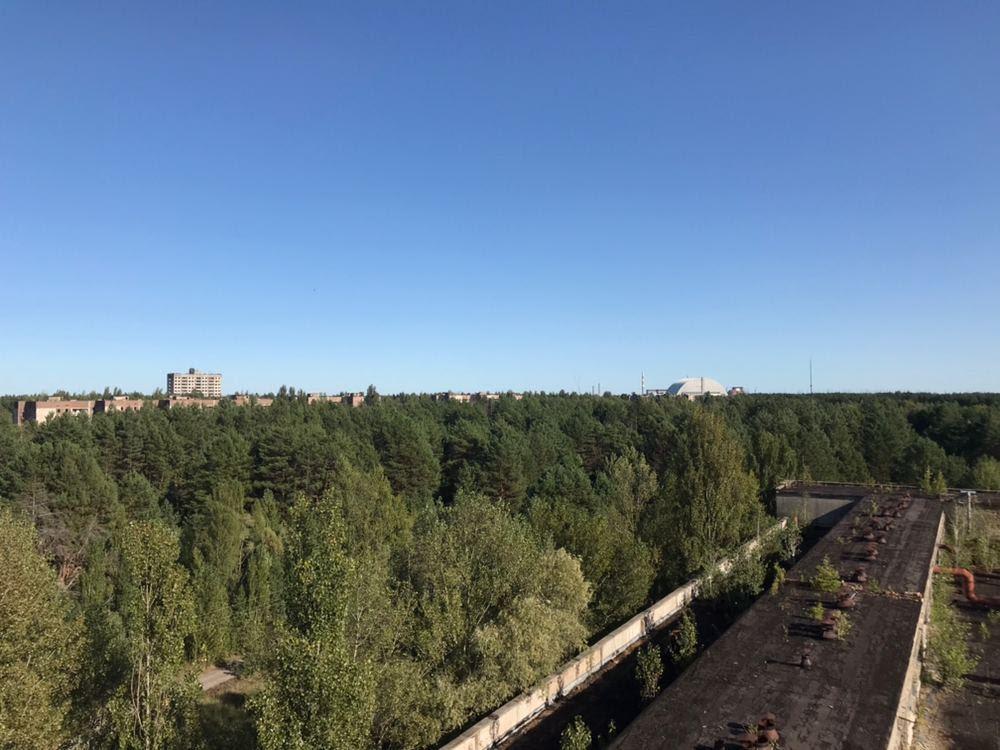 I was also impressed by the dimensions of the plant’s workshops. They are just huge. I have never seen such a thing before. Since I was not born in an industrial city, everything I saw created the “wow” effect. The factory workshop reminded me of a scene from the last level in S.T.A.L.K.E.R.: Shadow of Chornobyl game when the main character selected wealth and the ceiling collapsed on him.
I was also impressed by the dimensions of the plant’s workshops. They are just huge. I have never seen such a thing before. Since I was not born in an industrial city, everything I saw created the “wow” effect. The factory workshop reminded me of a scene from the last level in S.T.A.L.K.E.R.: Shadow of Chornobyl game when the main character selected wealth and the ceiling collapsed on him.
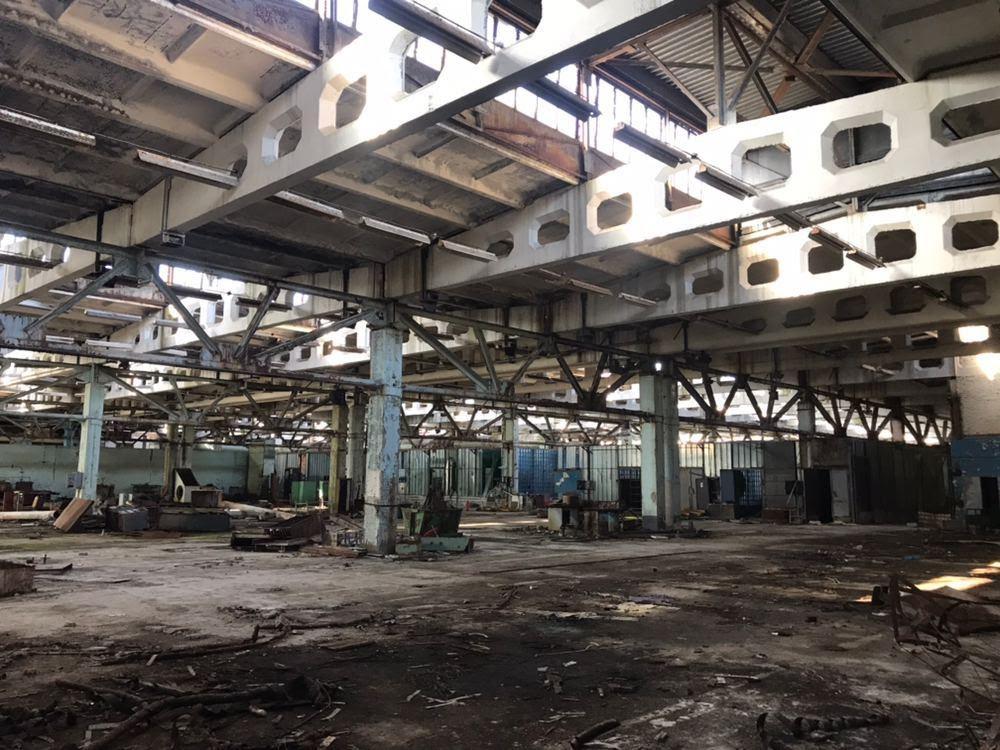 There is graphite on the table in one of the workshops.
There is graphite on the table in one of the workshops.
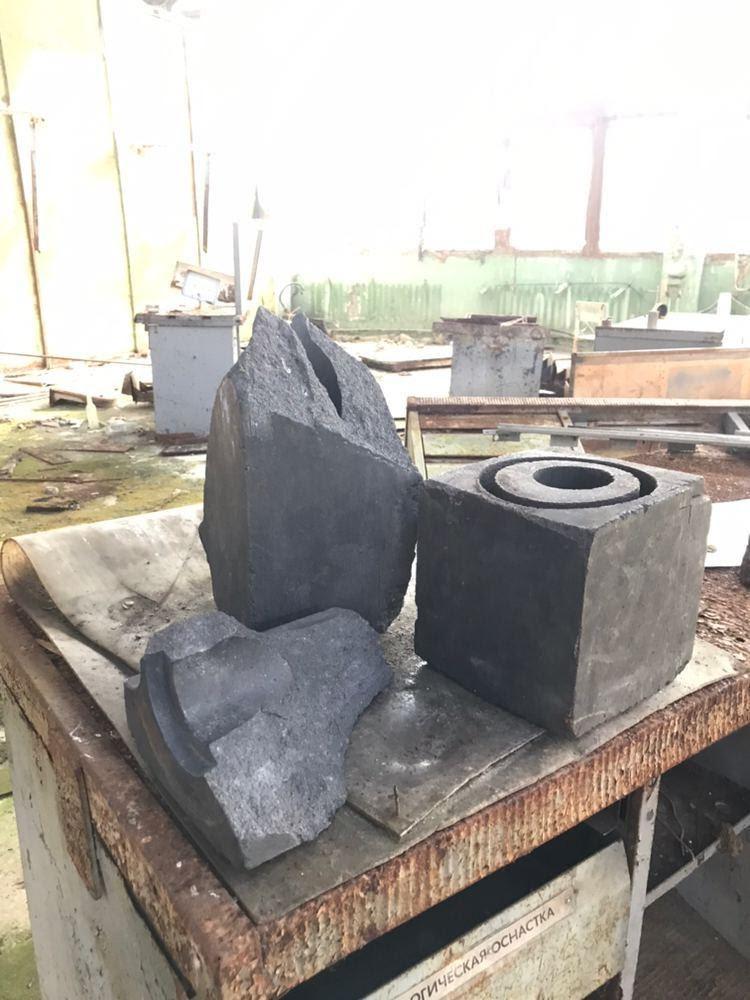
Azure (Lazurny) Swimming Pool Building
It is also a very popular place. Even Pink Floyd recorded one of their videos there. The liquidators of the accident used the pool until 1998, for 12 years after the nuclear reactor explosion. This location is one of the cleanest in Pripyat.
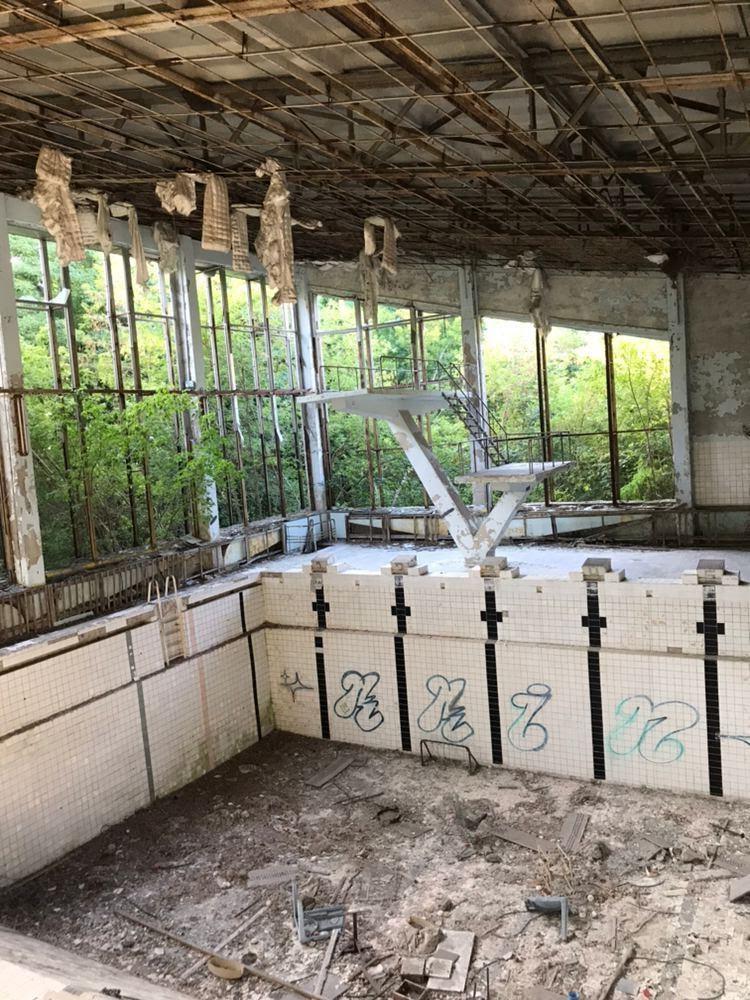
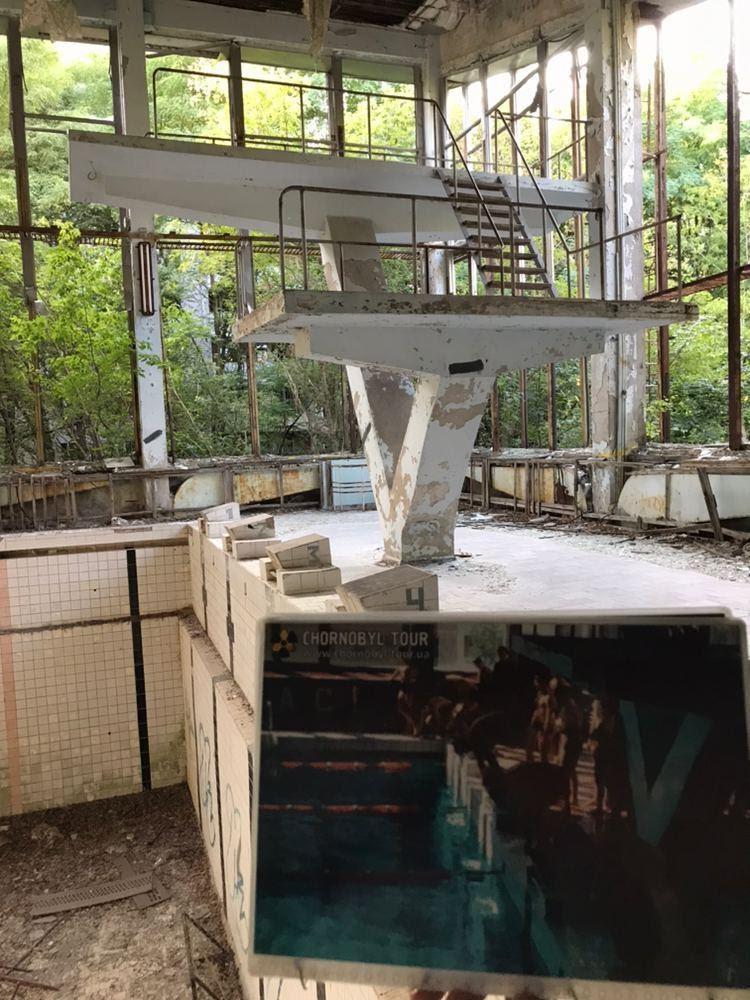 Microdistrict 5 in Pripyat
Microdistrict 5 in Pripyat
Buildings in Pripyat are in complete disrepair. As a result, the authorities officially prohibited tourists from visiting the city. However, the 4th and 5th microdistricts are full of comparatively new apartment buildings. Pardon the phrase, but they are in excellent condition and look even better than many buildings in Kyiv.
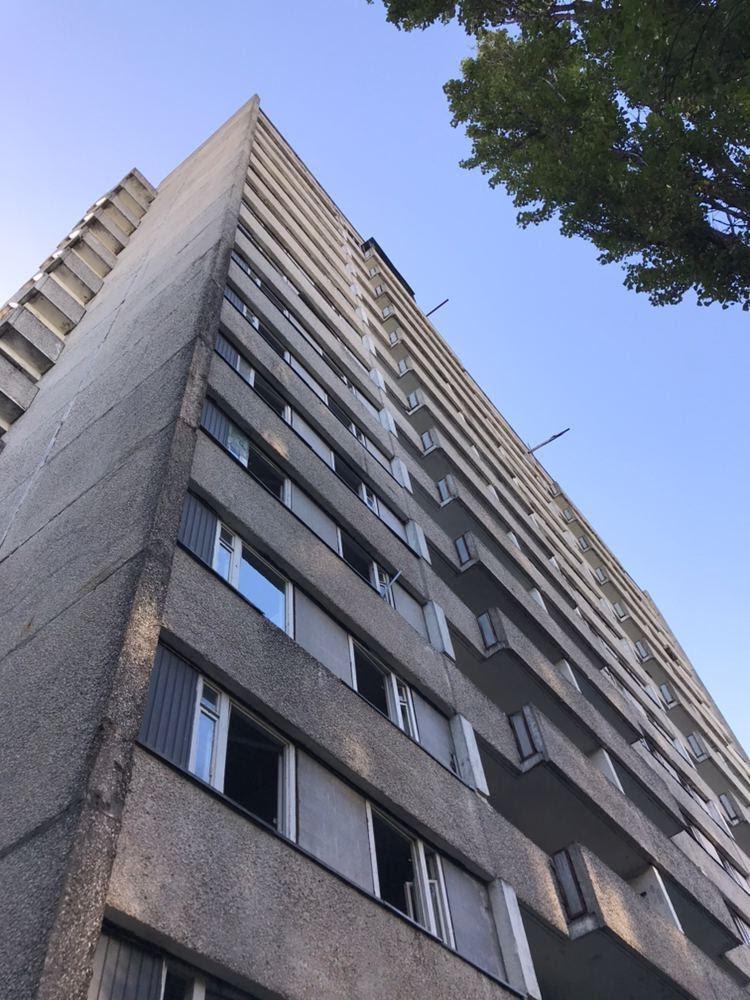 This district is notable for the fact that you can visit the roof of a 16-story building here. You just need to do it carefully and, of course, on foot since the elevators, unfortunately, do not work. There is a beautiful view from the rooftop. You can see the whole city and the Chornobyl nuclear power plant on one side and the typical nature of the Ukrainian Polissya on the other side.
This district is notable for the fact that you can visit the roof of a 16-story building here. You just need to do it carefully and, of course, on foot since the elevators, unfortunately, do not work. There is a beautiful view from the rooftop. You can see the whole city and the Chornobyl nuclear power plant on one side and the typical nature of the Ukrainian Polissya on the other side.
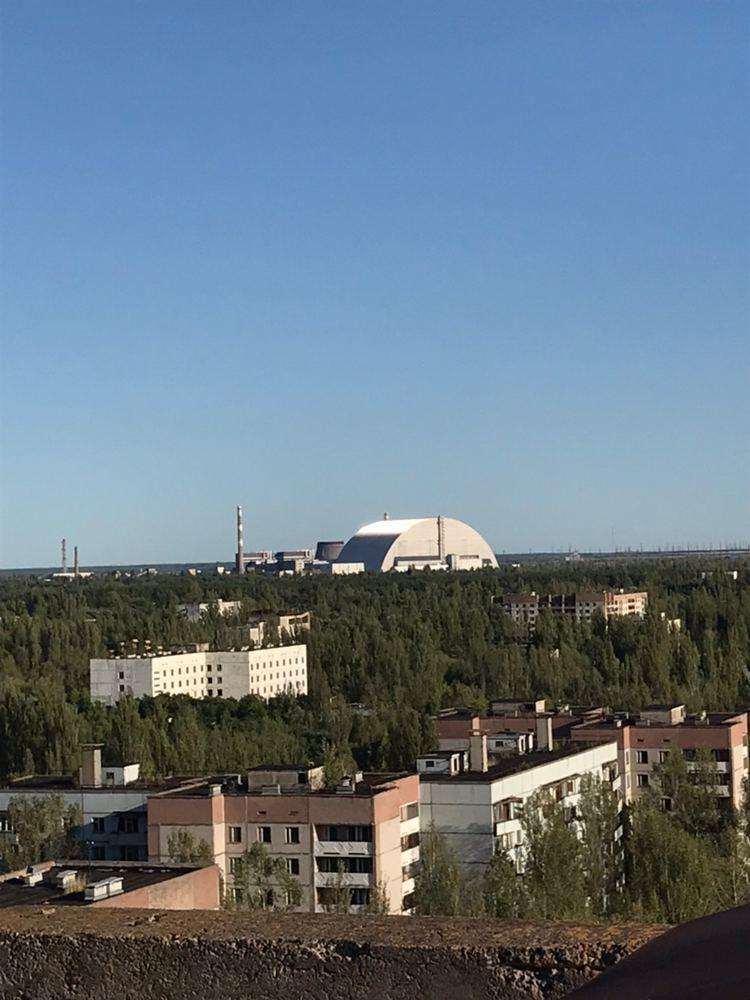
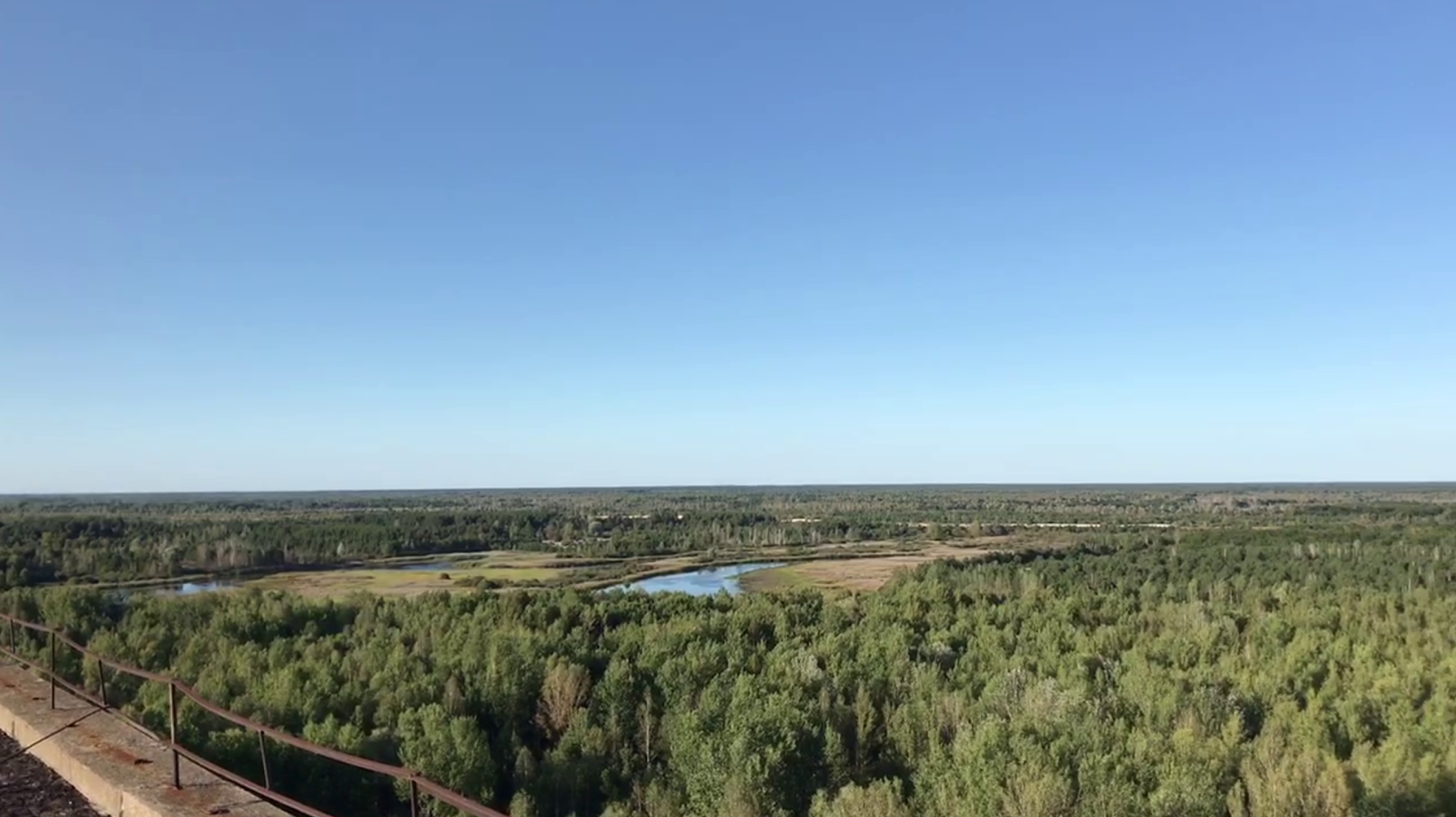
The Pripyat Amusement Park

The Pripyat amusement park did not work even a day due to the accident. It is located in the city center. There is a Ferris Wheel in the park, which is considered the most popular object for photographs.
There is the paratrooper ride “Chamomile” next to the Ferris Wheel. Popular German singer Till Lindemann rode it during his visit to Pripyat. The photo is taken from Wikipedia. I just forgot to take a picture of it.
There is also the bumper car amusement “Autodrome” to the left of the “Chamomile.” It is one of the most polluted places in Pripyat.
Be sure to visit the Pripyat amusement park. You will never forget this place.
Pripyat Kindergarten №7 Golden Key (Zolotoj Kluchik)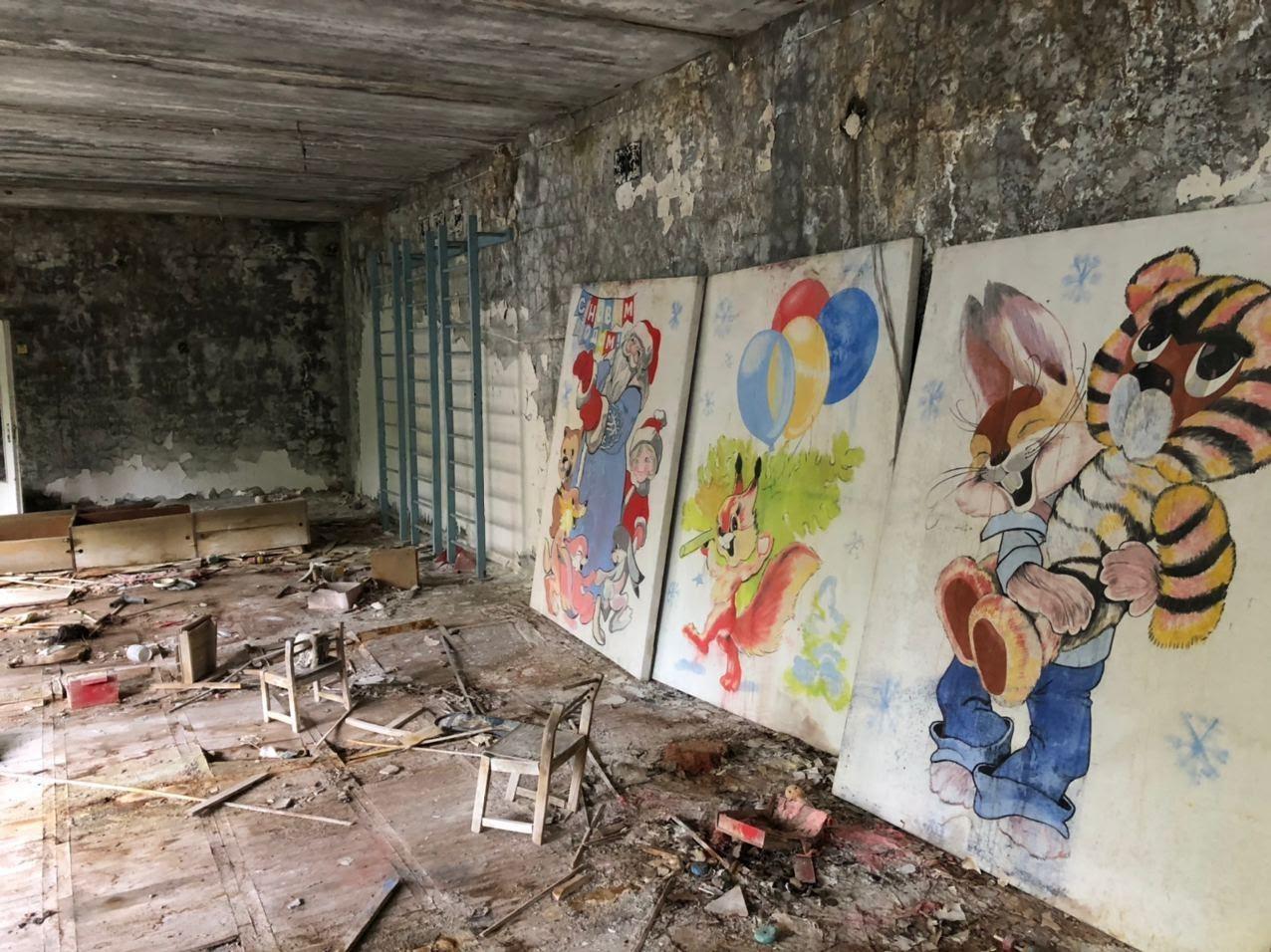
This is one of the most tragic places in Pripyat. Toys, small children’s shoes, cribs, and drawings are scattered everywhere here. It is worth saying that most of the things were carefully staged by photographers to make the photos even more engaging.
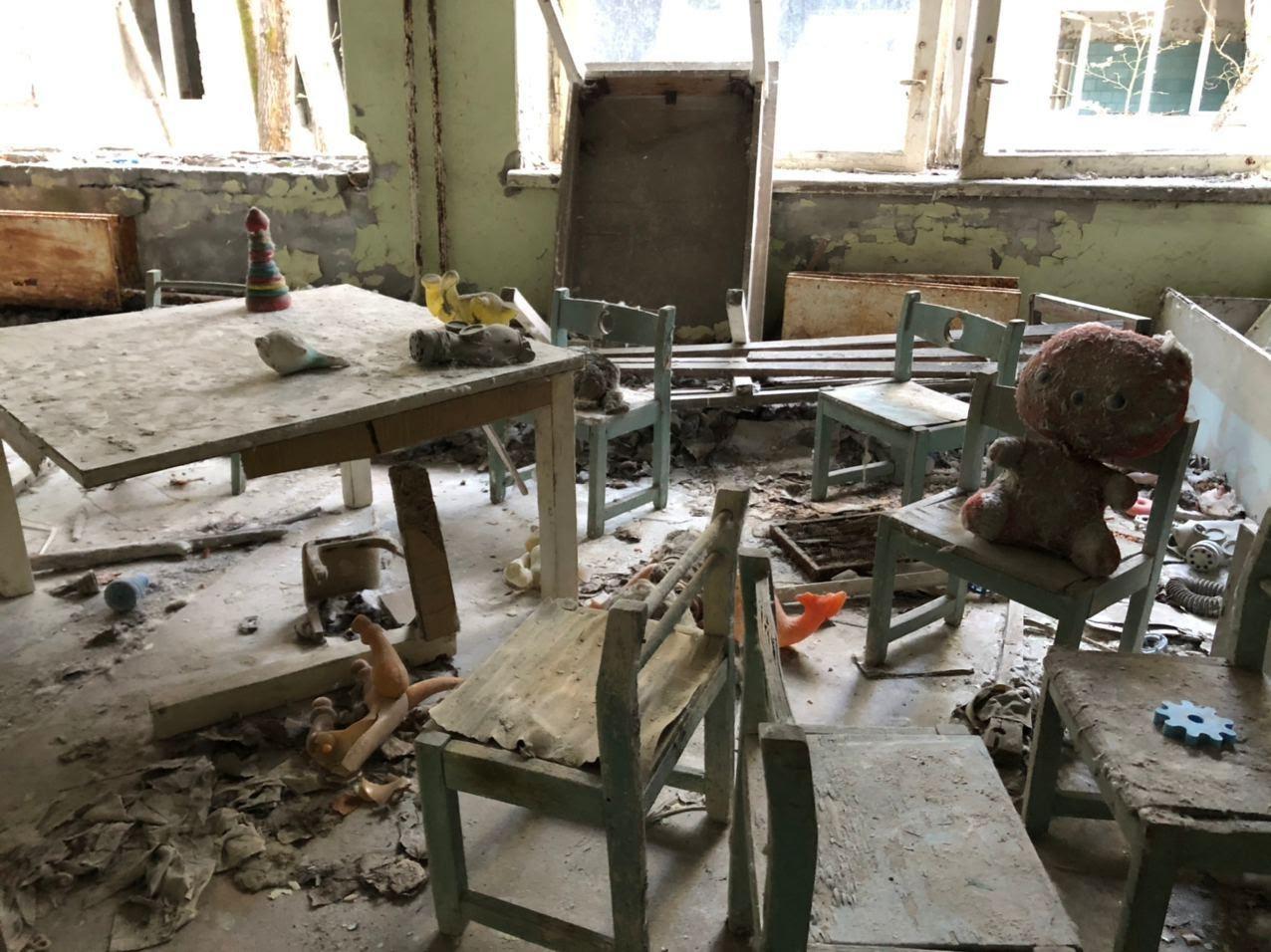
Avanhard Stadium
Pripyat had its own Stroitel Football Club also known as Budivelnyk. Founded in the 1970s, the team competed at district and republican level competitions. Before the construction of the Avanhard Stadium, football matches were held at a small stadium on the outskirts of the city. However, Avanhard was never officially launched, and the club never had a chance to play there. Now the stadium is completely overgrown with trees and shrubs, and the stands are almost completely rotted and crumbled.
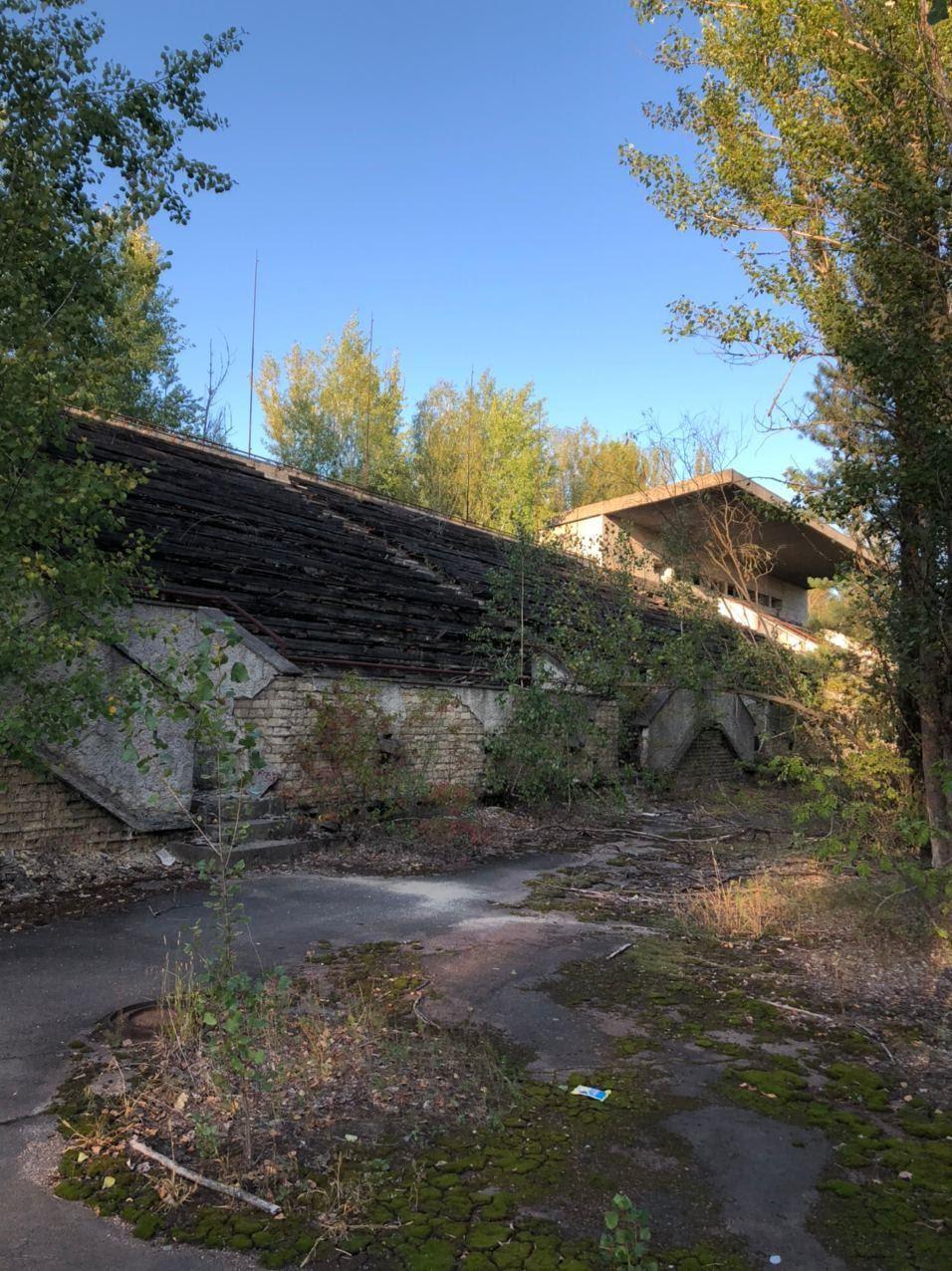 The Palace of Culture Energetik
The Palace of Culture Energetik
Despite its poor state, the former Palace of Culture Energetik still retains its magnificence. You can feel it perfectly when coming closer to it. The palace hosted film screenings, theatrical performances, and sports competitions while it also accommodated a grocery store and a department store. Overall, the building was multifunctional. There were times when life was pulsing through it.
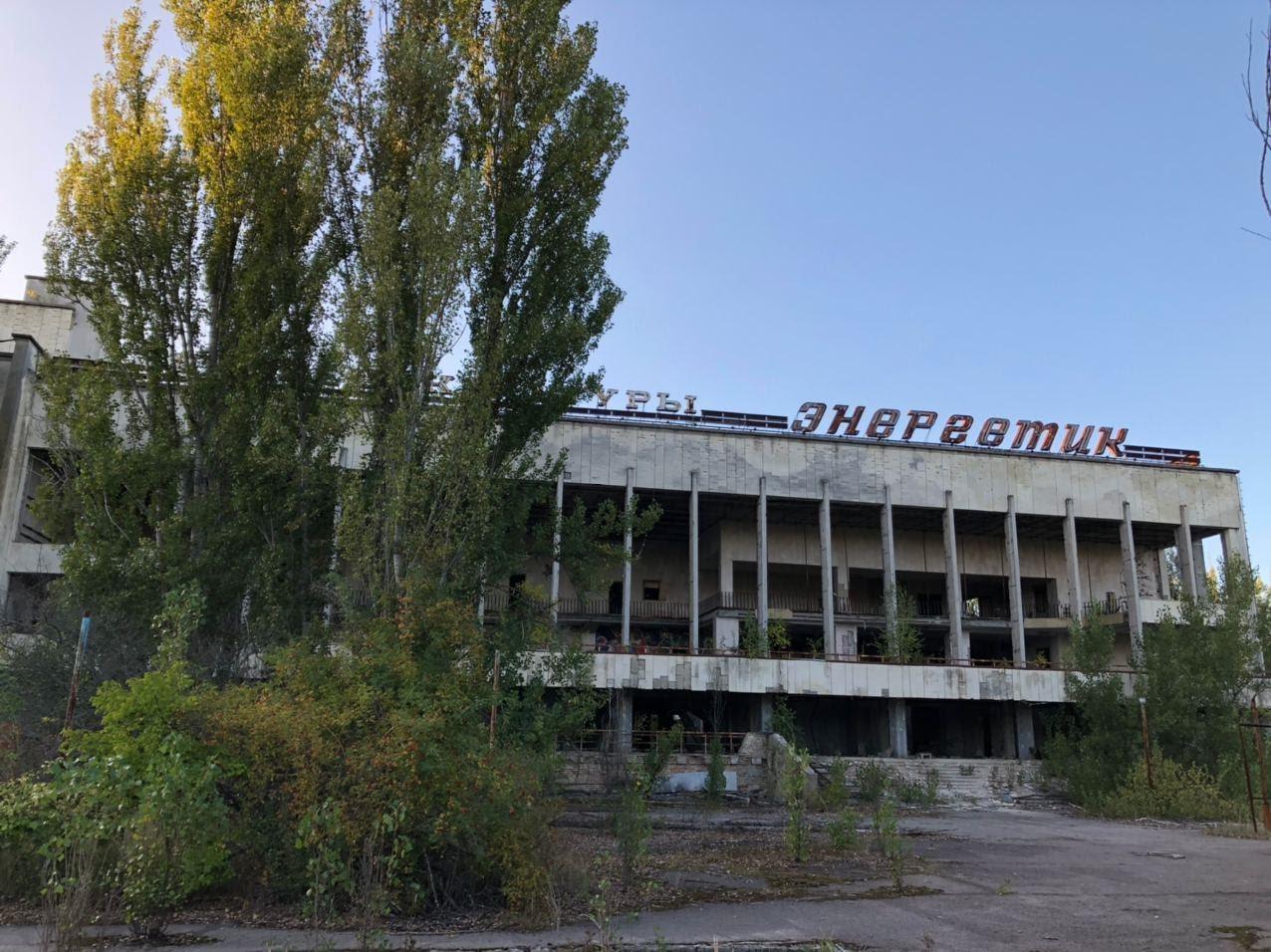 The Polissya Hotel
The Polissya Hotel
The Polissya Hotel is one of the most popular “black tourism” routes – when people visit places of mass death. After the accident, the hotel housed liquidators. A dosimetric post also functioned there. Spotters supporting pilots who were dropping sandbags on the burning reactor worked on the hotel roof as well.
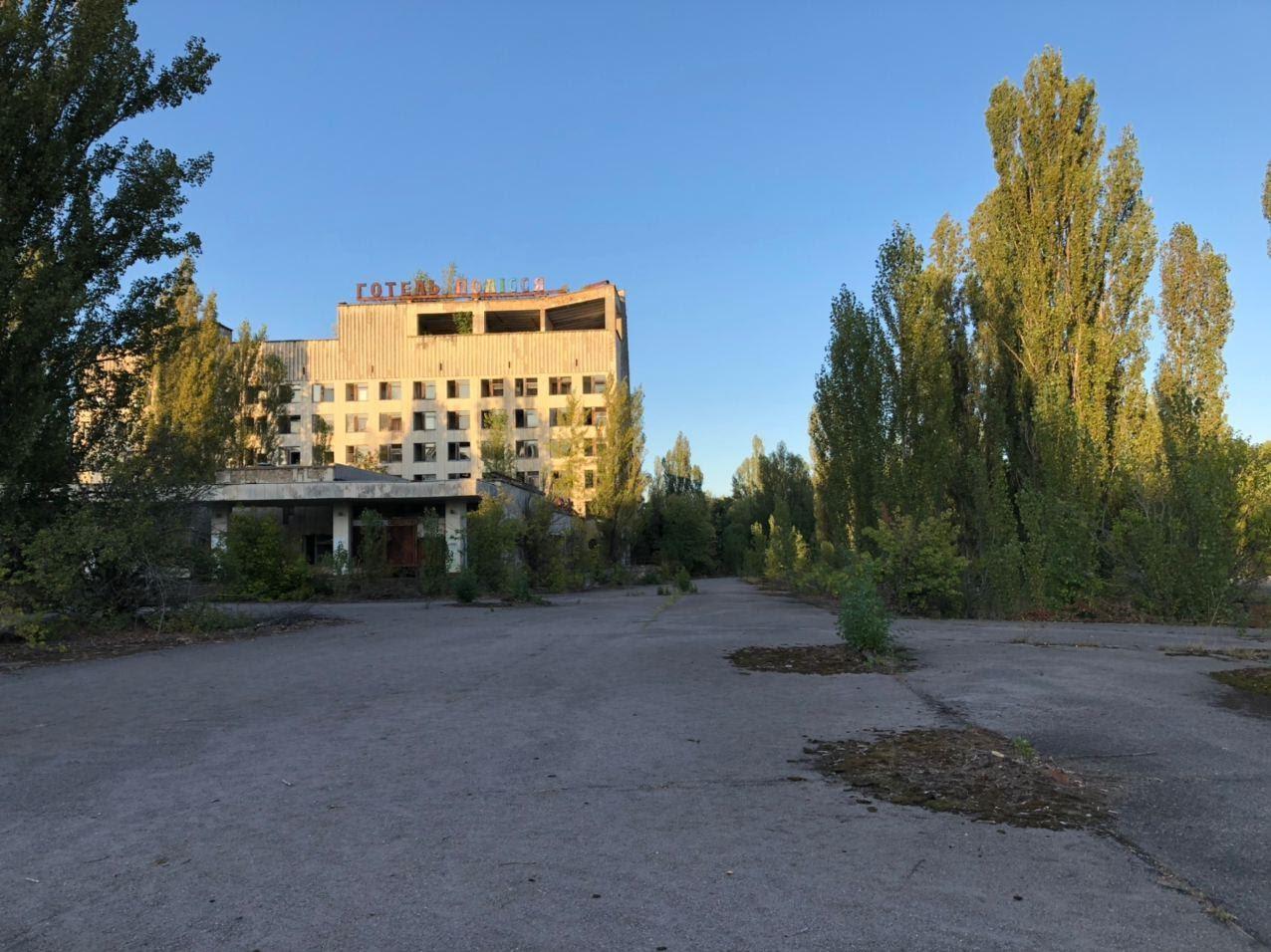 The Central Supermarket in Pripyat
The Central Supermarket in Pripyat
There is a supermarket in the center of Pripyat. It is a former self-service department store. Such stores existed in the USSR since the 1970s, but not in all cities and republics.
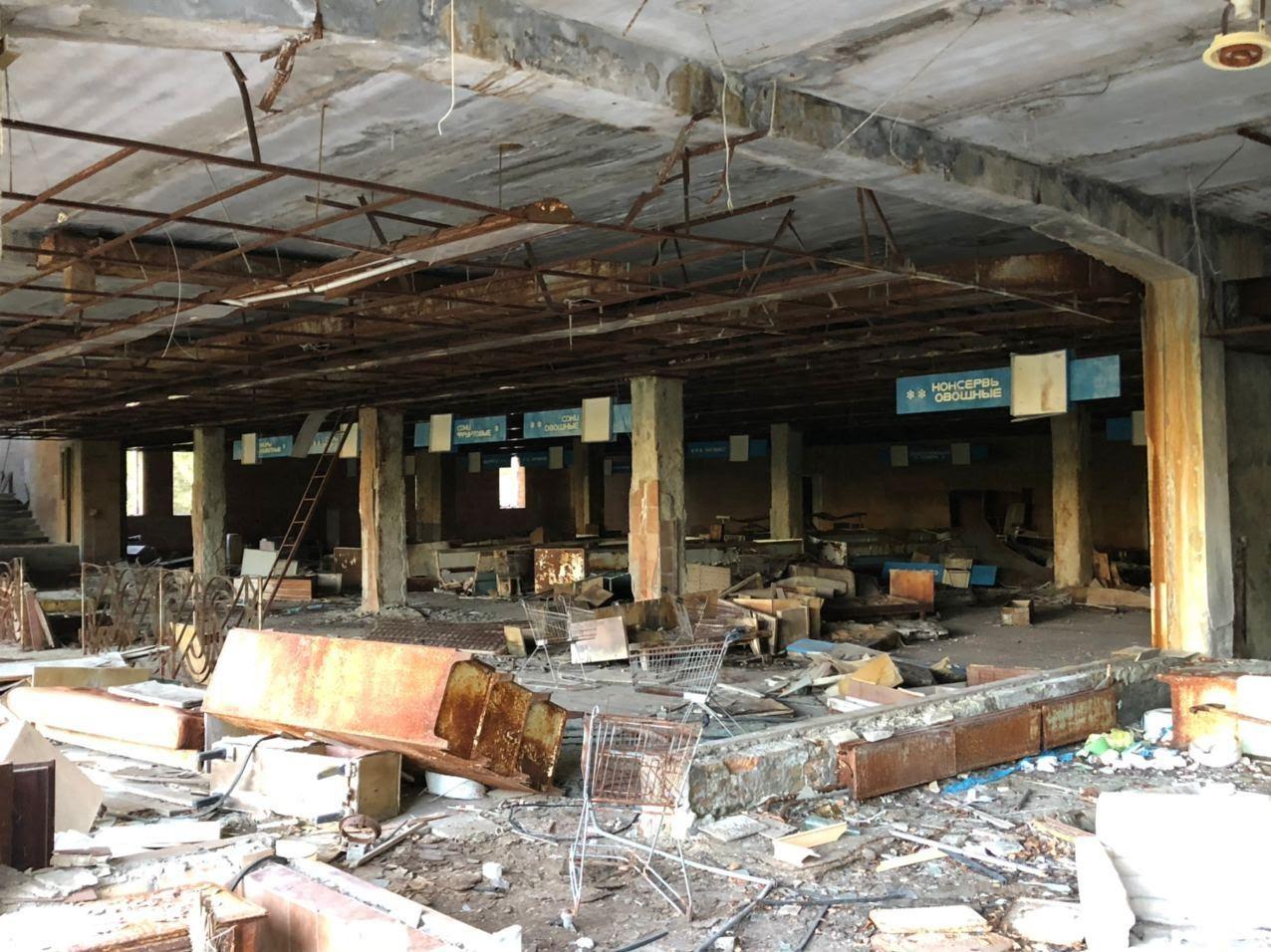 An interesting fact: Pripyat enjoyed an abundance of goods and products. People from Kyiv and other cities went to Pripyat for shopping because you could buy everything there.
An interesting fact: Pripyat enjoyed an abundance of goods and products. People from Kyiv and other cities went to Pripyat for shopping because you could buy everything there.
Pripyat Is the City of Tomorrow
Walking along Pripyat, I realized that it was the City of Tomorrow. It had nice apartment buildings and many entertainment and educational facilities. The city is completely different from other Soviet cities. It was built by youth for youth. When you know how the streets and buildings looked in the 1980s and you see how they look now, a sad thought comes to mind. When looking at another bench, I imagined how people were once sitting on it and discussing something important. While passing by a playground, I saw cheerful children in front of my eyes. It is not true that this is the city of death, as many call it. People were evacuated from Pripyat quickly. It is very sad that vandals broke a lot of things, smashed windows and doors. There is also a huge amount of garbage left by tourists and stalkers in Pripyat.
Chornobyl
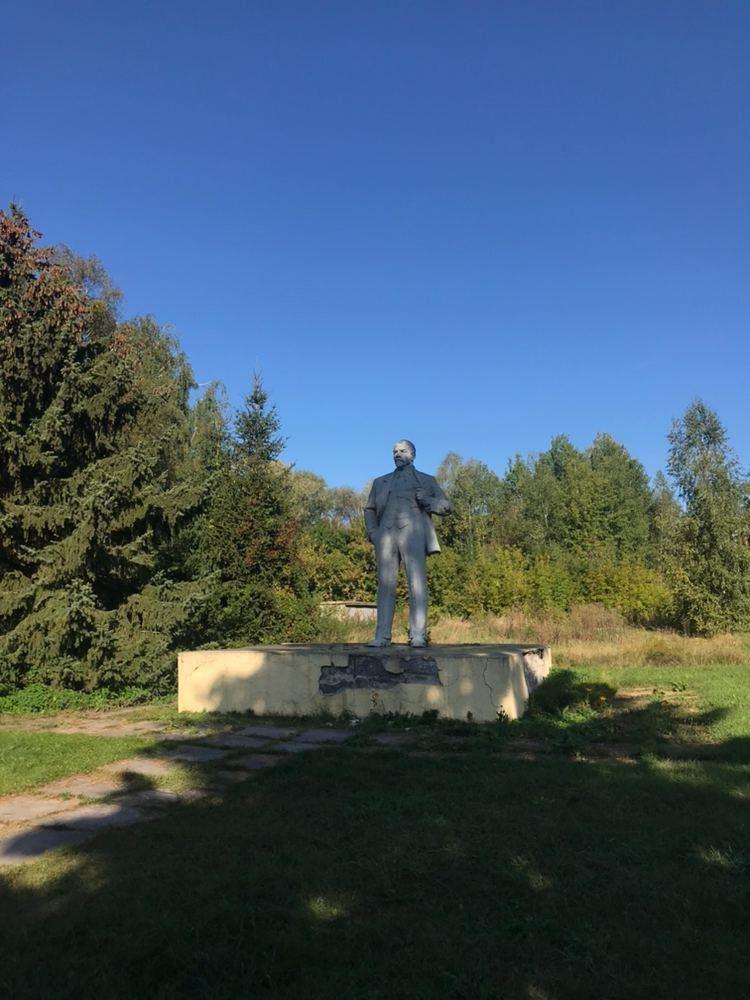 Many people are possibly crossing wires between Chornobyl and Pripyat. They think that photos taken in the Chornobyl Exclusion Zone show Chornobyl. However, this is not true. Chornobyl is a high-security facility now. Only ChNPP workers and personnel serving the station live there. You cannot just visit it when you wish — you will need to get a permit.
Many people are possibly crossing wires between Chornobyl and Pripyat. They think that photos taken in the Chornobyl Exclusion Zone show Chornobyl. However, this is not true. Chornobyl is a high-security facility now. Only ChNPP workers and personnel serving the station live there. You cannot just visit it when you wish — you will need to get a permit.
Chornobyl is also a very quiet town, much like Pripyat. However, people live there, and their routine is quite similar to living in other cities. People always behave in the same way. They have their problems and vices. In the off-hours, many of the workers go to buy alcohol, which is sold only from 19:00 to 21:00. After all, there isn’t much else to do here. By the way, Chornobyl is the only city in Ukraine where decommunization has not been carried out yet. Consequently, one can still see the Lenin Monument on the central square and walk streets named after some of the USSR’s “heroes.”
The History of Chornobyl Is Full of Troubles and Human Deaths
Chornobyl is an ancient city, with the first mention dating back to 1193. Jews made up the majority of the city’s population at that time. In 1541, this territory belonged to the Grand Duchy of Lithuania. In 1793, Chornobyl became a part of the Russian Empire. In the second half of the 18th century, Chornobyl turned into one of the main centers of Hasidic Judaism.
Chornobyl has always had a complicated history. It is full of blood and internecine wars. At first, the Poles tried to force the population into Catholicism. Later, Russia won these lands from the Poles. Then, there were anti-Jewish pogroms of 1905, when a significant part of the Jewish community was massacred, and the city itself was plundered. During World War I, the city suffered from occupation. Then, there were the Soviet-Polish War and the Civil War. Numerous battles between the Reds and the Whites also took place in Chornobyl.
During the Frontier Clearances in 1936, the Polish community of Chornobyl was deported to the steppe of Kazakhstan. The Second World War destroyed the whole Jewish population. Chornobyl was under Nazi occupation from 1941 to 1943.
An interesting fact: There was a Jewish synagogue in Chornobyl. However, the Soviet government turned it into a military registration and enlistment office. A six-pointed Star of David was removed from the facade of the synagogue, and a five-pointed red star was mounted instead.
The Star Wormwood Memorial Complex in Chornobyl
“The third angel sounded his trumpet, and a great star, blazing like a torch, fell from the sky on a third of the rivers and on the springs of water. The name of the star is Wormwood. A third of the waters turned bitter, and many people died from the waters that had become bitter.” (Revelation to John)
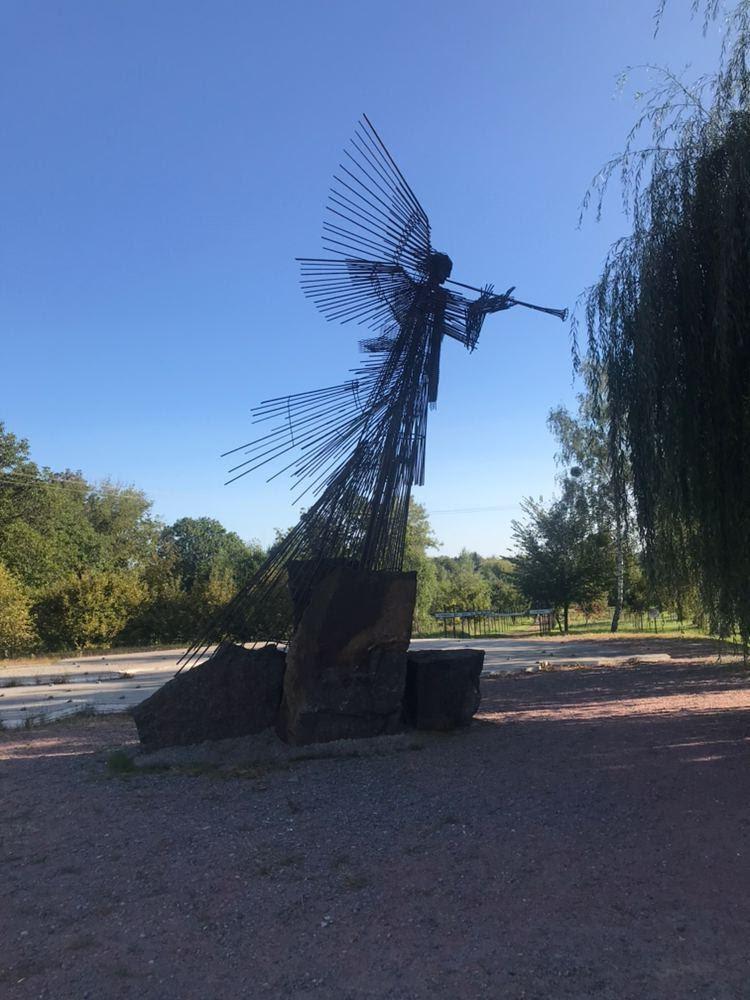 They are written on a memorial stone, near a sculpture that is a part of the prominent Star Wormwood memorial complex. By the way, Chornobyl is one of the wormwood names.
They are written on a memorial stone, near a sculpture that is a part of the prominent Star Wormwood memorial complex. By the way, Chornobyl is one of the wormwood names.
Very religious people lived in the city. When the accident happened at the nuclear power plant, they immediately remembered the words from the Revelations to John. And those words were quite prophetic because the waters were poisoned by a huge amount of uranium emissions and other dangerous elements.
Alley of Tablets with the Names of the Settlements Evacuated due to the Disaster
This Alley is also a part of the memorial complex. It consists of 162 tablets. This is the exact number of settlements evacuated after the nuclear reactor explosion in April 1986.
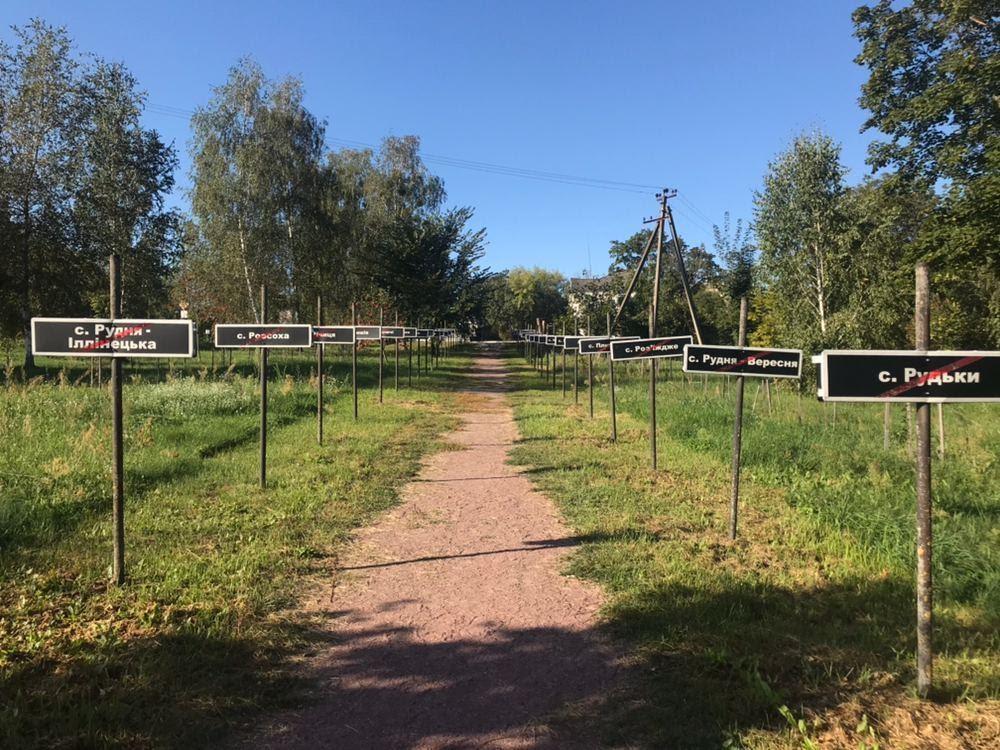
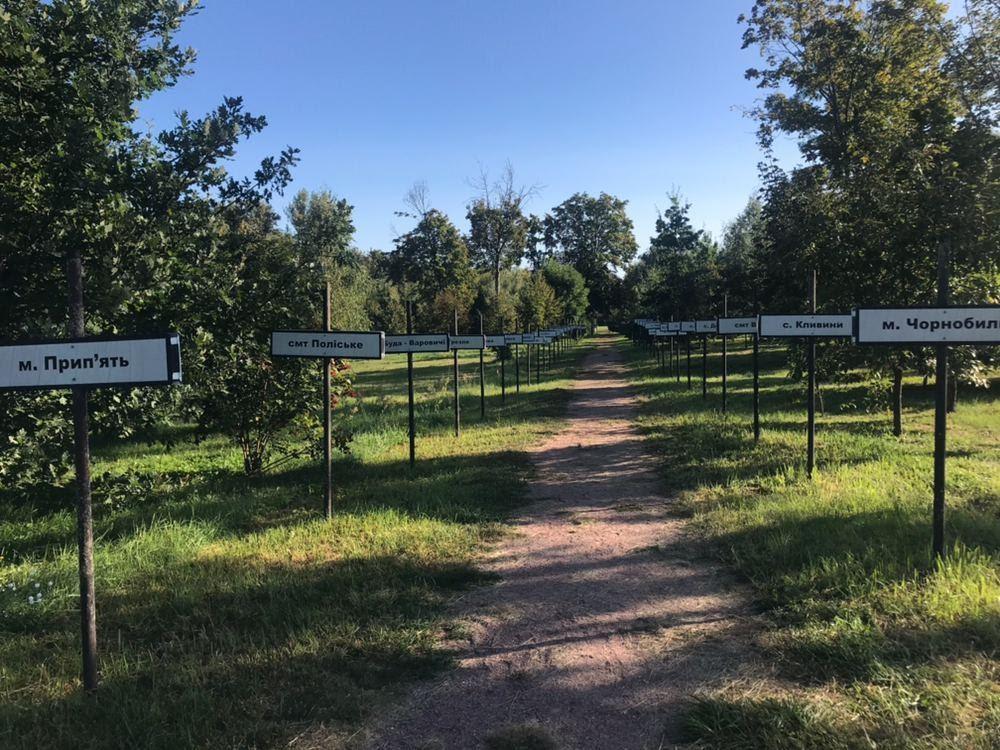 During the evacuation, there were frequent cases when the elderly refused to leave their native lands. They took their cows and other livestock and left for the forest like partisans, based on their experience during the Second World War. It was difficult to convince the elderly that there was something worse than war. Radiation is not visible. It does not hit the back with a stick. It does not shoot. Besides, the evacuation itself was carried out by military forces. For the villagers, they were just another portion of people with weapons who wanted to kick them out of their native land under the pretext of an invisible danger.
During the evacuation, there were frequent cases when the elderly refused to leave their native lands. They took their cows and other livestock and left for the forest like partisans, based on their experience during the Second World War. It was difficult to convince the elderly that there was something worse than war. Radiation is not visible. It does not hit the back with a stick. It does not shoot. Besides, the evacuation itself was carried out by military forces. For the villagers, they were just another portion of people with weapons who wanted to kick them out of their native land under the pretext of an invisible danger.
There is a small riverport in Chornobyl. Some ships are already half-submerged and lying on the side.
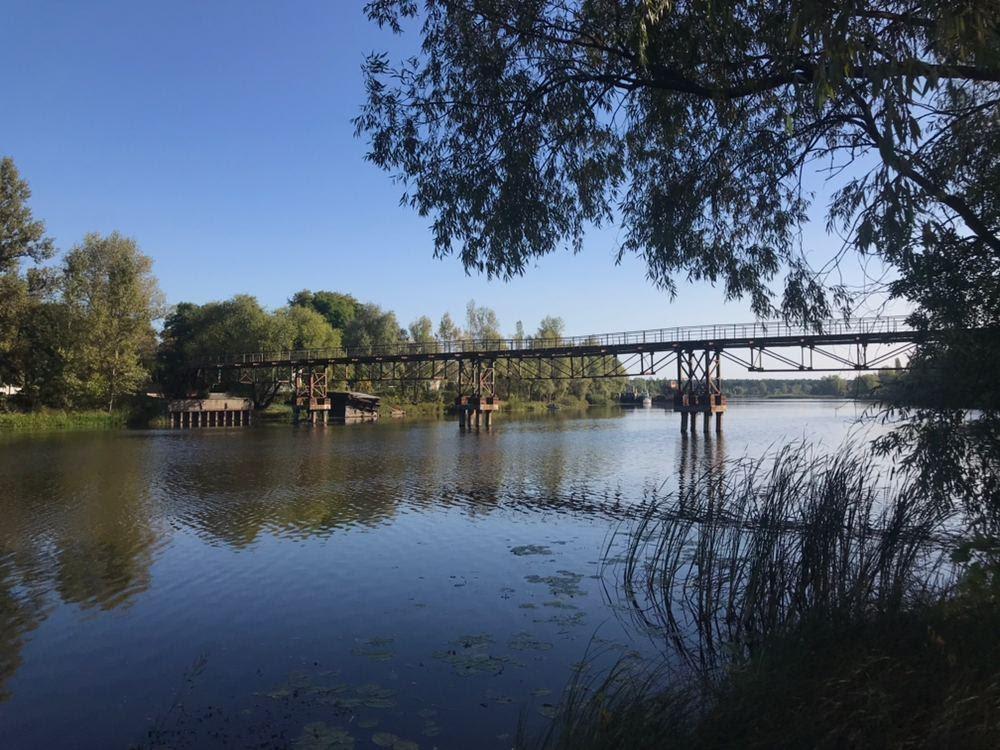 Memorial to the Firefighters Who Died at the Chornobyl Nuclear Power Plant
Memorial to the Firefighters Who Died at the Chornobyl Nuclear Power Plant
This memorial is located near a current fire station. It was made by firefighters themselves.
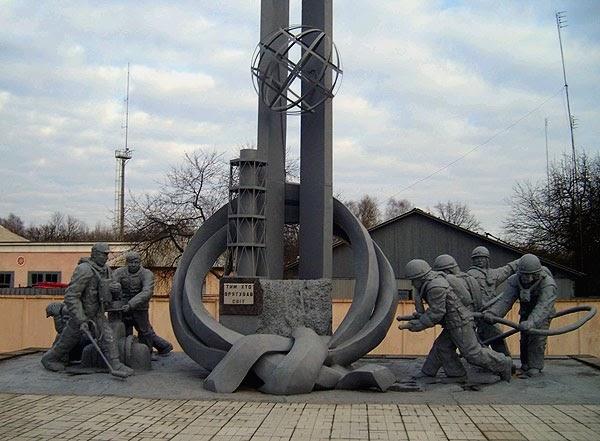 Chornobyl-2
Chornobyl-2
It is a military town built specifically for the maintenance and operation of an over-the-horizon radar (OTH) called Duga. It was a secret city where the Soviet military monitored North America during the Cold War. In the USSR, there was a practice of creating secret settlements in a fairly simple way — just by adding a number to the name of a city. That is how Chornobyl-2 appeared.
The city was marked as an old pioneer camp on all maps. To support this legend, a bus stop was installed on a road that led to Chornobyl. Buses drove up to it, turned around, and drove further along the route. Of course, they did not go to Chornobyl-2.
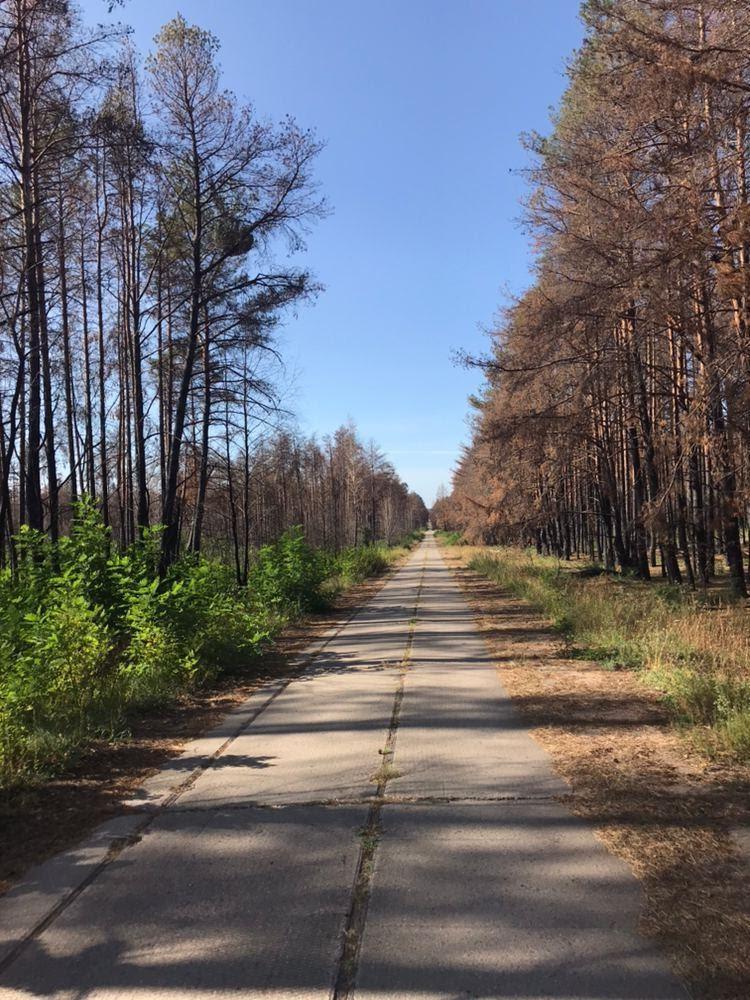 This road is made of aircraft plates. It kind of suggests that it leads to a military facility. The road passes through a picturesque forest where we saw an elk and Przewalski’s horses.
This road is made of aircraft plates. It kind of suggests that it leads to a military facility. The road passes through a picturesque forest where we saw an elk and Przewalski’s horses.
Duga Radar Nicknamed Russian Woodpecker
Chornobyl-2 is famous due to this huge construction.
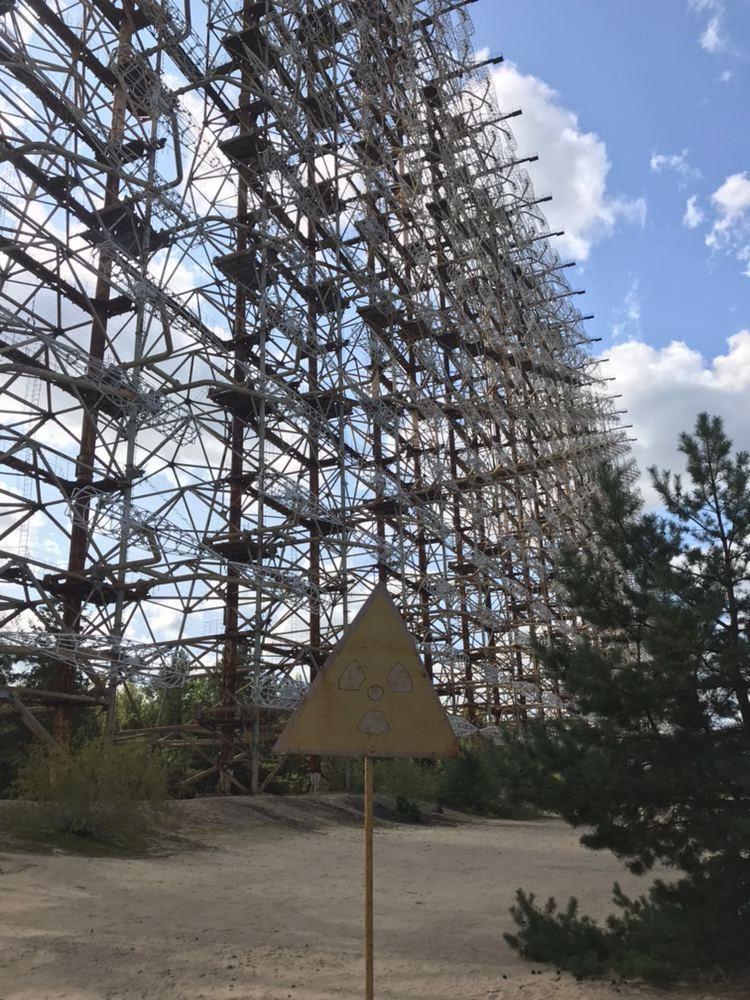 Lenin himself guards the entrance to the military town. There are props left after the HBO filming on its territory.
Lenin himself guards the entrance to the military town. There are props left after the HBO filming on its territory.
Upon passing through a checkpoint and the territory of the town, we reached the Duga.
The receiving antenna of the Duga has a width of 300 and a height of 135 meters. Therefore, it is very difficult to fit it into the phone camera lens.
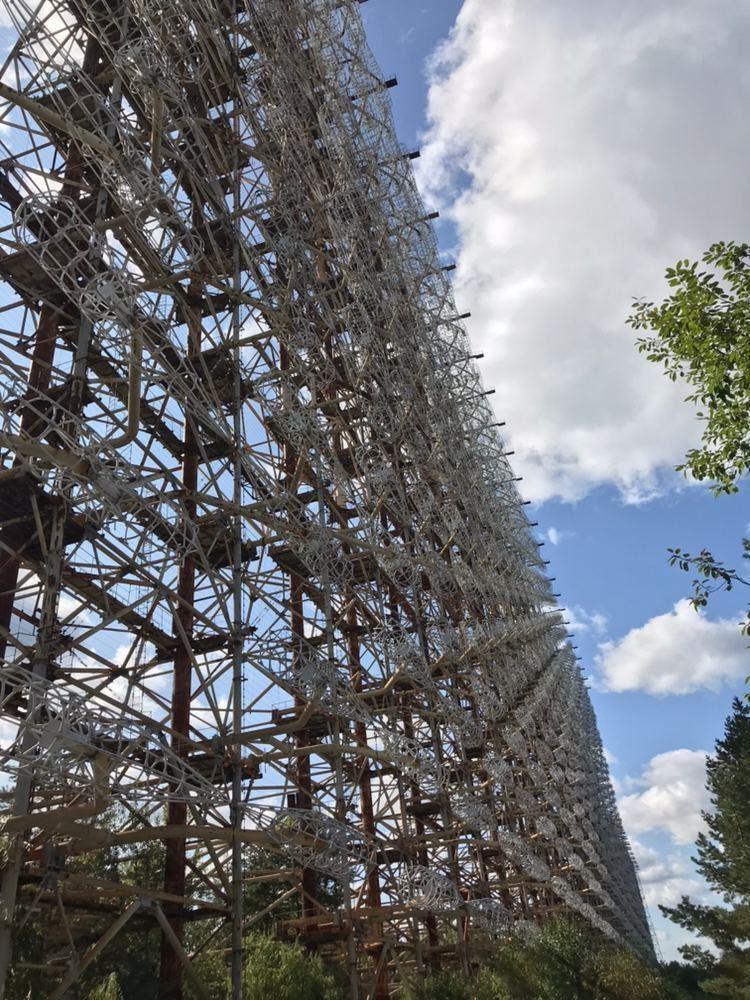
The Duga was a Soviet over-the-horizon radar system used as part of the missile defense early-warning radar network. In simple terms, the USSR wanted to monitor launches of missiles from the territory of the United States. It was necessary to react in time and press the “red button” in response or to shoot down the missiles before they could reach the USSR borders. It was a very secret military facility. Many military servicemen who served in Chornobyl-2 and directly at the Duga did not even know the real purpose of this construction.
Locals put forward different versions: a laser weapon for protection against the United States, a pasta factory, a radar communications center, etc.
Foreigners nicknamed it Russian Woodpecker because of its characteristic sound. Many scientists believed that the USSR authorities tried to zombify its citizens with this “knocking”. The signal was a source for much speculation, giving rise to theories such as Soviet mind control and weather control experiments.
An interesting fact: This “knocking” drove everyone crazy. It was heard on all radio waves, from civil to special frequencies reserved by US aviation and other countries. When it was found out that the sound came from the territory of the Soviet Union, the USA, Great Britain, and Canada protested and asked the USSR to turn off that horrible sound. However, the USSR, as usual, pretended to be surprised and said they did not know what this was all about. After a while, the USA, Canada, and Great Britain provided the USSR authorities with the exact coordinates of the sound source. However, the result was the same – we know nothing about it. Roughly speaking, the USSR authorities were said, “Turn this off; it is located there, and it’s your territory.”
There were three such constructions in the USSR. However, only the Duga Radar in Chornobyl has survived. The station did not work on combat alert duty even a day because errors were found during its testing in the 1980s. Neither station of that type could normally track individual launches of aircraft or missiles, only massive sounds. Therefore, the station was under modernization until 1986. The accident at the ChNPP put an end to the Duga work.
Command and Computer Center
The command center is located near the Duga itself. It is in an emergency condition now. It is better not to go there without a flashlight and comfortable shoes. There are manholes, tunnels, and metalware under your feet. Therefore, you can easily fall or get hurt. It is also worth watching your head, as pieces of iron, lamps, and wires hang from above everywhere. Control panels and metal frames where military computers were installed also managed to survive. The command center can be called a building of one computer with a 5 MB video card, which was a unique engineering solution at that time.
The building has conserved training classes for the military staff. They studied US missiles that the Duga was supposed to control.
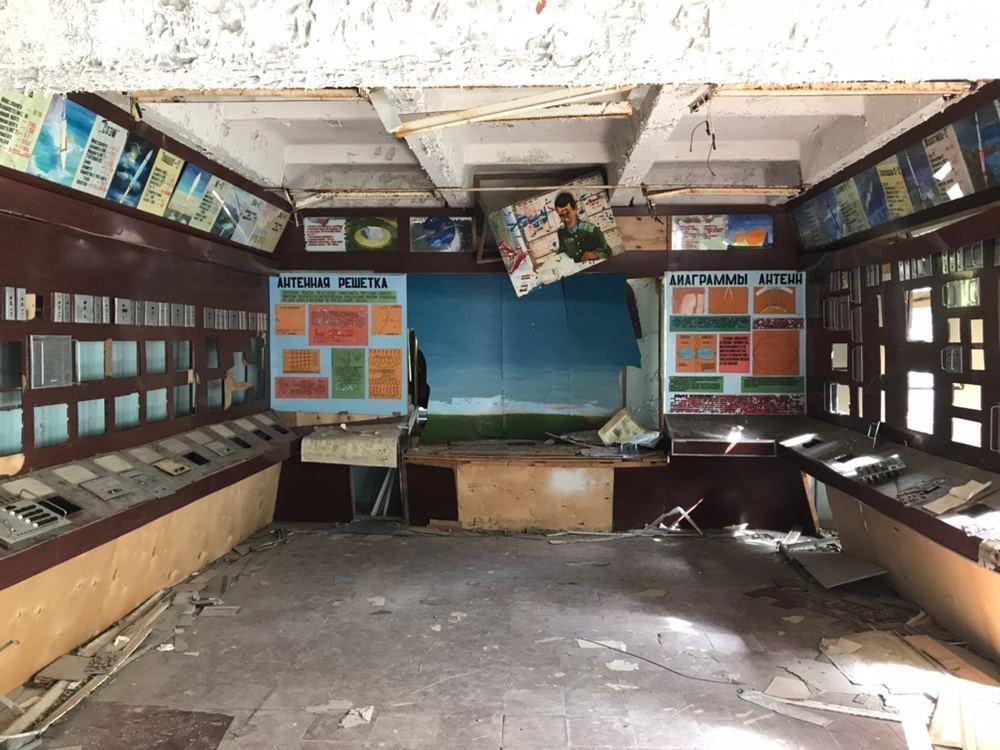 A classroom with a tribune. Folk artists painted charming graffiti on the wall.
A classroom with a tribune. Folk artists painted charming graffiti on the wall.
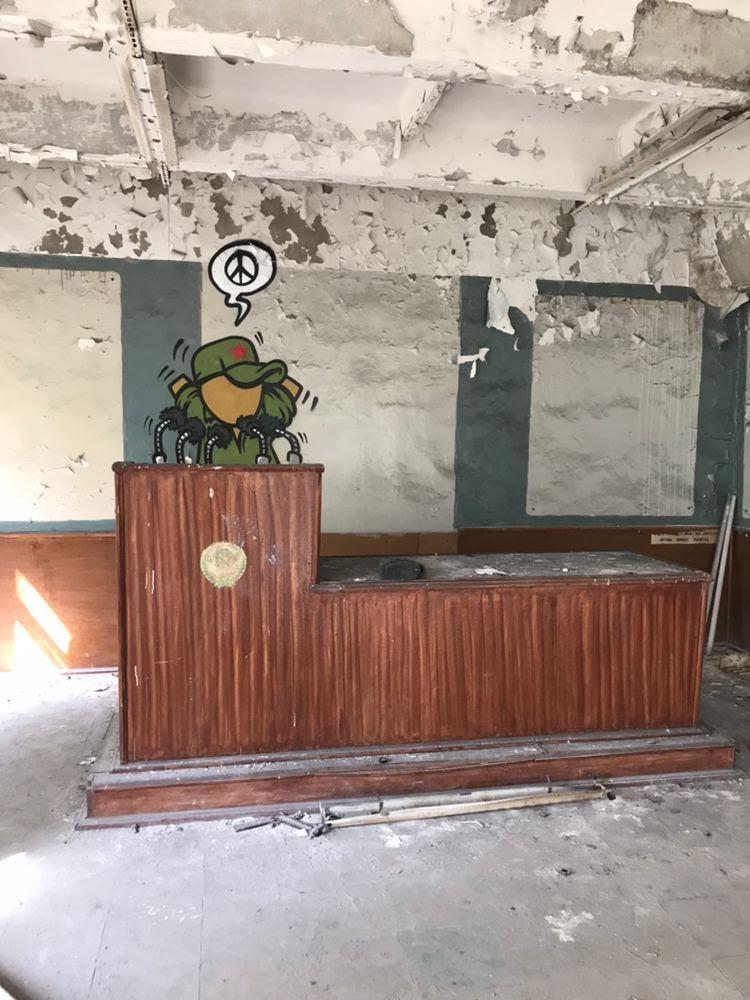 Graffiti in the command center’s dining room
Graffiti in the command center’s dining room
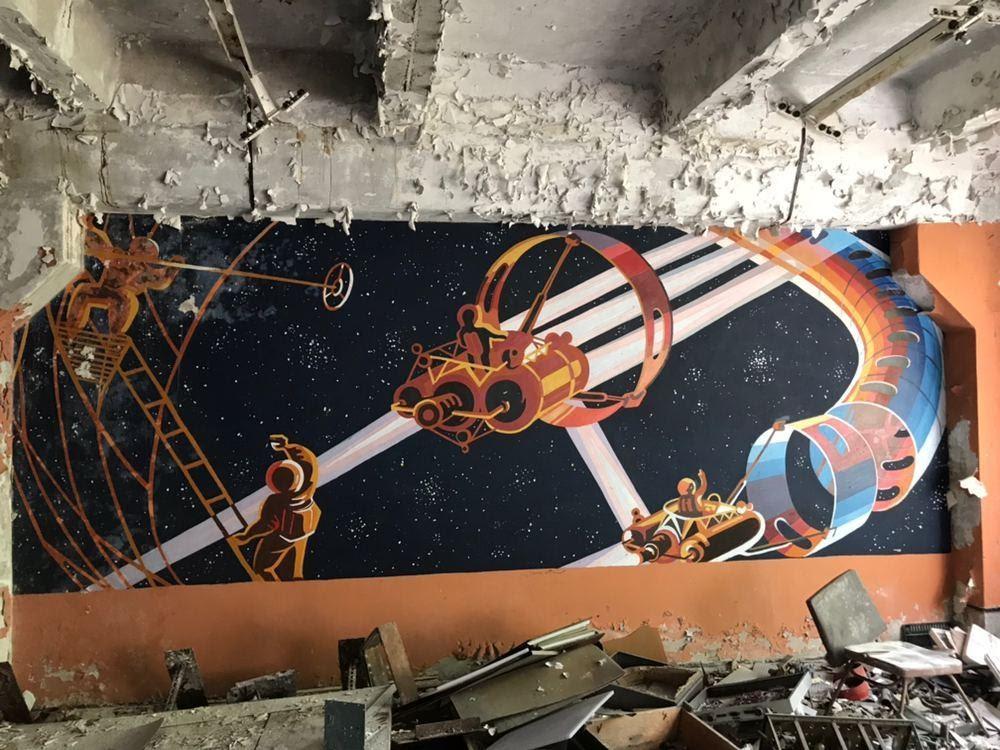 View of the Duga from the roof of the command center
View of the Duga from the roof of the command center
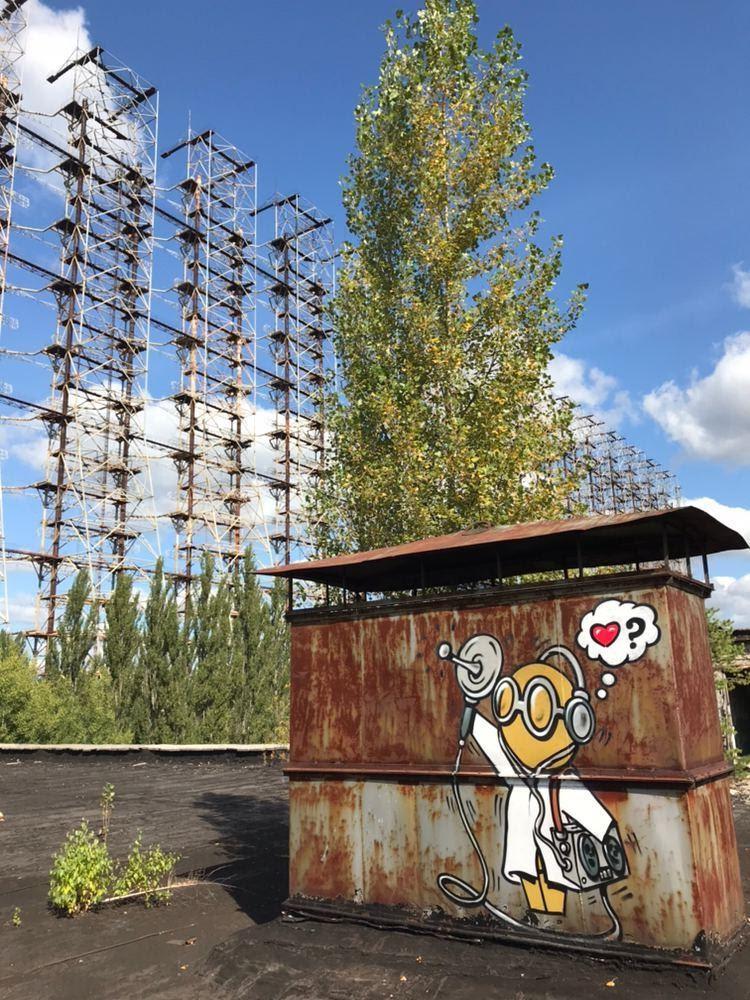 After numerous unsuccessful attempts to decontaminate it from radiation, the military town of Chornobyl-2 was completely abandoned. The Duga Radar has never been on combat alert duty.
After numerous unsuccessful attempts to decontaminate it from radiation, the military town of Chornobyl-2 was completely abandoned. The Duga Radar has never been on combat alert duty.
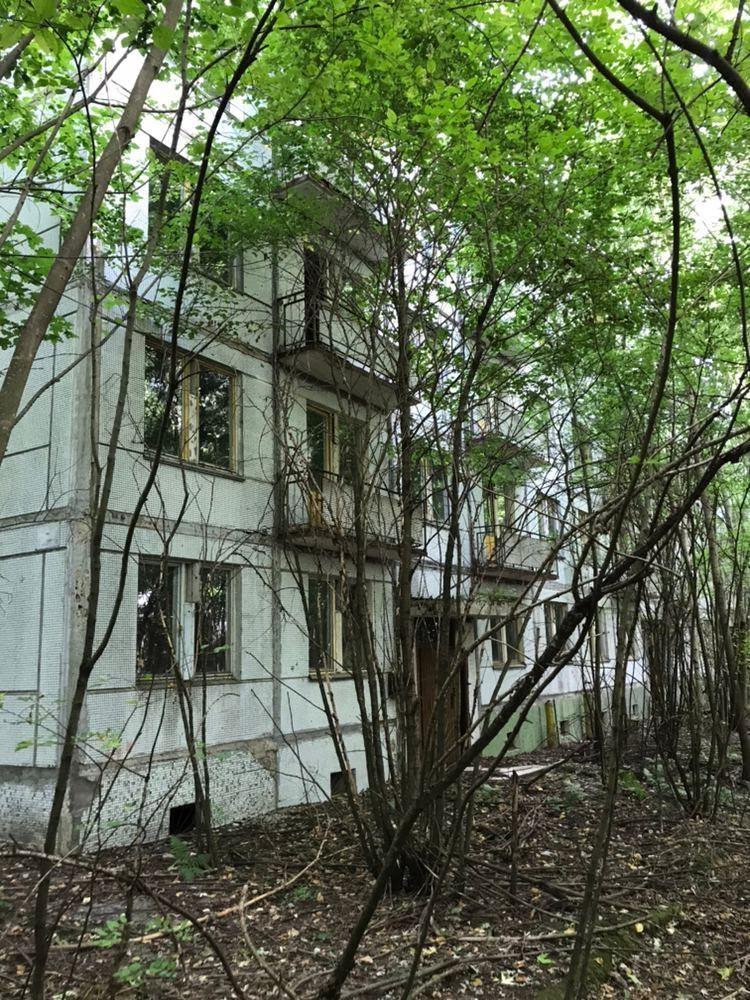 The city itself consists of typical 5-story houses. Now, they are completely hidden in trees.
The city itself consists of typical 5-story houses. Now, they are completely hidden in trees.
On the territory of the city, there was also a Palace of Culture where various events were held regularly.
Chornobyl-2 Fire Station
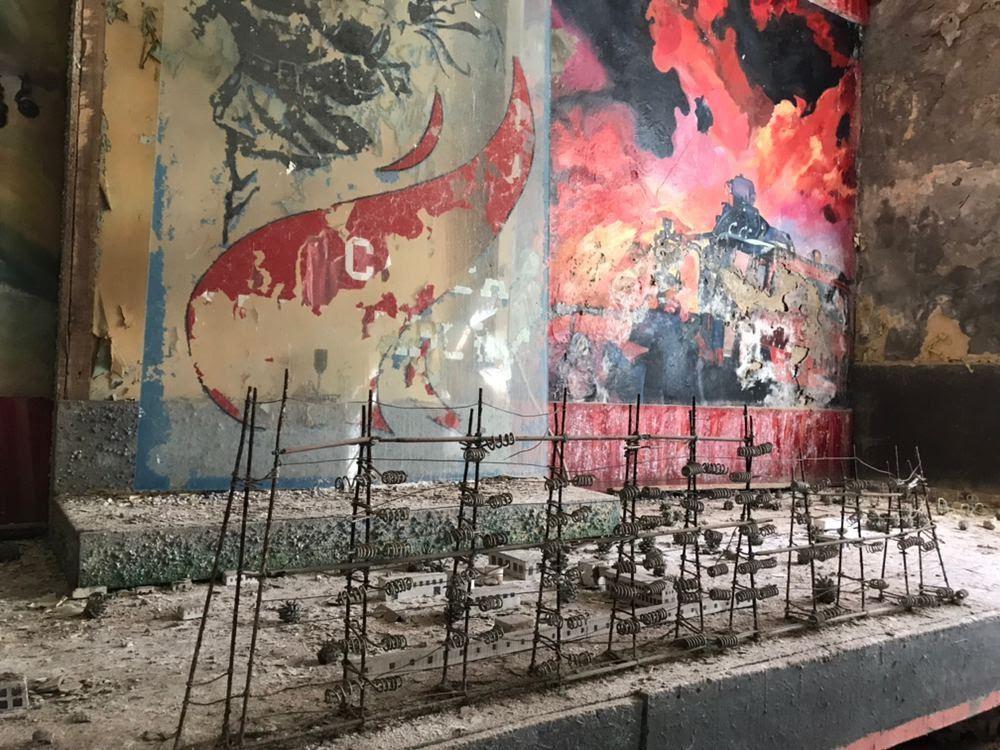 The fire station is preserved to some extent. It has a map of the military town.
The fire station is preserved to some extent. It has a map of the military town.
Generally speaking, the military town lived a completely independent life before the accident.
Lunch at the ChNPP Canteen №19
During the tour, we had lunch at the canteen №19, where the station personnel take meals. The menu has not changed since the 1970s, although the food was very tasty.
 Chornobyl Nuclear Power Plant
Chornobyl Nuclear Power Plant
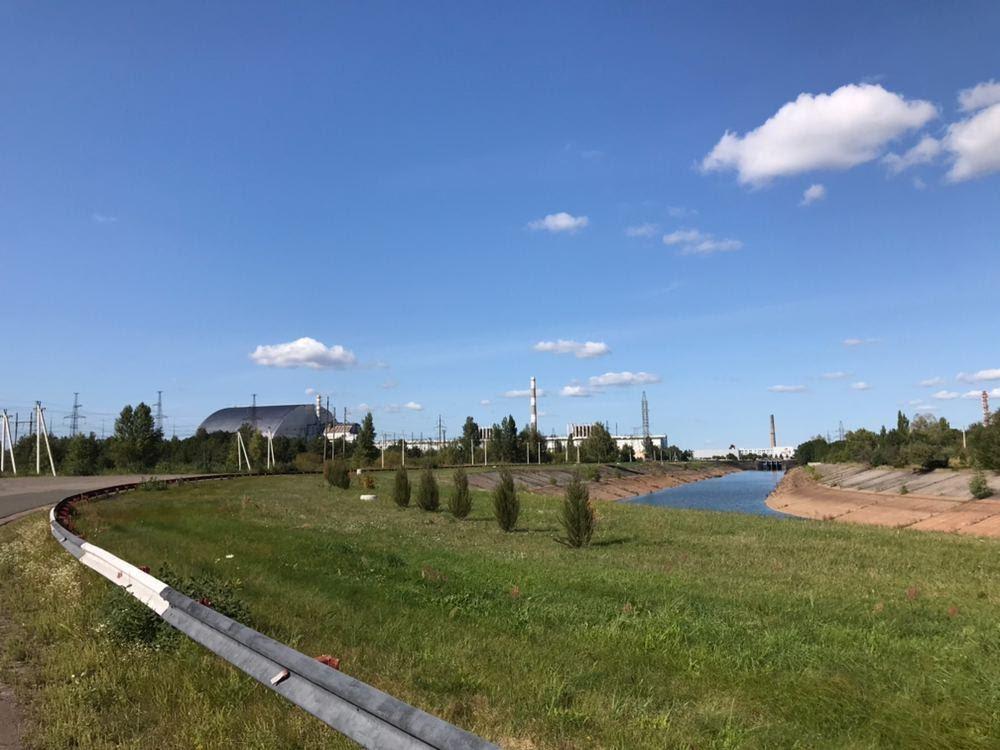 Before coming closer to the New Safe Confinement, we visited a memorial complex constructed as a tribute to those who lost their lives. Each tablet is engraved with a name.
Before coming closer to the New Safe Confinement, we visited a memorial complex constructed as a tribute to those who lost their lives. Each tablet is engraved with a name.
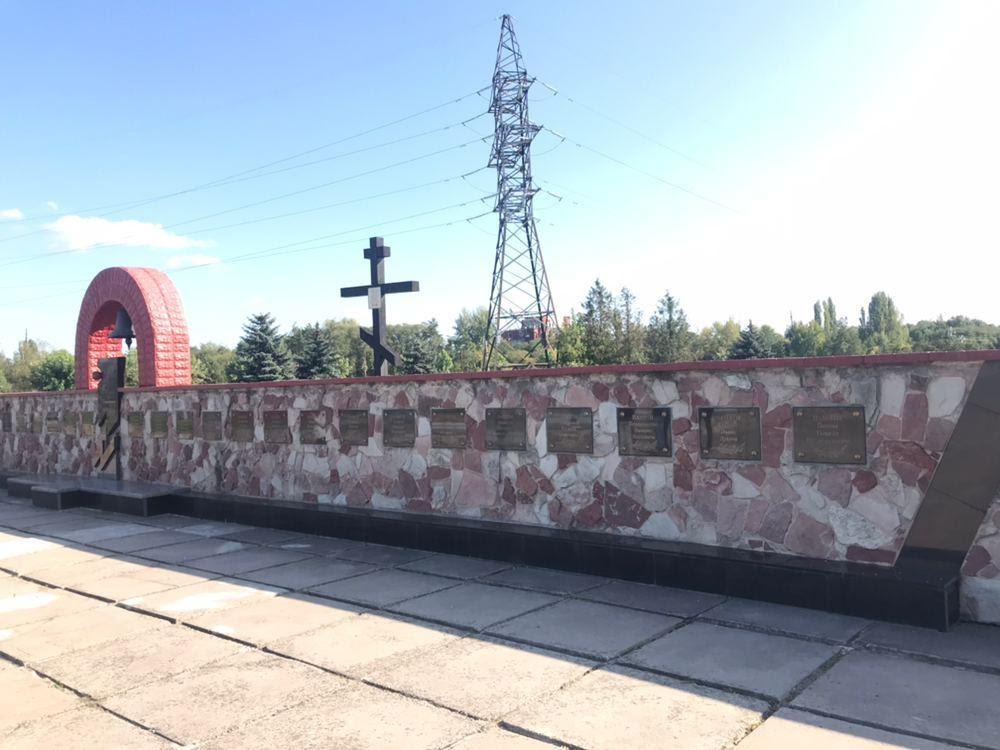 These people were the first to die due to the accident. They got heavily irradiated when they helped save the world.
These people were the first to die due to the accident. They got heavily irradiated when they helped save the world.
The full list of the deceased ChNPP employees:
- Khodemchuk Valery Ilyich, buried under the ruins of the 4th power unit, the body was not found. Senior operator.
- Shashenok Vladimir Nikolayevich, died from radiation sickness, burns, and fracture of the spinal column. Engineer.
- Lelechenko Alexander Grigoryevich, died from radiation sickness developed as a result of four days of work on eliminating the accident together with workers of the electrical shop. Deputy shift manager.
- Shapovalov Anatoly Ivanovich, participated in the localization of the accident at the electrical appliances of the station. Electrician.
- Baranov Anatoly Ivanovich, prevented the fire from spreading to other power units. Electrician.
- Lopatyuk Viktor Ivanovich, stood up to the fire spread. Electrician.
- Konoval Yuri Ivanovich, prevented the fire from escalating. Electrician.
- Brazhnik Vyacheslav Stepanovich, blocked the oil pipeline, preventing the spread of fire. Steam turbine operator.
- Vershinin Yuri Anatolyevich, participated in fire extinguishing in the engine room. Auxiliary operator.
- Degtyarenko Viktor Mikhailovich, in addition to fire extinguishing, carried his colleagues out from under the ruins. Duty operator.
- Ivanenko Ekaterina Alexandrovna, performed her duties as an extra-departmental security service employee until the end.
- Luzganova Claudia Ivanovna, extra-departmental security service employee.
- Kurguz Anatoly Kharlampievich, rescued people from the ruins. Senior operator.
- Kudryavtsev Alexander Gennadievich, examined the reactor after the accident. Senior engineer.
- Novik Alexander Vasilyevich, participated in the fire extinguishing in the engine room. Auxiliary operator.
- Akimov Alexander Fedorovich, was engaged in determining the disaster level and localizing the consequences. Shift supervisor.
- Perevozchenko Valery Ivanovich, saved his subordinates at the cost of his life. Shift supervisor.
- Perchuk Konstantin Grigorievich, stopped the leakage of water from deaerators at the cost of his life. Senior operator.
- Proskuryakov Viktor Vasilyevich, took all measures to prevent the spread of the accident. Senior engineer.
- Sitnikov Anatoly Andreevich, personally examined the exploded reactor. Deputy director of the ChNPP.
- Toptunov Leonid Fedorovich, took all measures to localize the accident at the control panel of the 4th power unit. Senior engineer.
Only one person died as a direct result of the 4th power unit explosion. This is Valery Khodemchuk. He is the first on the list. That is why the New Confinement over the exploded reactor is unofficially named “Sarcophagus.”
This is the sarcophagus of one person, Valery, whose body will forever stay under the ruins of the ChNPP 4th power unit.
Valery Khodemchuk (center left, in a white shirt)
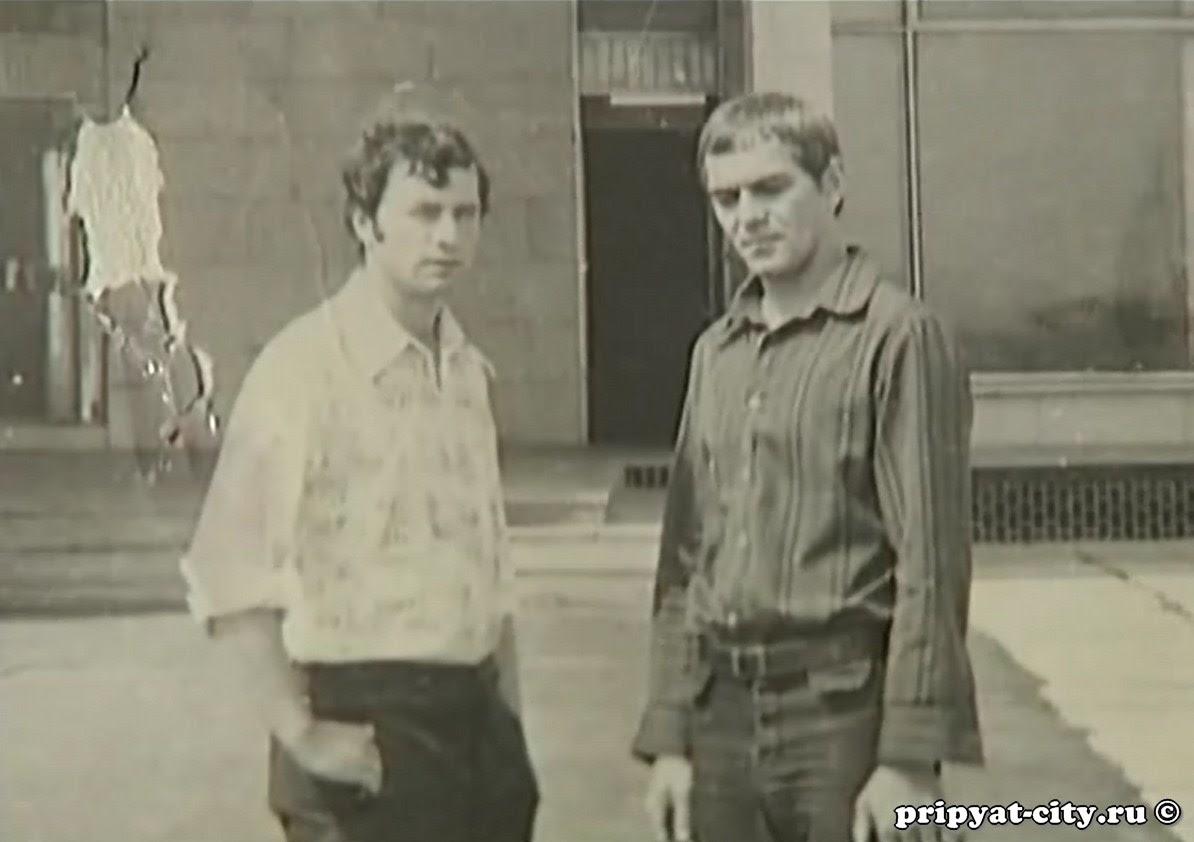
The Observation Deck Near the 4th Power Unit Sarcophagus
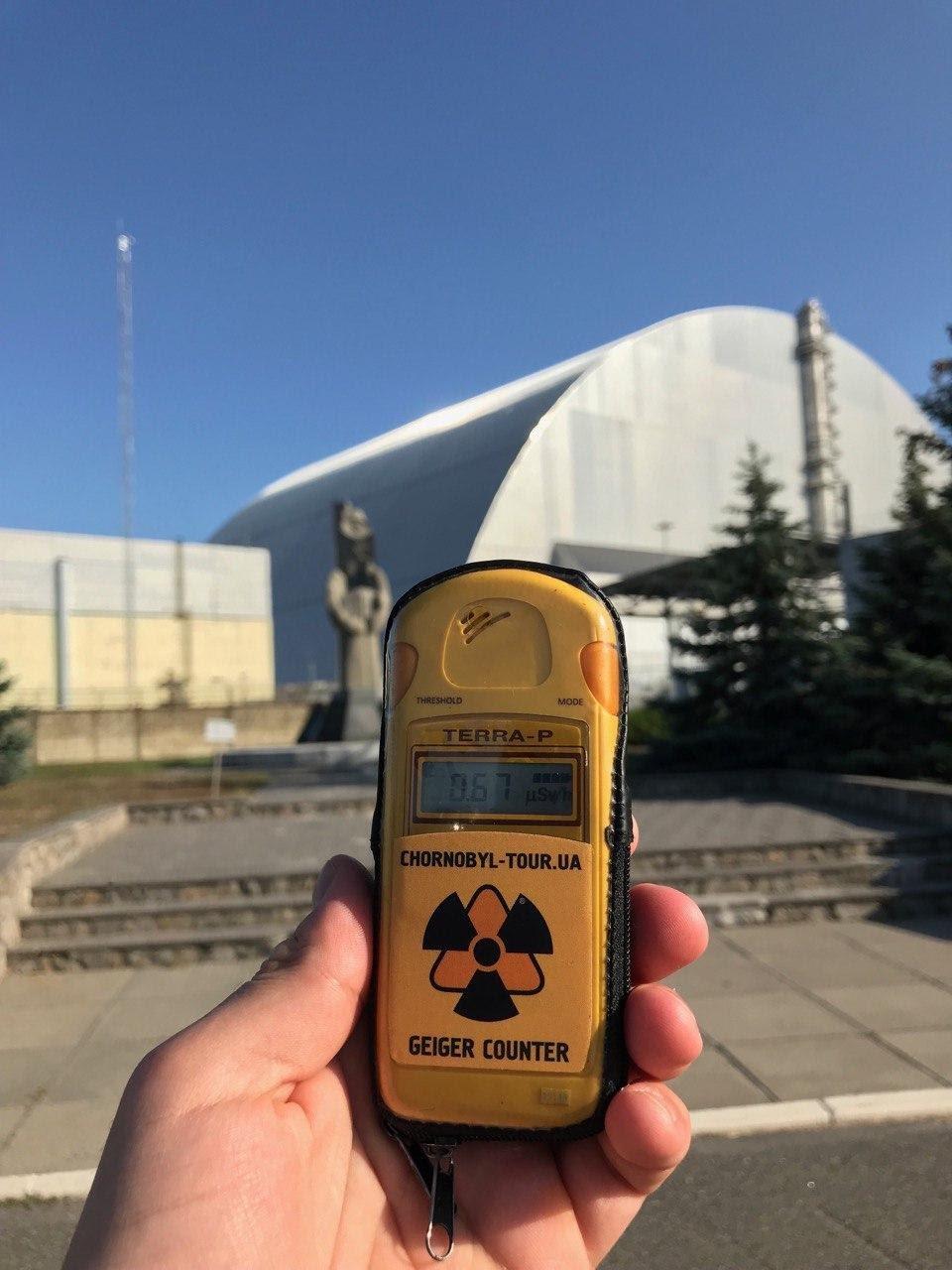 As you can see, the dosimeter shows a little more than twice the norm at 200 meters from the sarcophagus.
As you can see, the dosimeter shows a little more than twice the norm at 200 meters from the sarcophagus.
An Abandoned Cooling Tower of the ChNPP
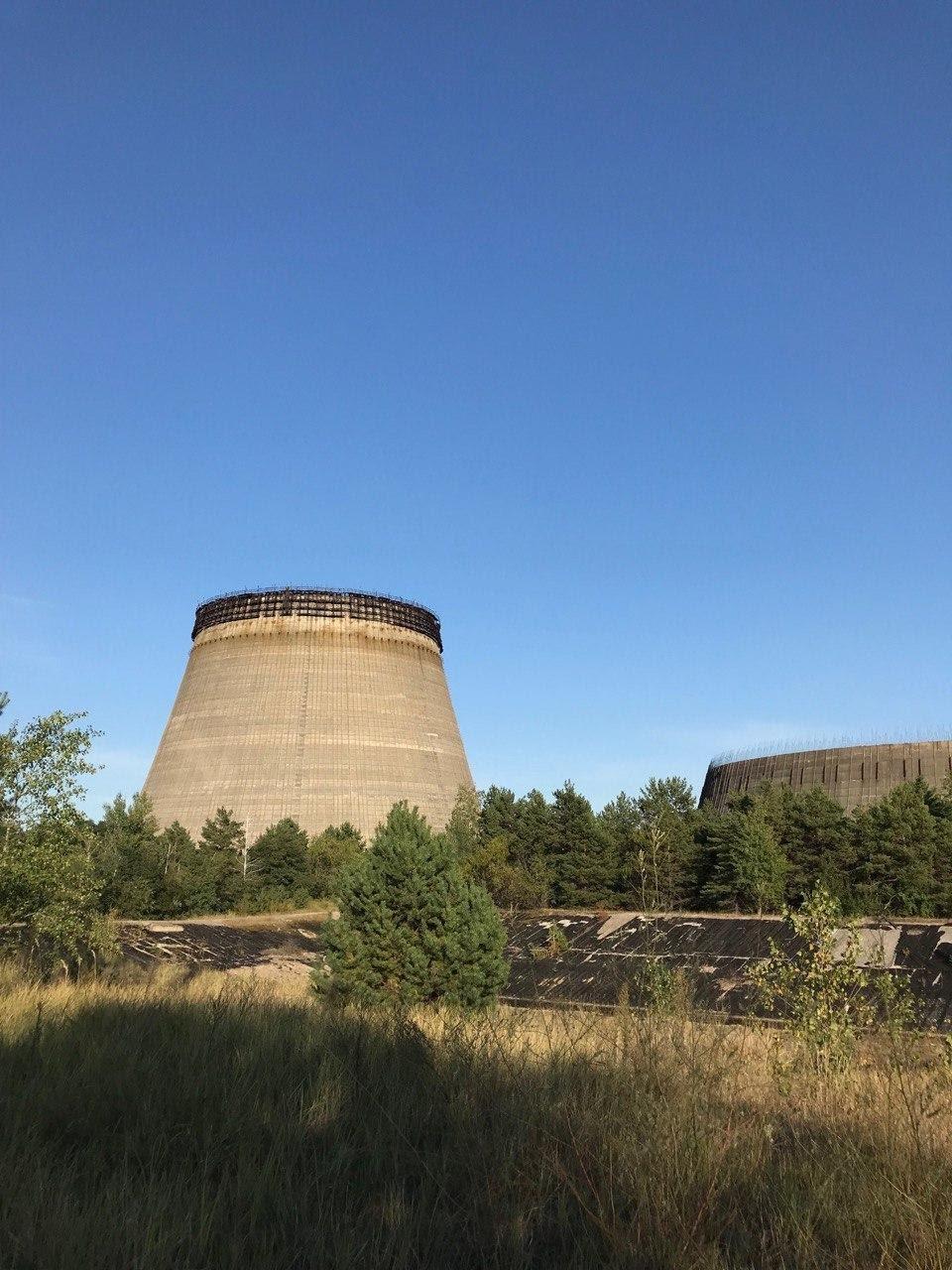 These unfinished cooling towers were projected for cooling nuclear reactors of the third stage of the ChNPP. If the 5th and 6th power units of the ChNPP were finally launched, the capacity of a cooling pond would not be enough. The construction of the 5th and 6th power units continued for some time even after the explosion because everyone believed that the USSR would cope with the accident and everything would be fine.
These unfinished cooling towers were projected for cooling nuclear reactors of the third stage of the ChNPP. If the 5th and 6th power units of the ChNPP were finally launched, the capacity of a cooling pond would not be enough. The construction of the 5th and 6th power units continued for some time even after the explosion because everyone believed that the USSR would cope with the accident and everything would be fine.
However, not only did the USSR fail to cope with the disastrous consequences, the dissolution of the Soviet Union itself took place soon. The Chornobyl accident was the nail in the coffin of the Union of Soviet Socialist Republics.
The dimensions of the power plant cooling tower impress, especially when you are inside it.
An Australian artist created a commemorative mural in honor of a real-life doctor’s photo who stepped out into a hallway after treating a radiation-affected firefighter.
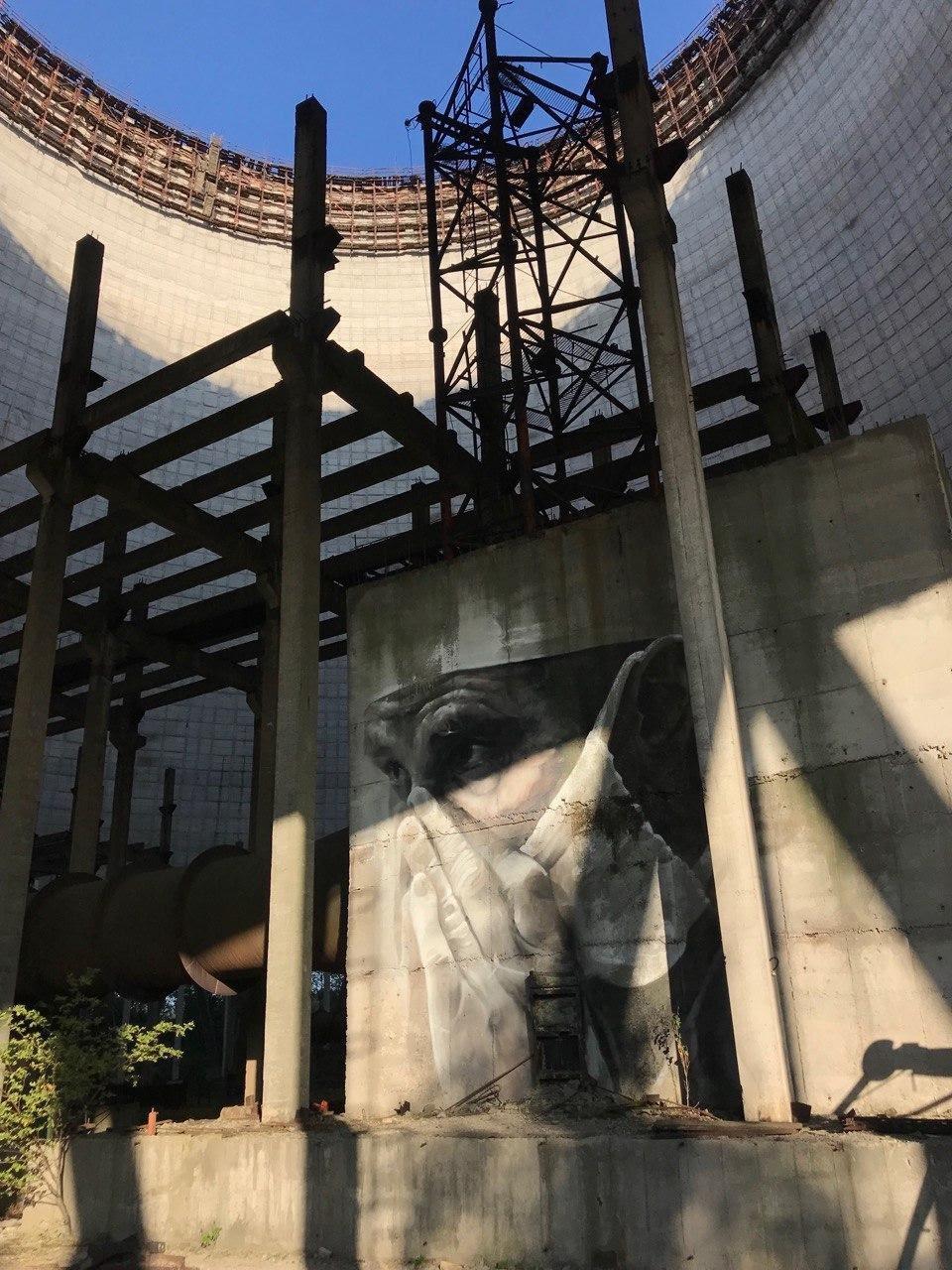 So, it was the end of our little trip to the Chornobyl Exclusion Zone. We were not taken aback, as we had already watched a lot of videos, films, and photos about Chornobyl. However, we experienced certain emotions. It was one of the most interesting trips in our lives. Hurry up to visit this place before vandals completely break everything there.
So, it was the end of our little trip to the Chornobyl Exclusion Zone. We were not taken aback, as we had already watched a lot of videos, films, and photos about Chornobyl. However, we experienced certain emotions. It was one of the most interesting trips in our lives. Hurry up to visit this place before vandals completely break everything there.
The Chornobyl Exclusion Zone Wildlife
I am sure some of you are surprised by how Pripyat looks now. We were simply amazed at how nature recovered after the explosion. According to our guide, the Exclusion Zone wildlife has recovered to the level of 1800. Just imagine that nature in the Zone is now in a much better condition than in 1986. Birds, European bisons, elks, deers, wolves, wild boars, and even bears have returned here. As I have already written above, the herd of Przewalski’s horses, which were brought back here in the 90s, has been feeling perfectly in the Chornobyl Exclusion Zone.
The area around the old nuclear power plant is currently the largest nature reserve in Europe. Nowadays, the ecosystem gives shelter to more plant and animal species than before the disaster.
You can see the real wild nature of Ukrainian Polissya only within the Zone.
Because there are no humans here!
Conclusion
As strange as it may sound, Chornobyl has turned into an incredible place now. Yes, there was a terrible disaster. The earth here is saturated with radiation, tears, and blood. However, change is all around us. Thanks to what was created by nature in those places, Chornobyl is one of the quietest and most beautiful places on Earth now. A tour of Chornobyl will not leave you insensitive to this place. You will remember it for a lifetime.
FAQ
Can I visit Chornobyl now?
With the beginning of Russia’s full-scale war against Ukraine, excursions to Chernobyl stopped.
The Chornobyl zone was under occupation, and Russian military personnel managed to get infected with radiation because they were digging trenches in the «Red Forest».
Is Chornobyl safe now?
It is not the easiest question. If you book a special tour to Chornobyl, you will only be shown safe places. And it is really safe now in certain locations. Animals and birds have returned. But, of course, there are also “dirty” places with an increased radiation level.
How can I go to Chornobyl?
Presently, you can legally go to Chornobyl only as a member of a tourist group. Yet, there are also stalkers who enter the Zone illegally, bypassing checkpoints and hiding from the police and guards. Nowadays, you can even find illegal guides to Chornobyl. However, foreigners should not use their services. There have been frequent cases when such guides abandoned their people. As a result, foreign tourists had to surrender to the police.
How much does it cost to visit Chornobyl?
It all depends on the company offering the tour. On average, the price of a one-day trip to Chornobyl will cost $100 per person. A two-day tour starts from $250 per person. There are also custom tours, with the price starting from $300.
How many days should I spend in Chornobyl?
It’s up to you to decide. I went on 2-day tours twice because I have been fascinated by the history of this place since childhood. If you come to Ukraine from afar, I recommend going to Chornobyl for a minimum of two days. If you order a one-day tour, you will have to run around in a hurry. Thus, you won’t be able to stop and take a closer look. Even two days, to be honest, was not enough for me. So, I returned to the Chornobyl Exclusion Zone for 2 more days.
NomadicGeorge
I'm a 26-year-old digital marketer with a passion for exploring the globe. Having journeyed through 20 countries, my love for sports, history, adventure, and hiking has only grown. Traveling isn't just a hobby for me; it's a way of life. Join me as I share my experiences from around the world.
